-
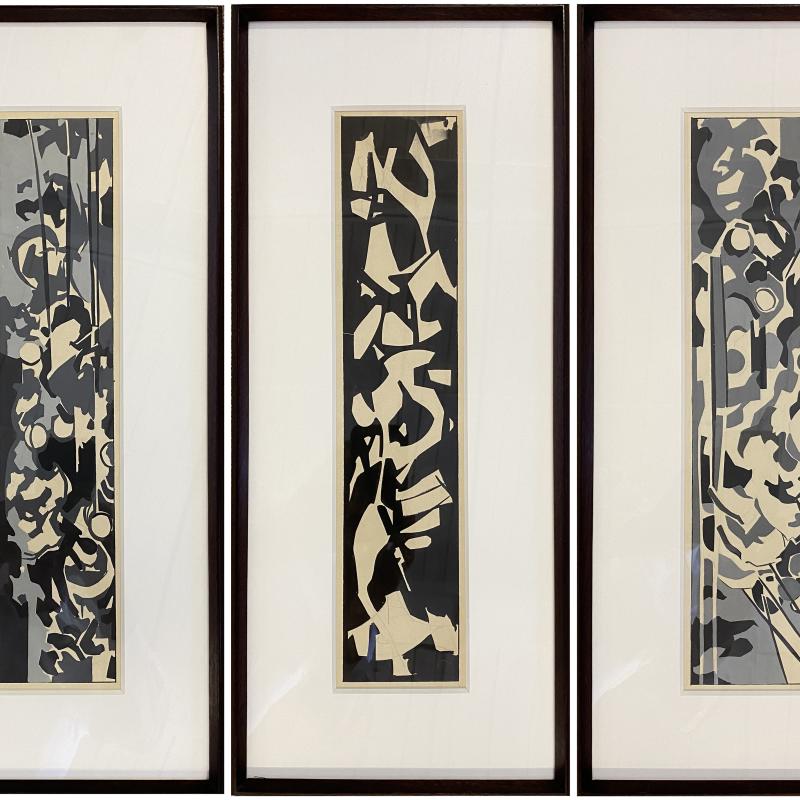 Carl HoltyStudies en Grisaille #999, 5 parts, NDGouache on artist board15 x 3 inches,
Carl HoltyStudies en Grisaille #999, 5 parts, NDGouache on artist board15 x 3 inches,
Framed: 20 3/4 x 8 3/4 (each)Marked: Estate of Carl Holty (Estate stamp rear of frame, each)
-
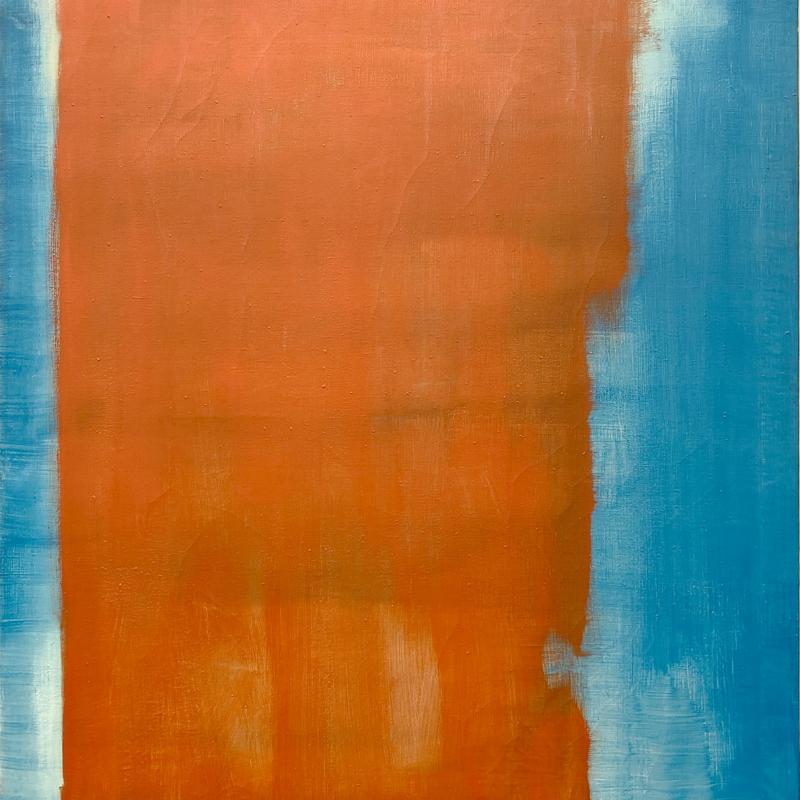 Carl HoltyDrum Red, early 1960’sOil on canvas58 x 44 inches,
Carl HoltyDrum Red, early 1960’sOil on canvas58 x 44 inches,
Framed: 61 x 46 1/2 inchesSigned lower right: Holty, Estate of Artist
-
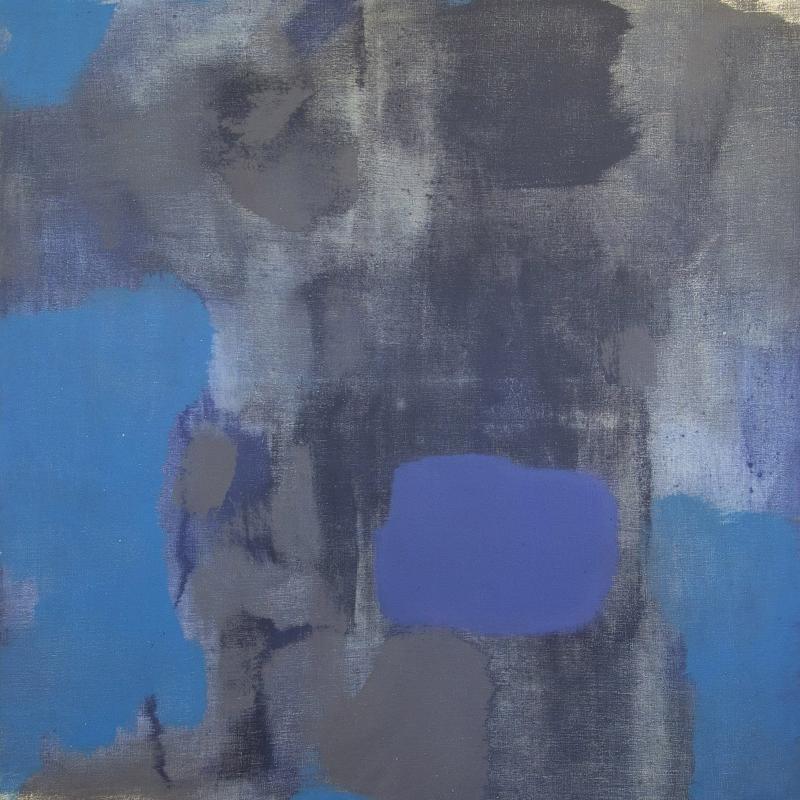 Carl HoltyMonument, early 1960’sOil on canvas60 x 46 inches,
Carl HoltyMonument, early 1960’sOil on canvas60 x 46 inches,
Framed: 62 x 48 1/2 inchesSigned: Holty lower right
-
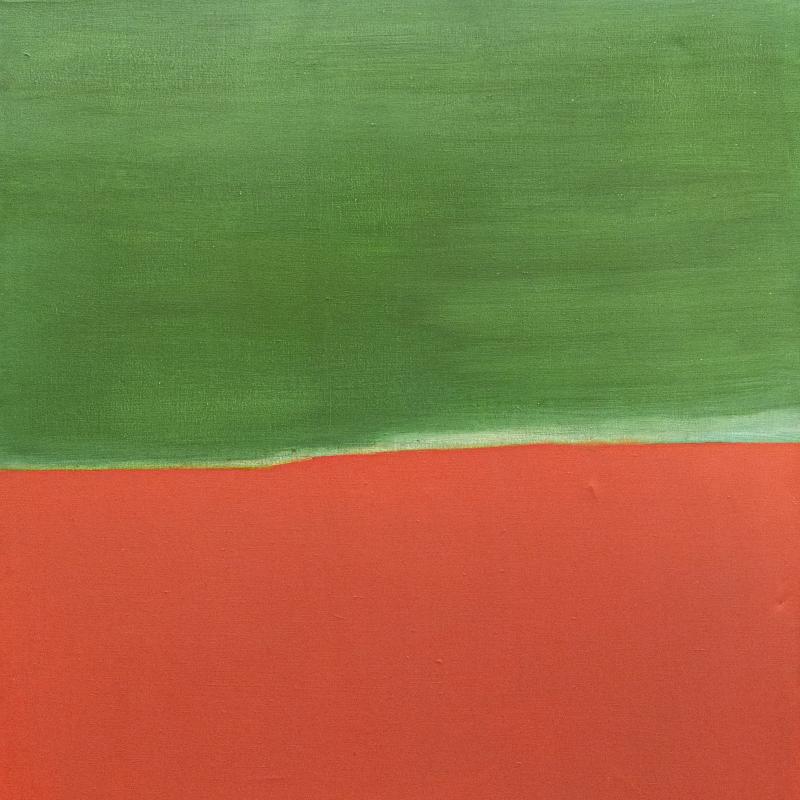 Carl HoltyPink Sand, early 1960’sOil on canvas48 X 36 inches,
Carl HoltyPink Sand, early 1960’sOil on canvas48 X 36 inches,
Framed 49 1/2 x 37 3/4 inchesSigned: Holty (l.r.)
-
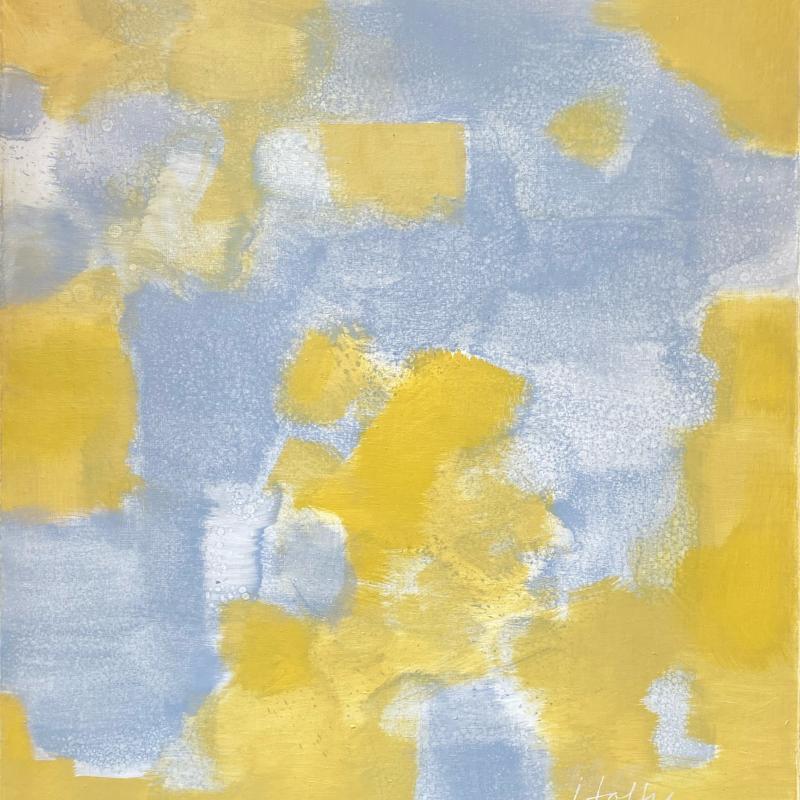 Carl HoltyLight Gray, Yellow, c. 1971Oil on canvas66 x 55 inches
Carl HoltyLight Gray, Yellow, c. 1971Oil on canvas66 x 55 inches
Framed: 68 1/4 x 57 inchesSigned: Holty lower right
-
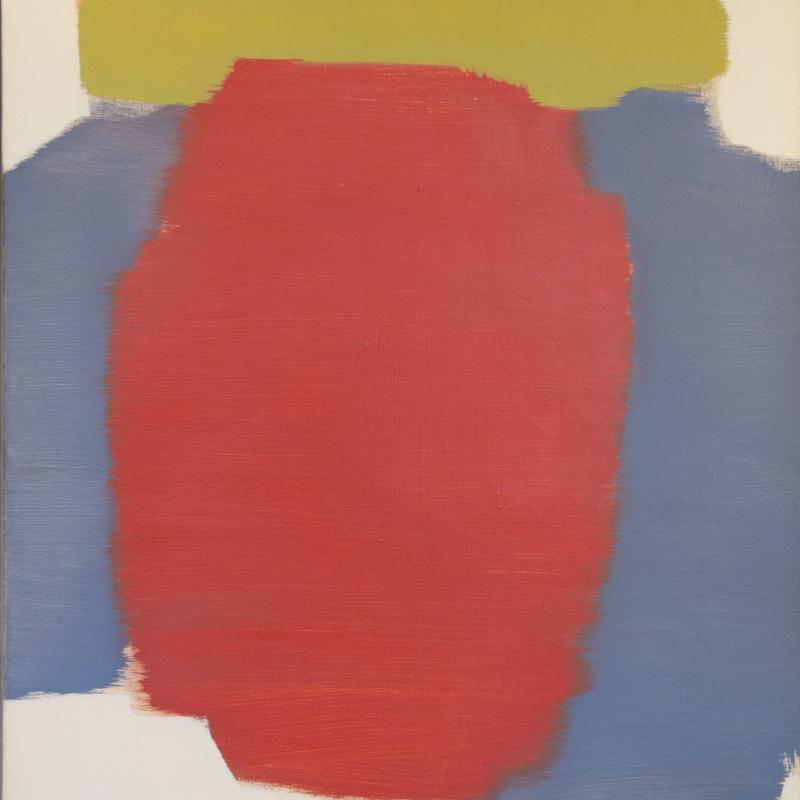 Carl HoltyUntitled #161, c. 1963Oil on canvas48 x 35 inches Framed: 49 1/4 x 37 1/4 inchesSigned: Holty (on stretcher, verso)
Carl HoltyUntitled #161, c. 1963Oil on canvas48 x 35 inches Framed: 49 1/4 x 37 1/4 inchesSigned: Holty (on stretcher, verso)
-
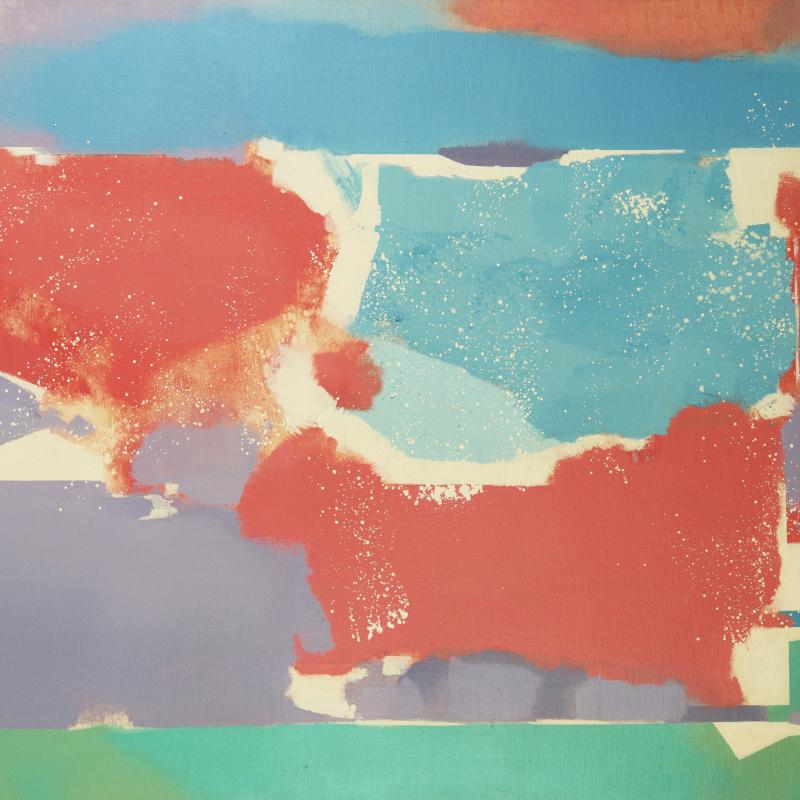 Carl HoltyUntitled (#1600), c. 1959Oil on canvas42 x 68 inches,
Carl HoltyUntitled (#1600), c. 1959Oil on canvas42 x 68 inches,
Framed: 44 1/2 x 70 inches
-
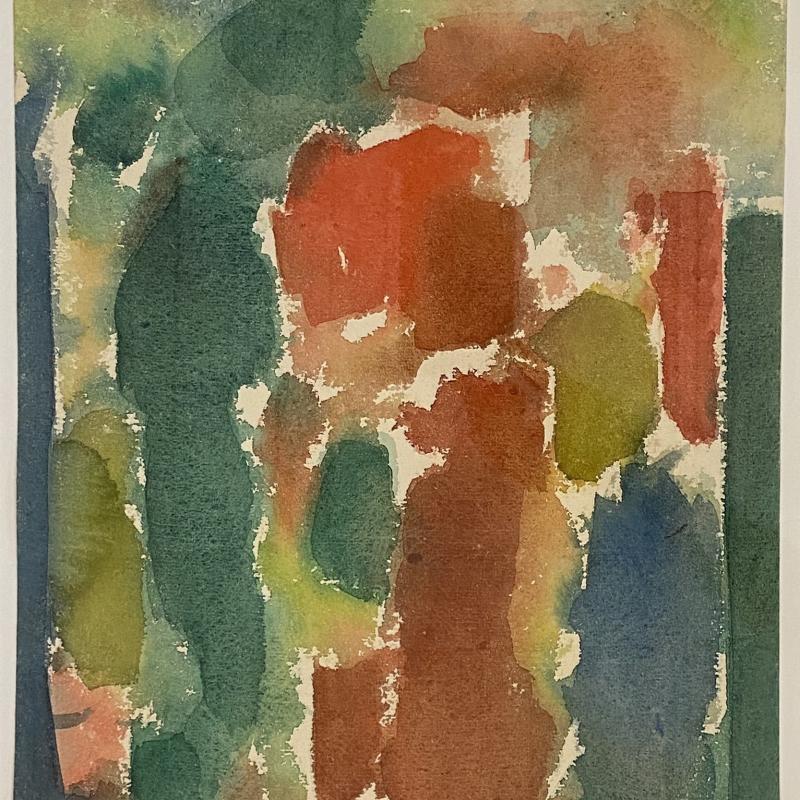 Carl HoltyColor Staining #400, c. 1957Watercolor on paper14 3/4 x 10 1/2 inches,
Carl HoltyColor Staining #400, c. 1957Watercolor on paper14 3/4 x 10 1/2 inches,
Framed: 22 1/2 x 17 inchesSigned: Holty lower right, Marked: 400 (verso)
-
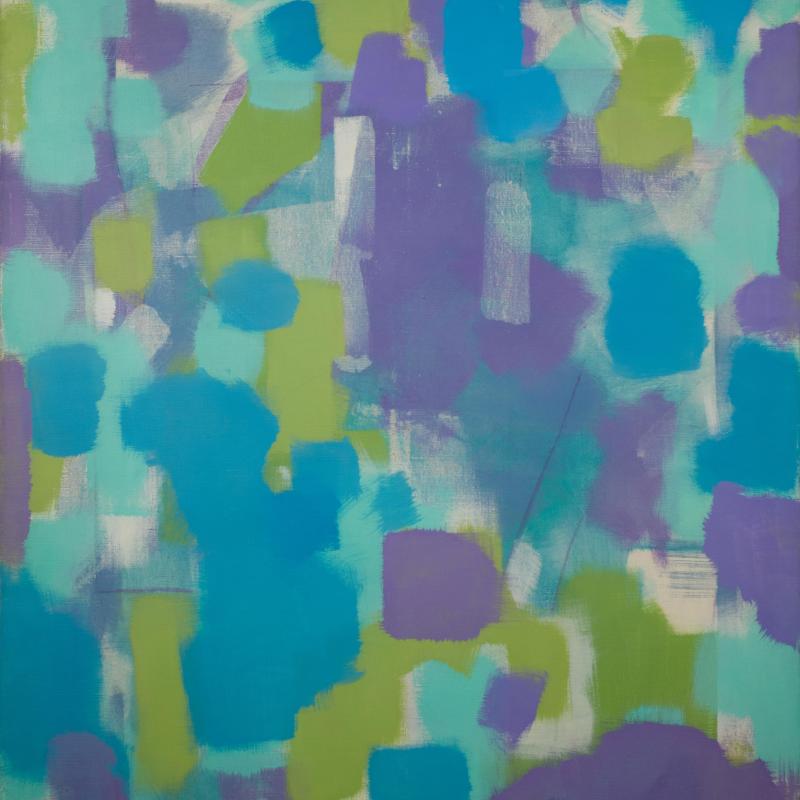 Carl HoltyAscending, c. 1955Oil on canvas52 x 38 inches,
Carl HoltyAscending, c. 1955Oil on canvas52 x 38 inches,
Framed: 53 1/2 x 39 1/2 inchesSigned: Holty lower right
-
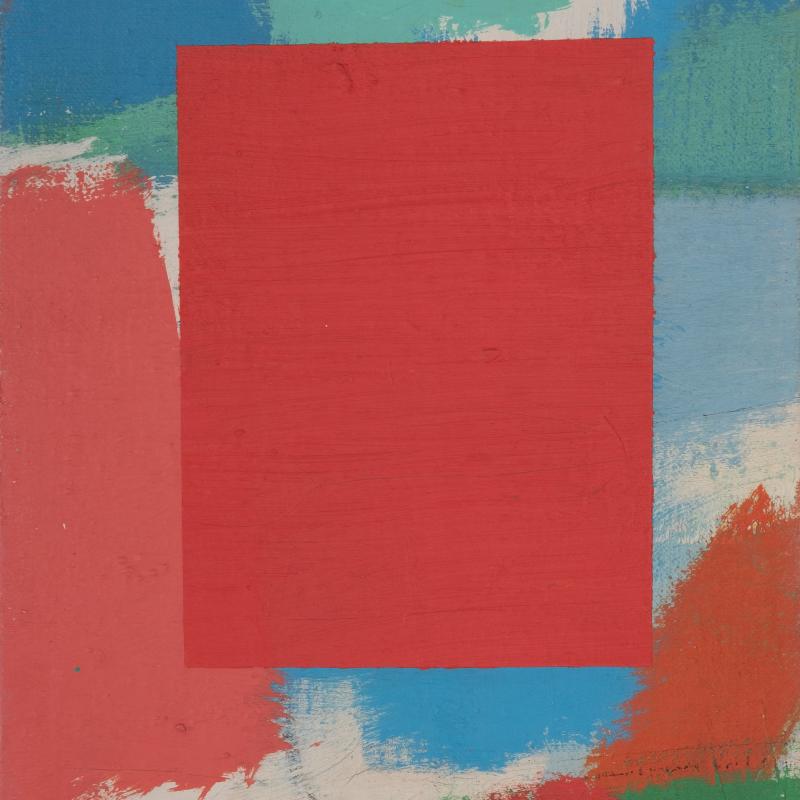 Carl HoltyColor Theory, Red Square #10, c. 1955Oil on canvas mounted on Masonite11 5/8 x 8 7/8 inches,
Carl HoltyColor Theory, Red Square #10, c. 1955Oil on canvas mounted on Masonite11 5/8 x 8 7/8 inches,
Framed 20 x 17 inchesSigned: Holty estate signature stamp l.r., Marked: #10 (verso), Estate of Carl Holty stamp, verso
-
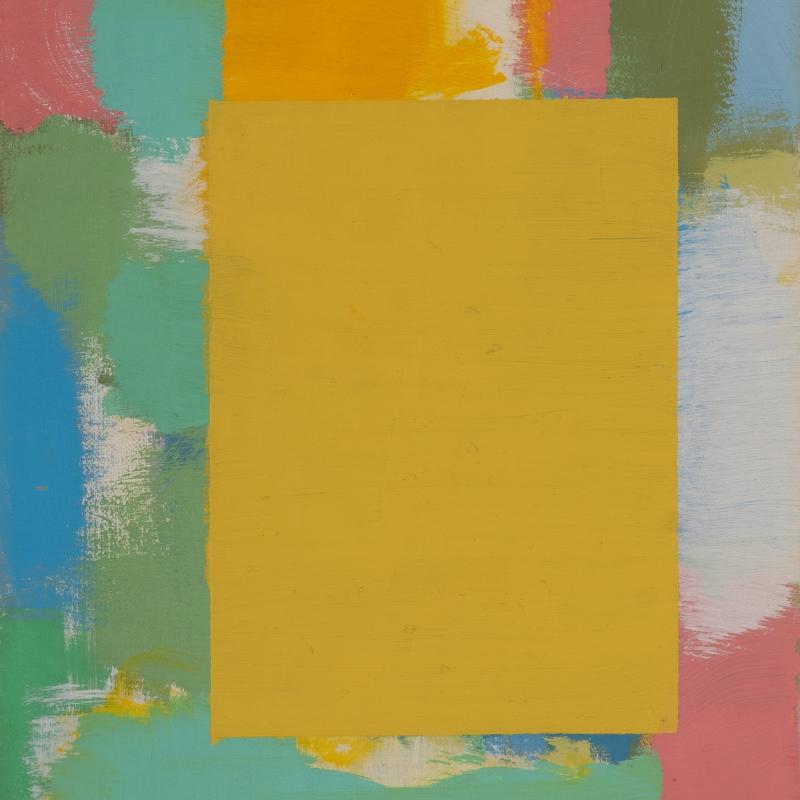 Carl HoltyColor Theory, Yellow Square #6, c. 1955Oil on canvas mounted on Masonite12 x 9 inches,
Carl HoltyColor Theory, Yellow Square #6, c. 1955Oil on canvas mounted on Masonite12 x 9 inches,
Framed: 20 x 17 inchesSigned: Holty Estate signature stamp lower right, Marked: #6 (verso), Estate of Carl Holty stamp, verso
-
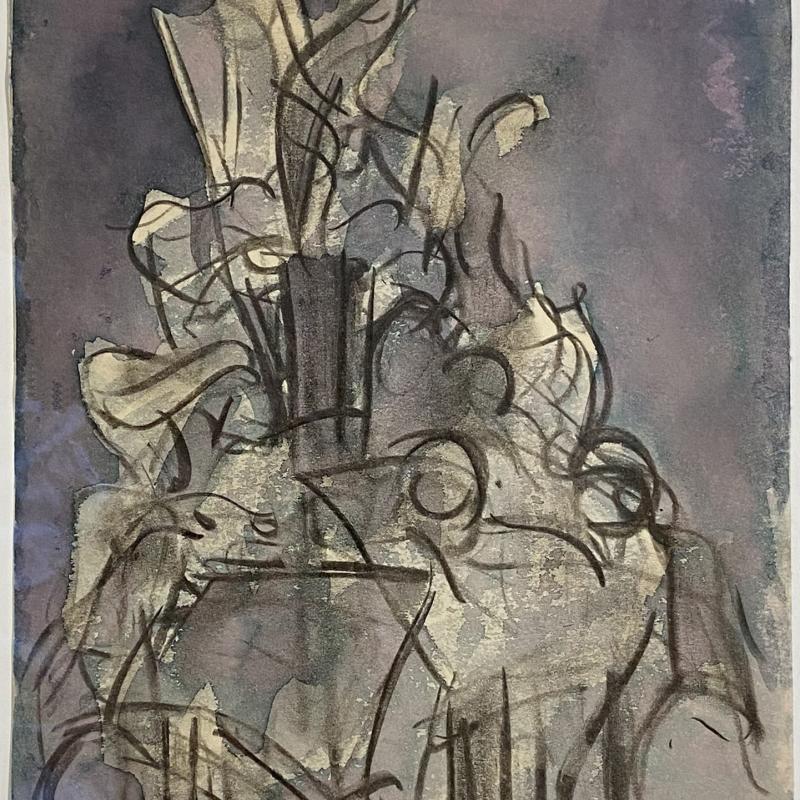 Carl HoltyStudy #372, c. 1951Watercolor on paper12 x 9 inches,
Carl HoltyStudy #372, c. 1951Watercolor on paper12 x 9 inches,
Framed: 20 1/4 x 17 1/4 inchesUnsigned, Marked: Estate of Carl Holty Estate stamp verso
-
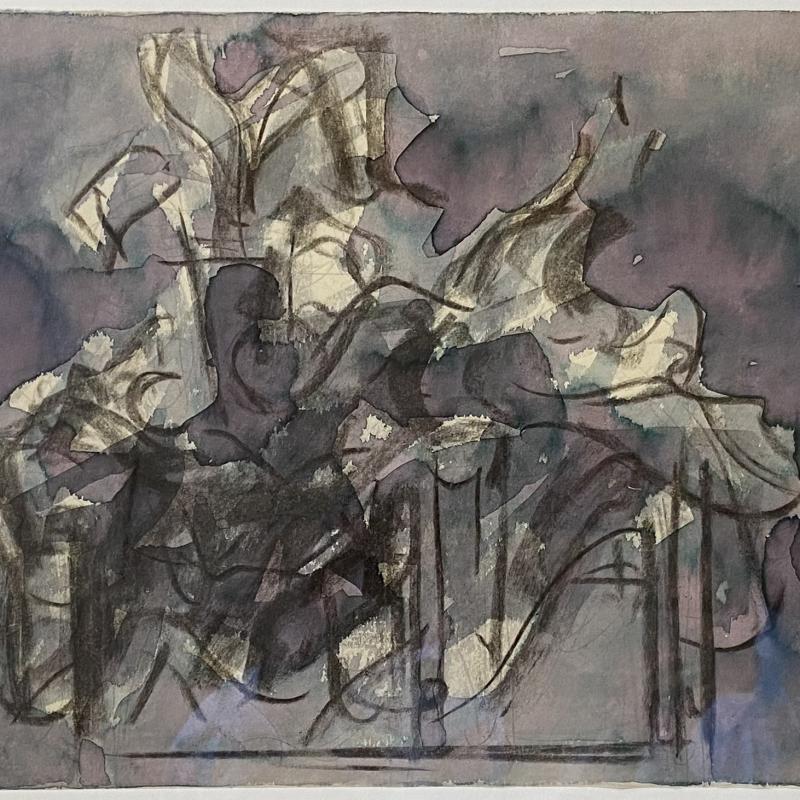 Carl HoltyUntitled #373, c. 1951Watercolor on paper9 x 12 inches,
Carl HoltyUntitled #373, c. 1951Watercolor on paper9 x 12 inches,
Framed: 17 1/4 x 20 1/4 inchesUnsigned, Marked: Estate of Carl Holty Estate stamp verso
-
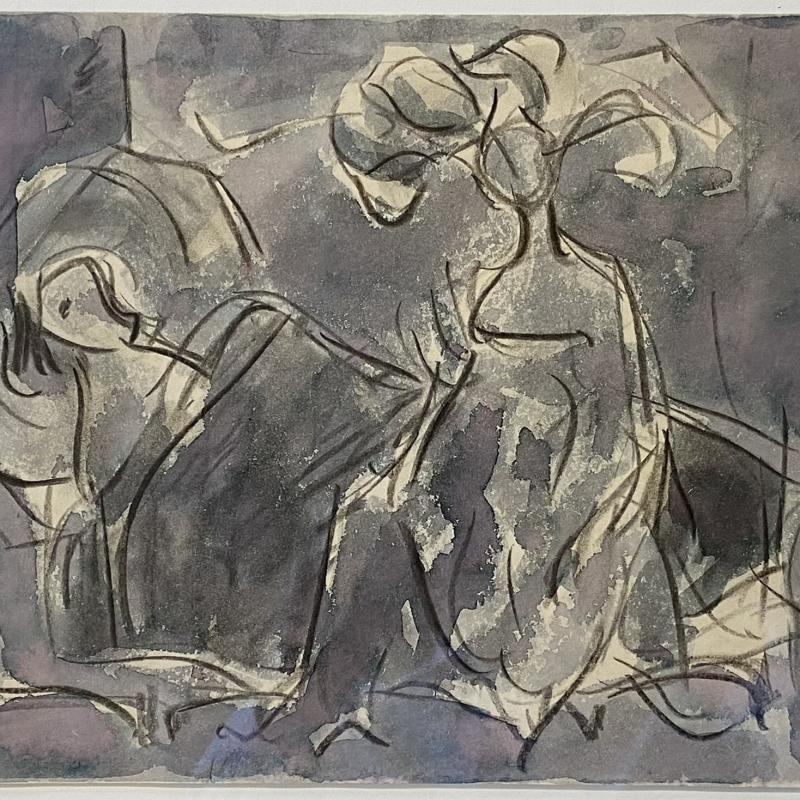 Carl HoltyUntitled #374, c. 1951Watercolor on paper9 x 12 inches,
Carl HoltyUntitled #374, c. 1951Watercolor on paper9 x 12 inches,
Framed: 17 1/4 x 20 1/4 inchesUnsigned, Marked: Estate of Carl Holty Estate stamp verso
-
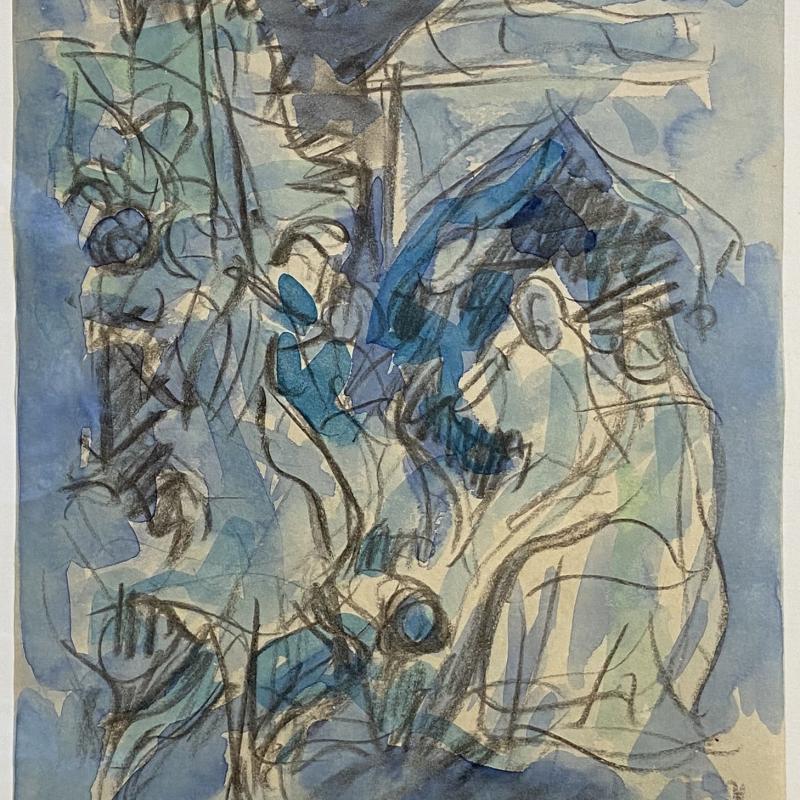 Carl HoltyUntitled #380, c. 1951Watercolor on paper12 x 9 inches Framed:17 1/4 x 20 1/4 inchesUnsigned, Marked: Estate of Carl Holty Estate stamp verso
Carl HoltyUntitled #380, c. 1951Watercolor on paper12 x 9 inches Framed:17 1/4 x 20 1/4 inchesUnsigned, Marked: Estate of Carl Holty Estate stamp verso
-
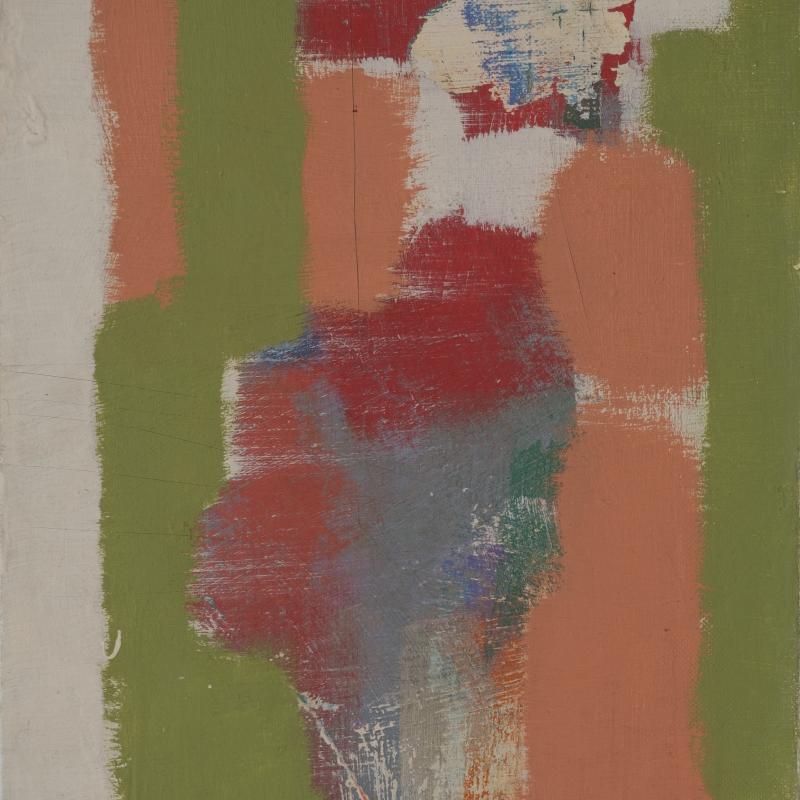 Carl HoltyColor Theory #1031 White, Pink, Green, Red, Green, Blue, c. 1950Oil on canvas mounted on Masonite12 x 8 1/2 inches,
Carl HoltyColor Theory #1031 White, Pink, Green, Red, Green, Blue, c. 1950Oil on canvas mounted on Masonite12 x 8 1/2 inches,
Framed: 20 x 17 inchesSigned: Holty lower left, Marked: #1031 (verso) Andrew Crispo Gallery label (verso), Estate of Carl Holty stamp, verso
-
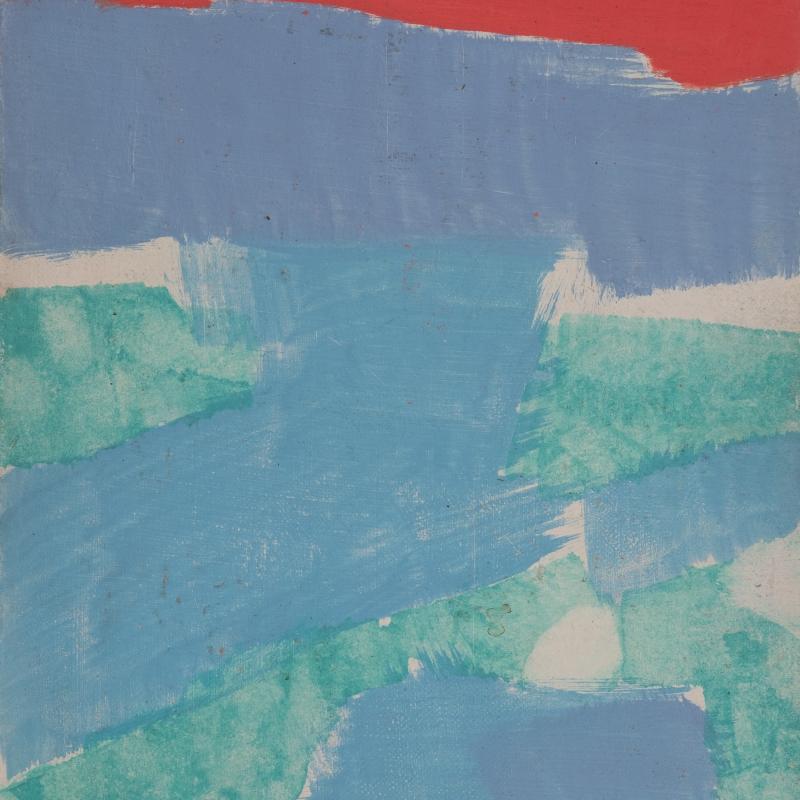 Carl HoltyColor Theory #1032 Red, Green, Blue, White, c. 1950Oil on canvas mounted on Masonite12 x 9 inches Framed: 20 x 17 inchesSigned: Holty lower left,
Carl HoltyColor Theory #1032 Red, Green, Blue, White, c. 1950Oil on canvas mounted on Masonite12 x 9 inches Framed: 20 x 17 inchesSigned: Holty lower left,
Marked: #1032 (verso)
-
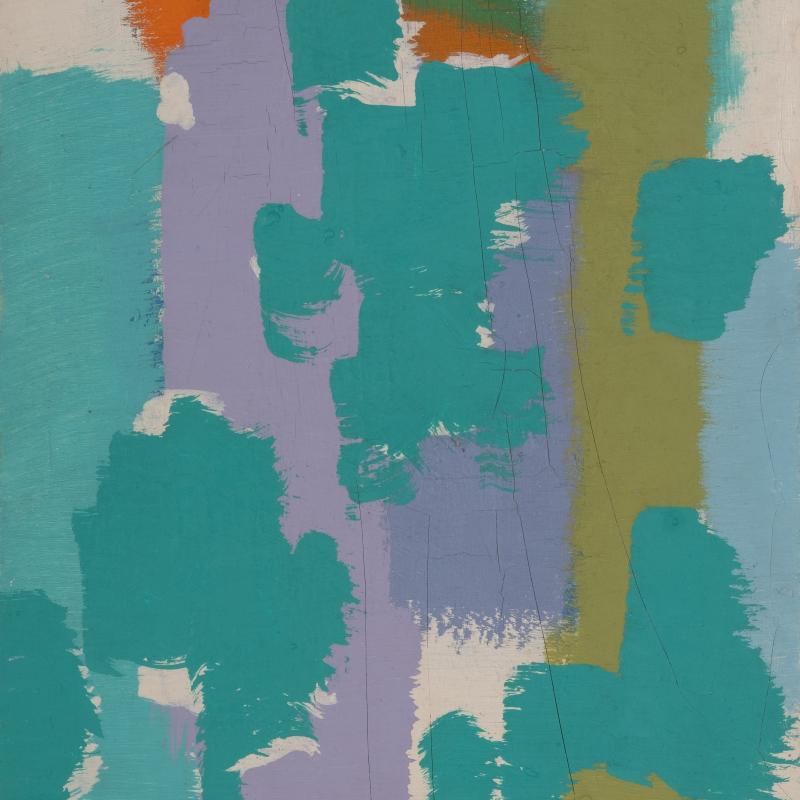 Carl HoltyColor Theory #1036 Lavender, Green, Blue, Orange, White, c. 1950Oil on canvas mounted on Masonite12 x 9 inches,
Carl HoltyColor Theory #1036 Lavender, Green, Blue, Orange, White, c. 1950Oil on canvas mounted on Masonite12 x 9 inches,
Framed: 20 x 17 inchesSigned: Holty lower right
-
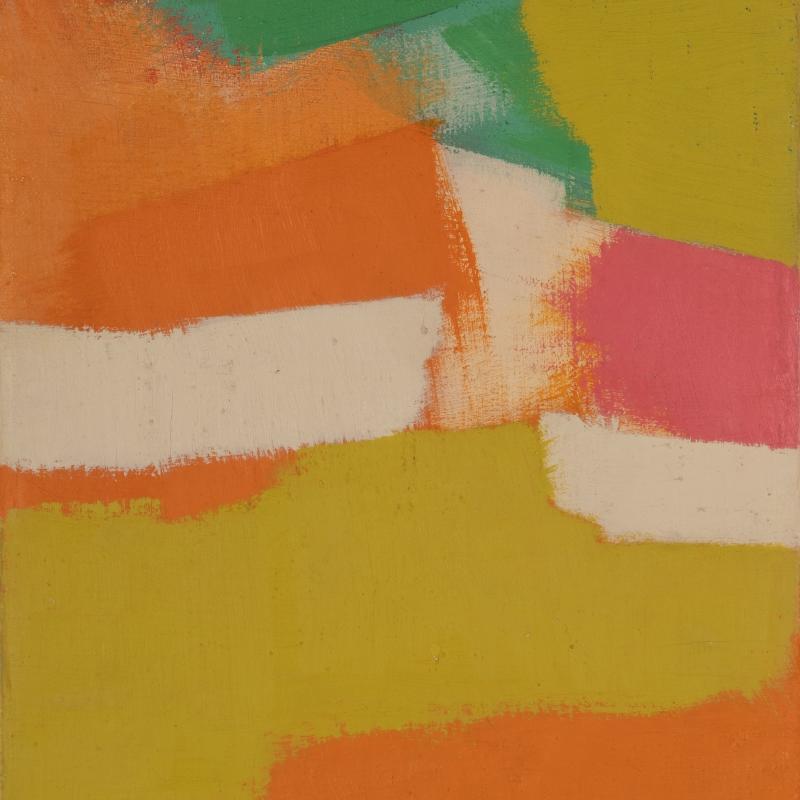 Carl HoltyColor Theory #1037 Orange, Yellow, White, Pink, Green, c. 1950Oil on canvas mounted on Masonite11 5/8 x 9 inches,
Carl HoltyColor Theory #1037 Orange, Yellow, White, Pink, Green, c. 1950Oil on canvas mounted on Masonite11 5/8 x 9 inches,
Framed: 20 x 17 inchesSigned: Holty lower right
-
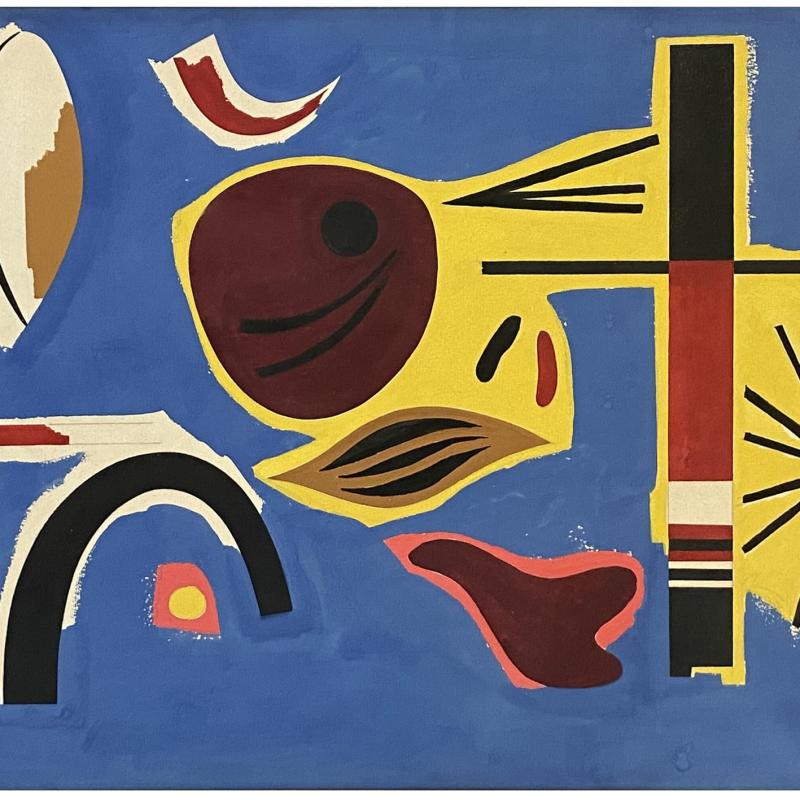 Carl HoltyEscapades #348, c. 1945Gouache on paperSight: 11 1/2 x 17 1/2 inches,
Carl HoltyEscapades #348, c. 1945Gouache on paperSight: 11 1/2 x 17 1/2 inches,
Framed: 21 1/2 x 27 1/2 inchesSigned: Holty Estate signature stamp lower right, Marked: + / top / 348 (verso)
-
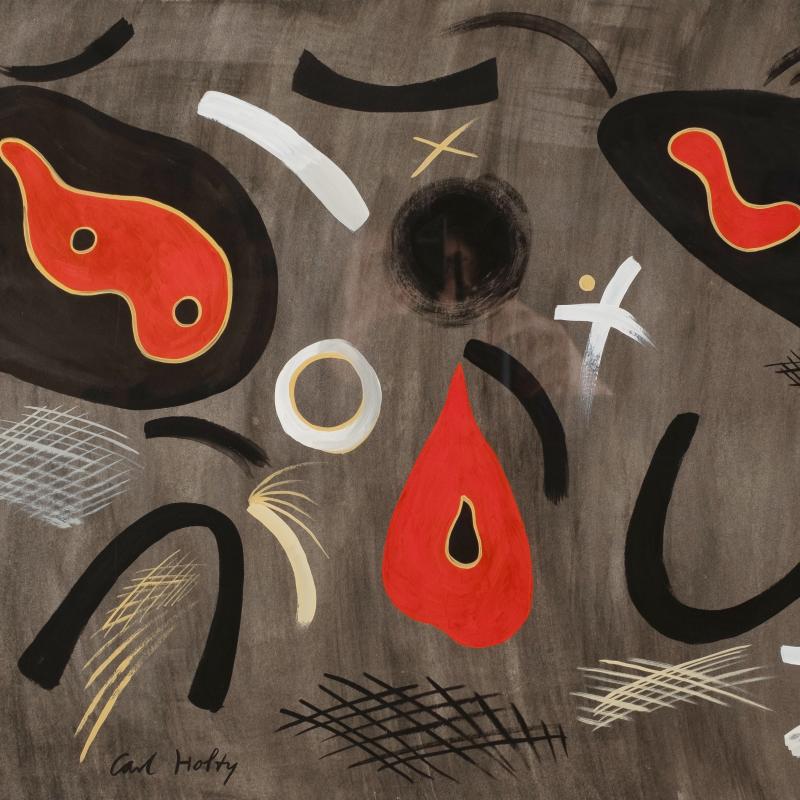 Carl HoltyBiomorphic Abstraction, c. 1936Gouache on paper16 1/4 x 23 1/8 inches (sight),
Carl HoltyBiomorphic Abstraction, c. 1936Gouache on paper16 1/4 x 23 1/8 inches (sight),
Framed: 24 1/2 x 31 1/2 inchesSigned: Carl Holty (l.l.)
-
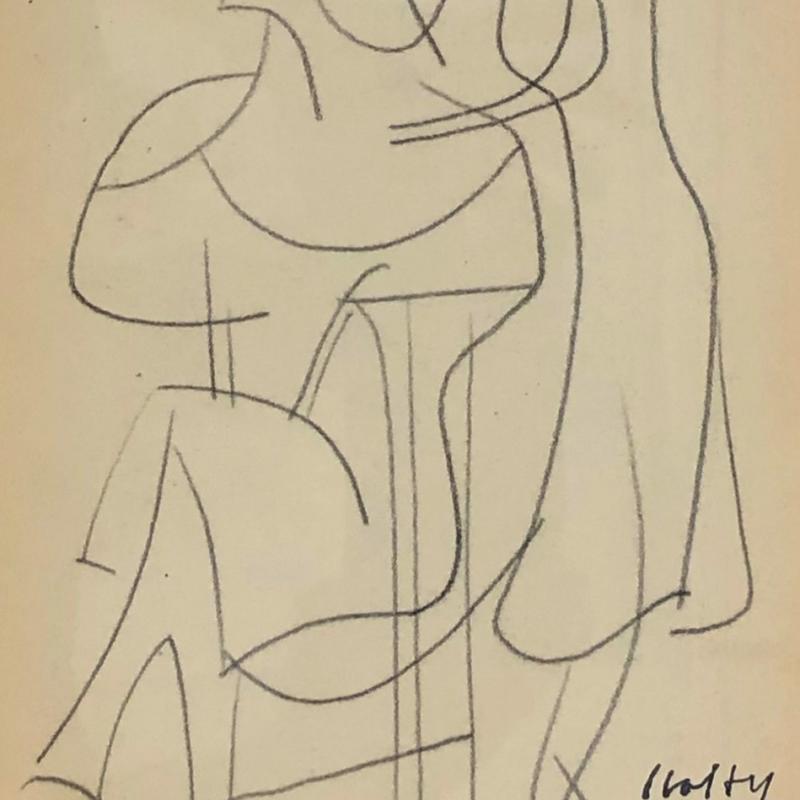 Carl HoltyFiguresSketchbook #2, c. 1935Graphite on paperSigned: Holty Estate signature stamp lower right
Carl HoltyFiguresSketchbook #2, c. 1935Graphite on paperSigned: Holty Estate signature stamp lower right
-
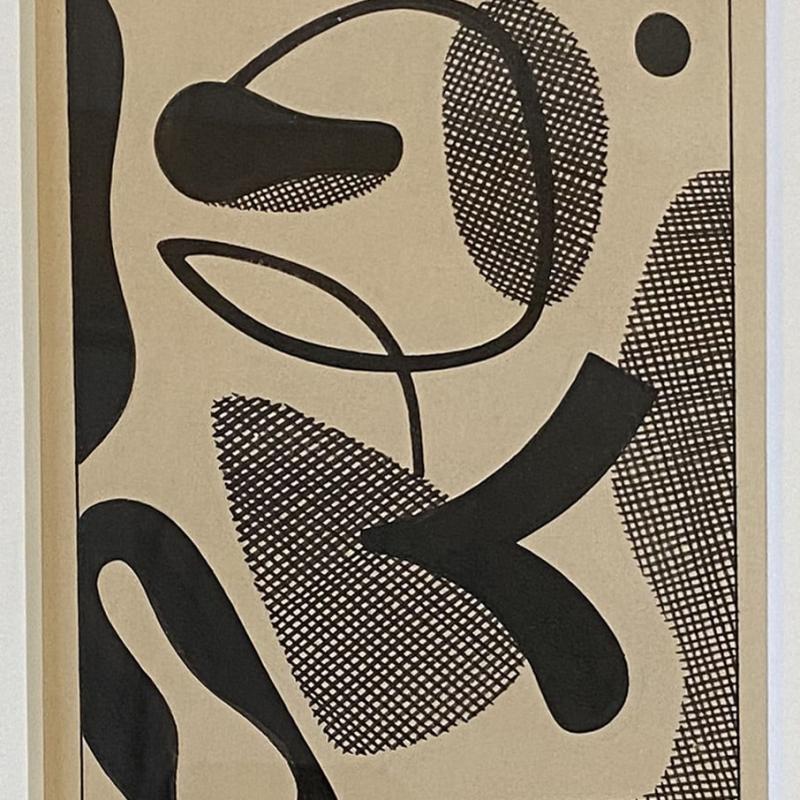 Carl HoltyForms A, Sketchbook #4, c. 1935Ink and graphite on paper6 1/2 x 4 3/8 inches sight Framed: 16 1/2 x 14 1/2 inchesSigned: Holty Estate signature stamp lower right
Carl HoltyForms A, Sketchbook #4, c. 1935Ink and graphite on paper6 1/2 x 4 3/8 inches sight Framed: 16 1/2 x 14 1/2 inchesSigned: Holty Estate signature stamp lower right
-
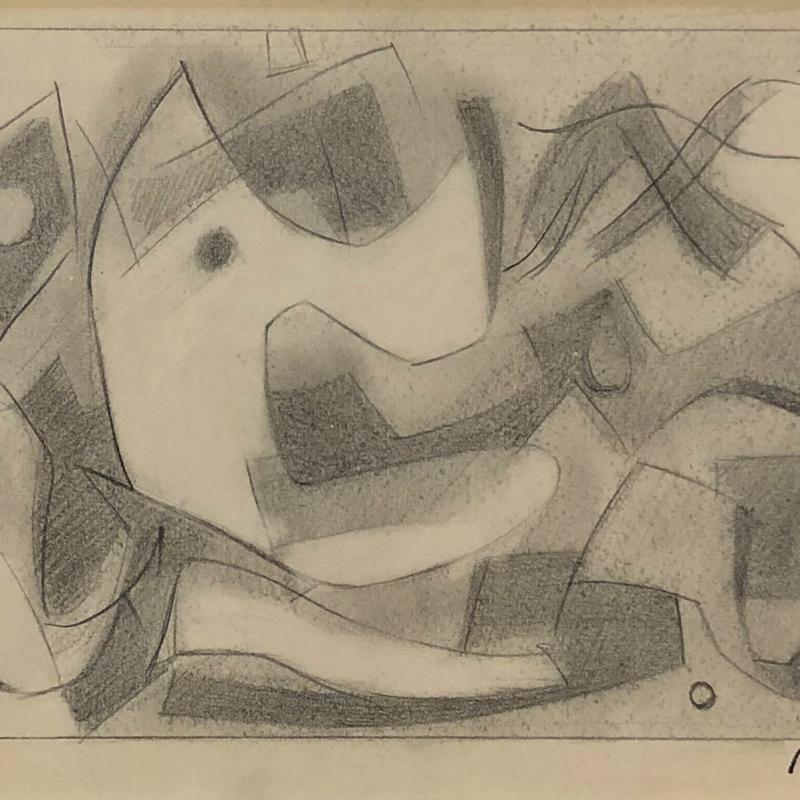 Carl HoltyForms and Figures #1Sketchbook #3, c. 1935Graphite on paperSight: 6 3/4 x 9 1/8 inches Framed: 16 x 18 inchesSigned: Holty Estate signature stamp lower right
Carl HoltyForms and Figures #1Sketchbook #3, c. 1935Graphite on paperSight: 6 3/4 x 9 1/8 inches Framed: 16 x 18 inchesSigned: Holty Estate signature stamp lower right
-
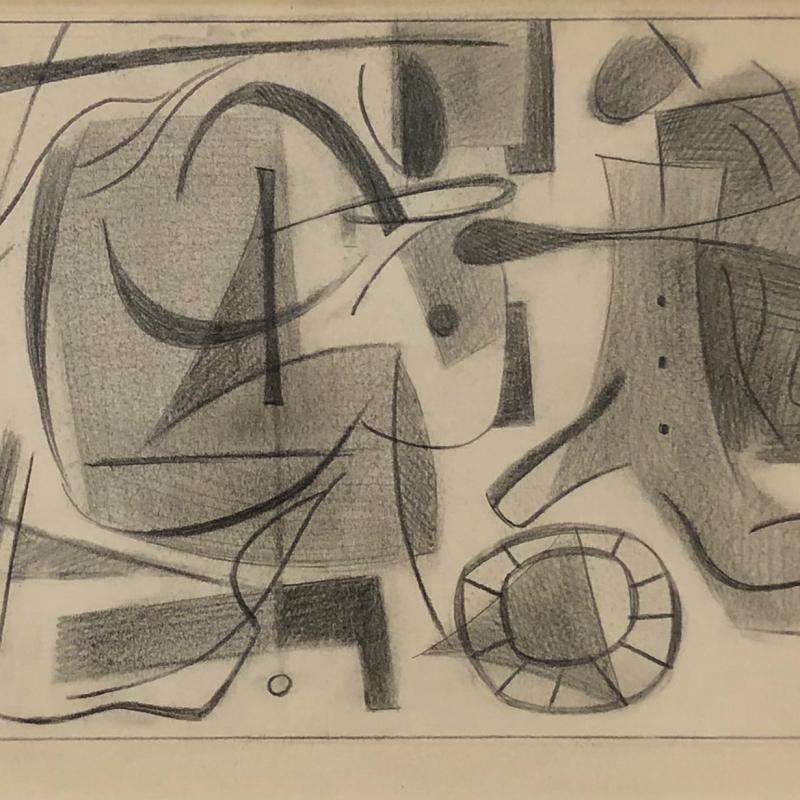 Carl HoltyForms and Figures #3 Sketchbook #3, c. 1935Graphite on paperSight: 7 1/4 x 10 1/4 Framed: 18 x 16 inchesSigned: Holty Estate Signature stamp lower right
Carl HoltyForms and Figures #3 Sketchbook #3, c. 1935Graphite on paperSight: 7 1/4 x 10 1/4 Framed: 18 x 16 inchesSigned: Holty Estate Signature stamp lower right
-
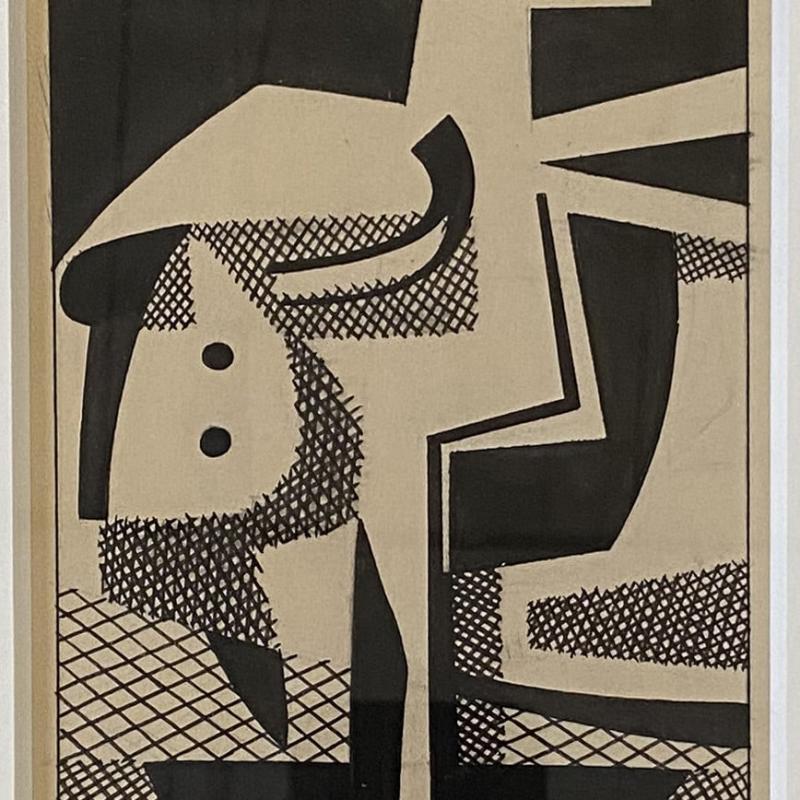 Carl HoltyInk Study IIII A ,Sketchbook #4, c. 1935Ink and graphite on paper6 5/8 x 4 3/8 inches sight Framed: 16 1/2 x 14 1/2 inchesSigned: Holty Estate signature stamp lower right
Carl HoltyInk Study IIII A ,Sketchbook #4, c. 1935Ink and graphite on paper6 5/8 x 4 3/8 inches sight Framed: 16 1/2 x 14 1/2 inchesSigned: Holty Estate signature stamp lower right
-
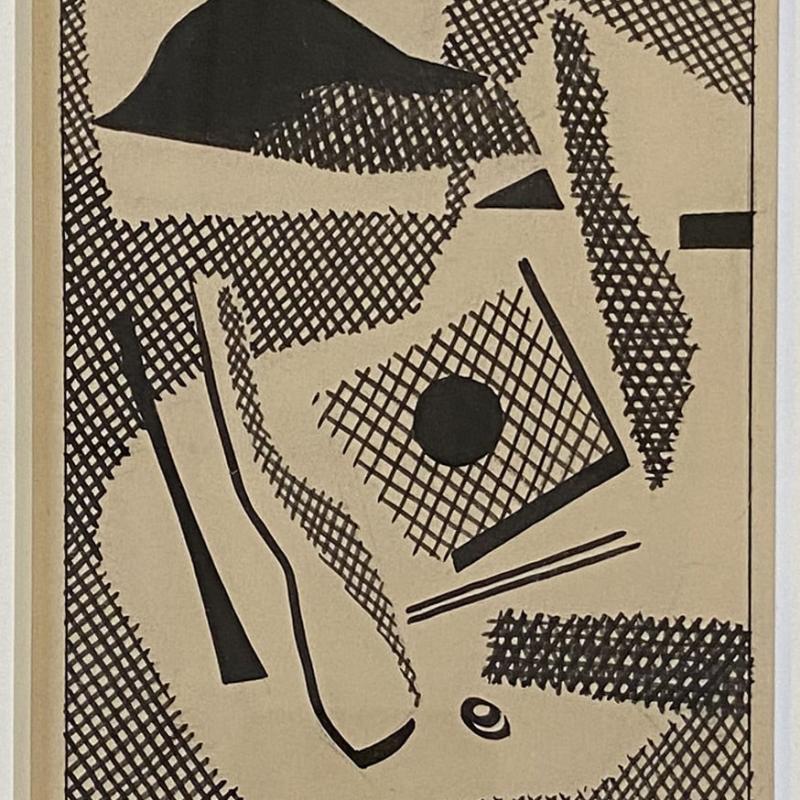 Carl HoltyInk Study IIII B, Sketchbook #4, c. 1935Ink and graphite on paper6 1/2 x 4 1/2 inches sight,
Carl HoltyInk Study IIII B, Sketchbook #4, c. 1935Ink and graphite on paper6 1/2 x 4 1/2 inches sight,
Framed: 16 1/2 x 14 1/2 inchesSigned: Holty Estate signature stamp lower right
-
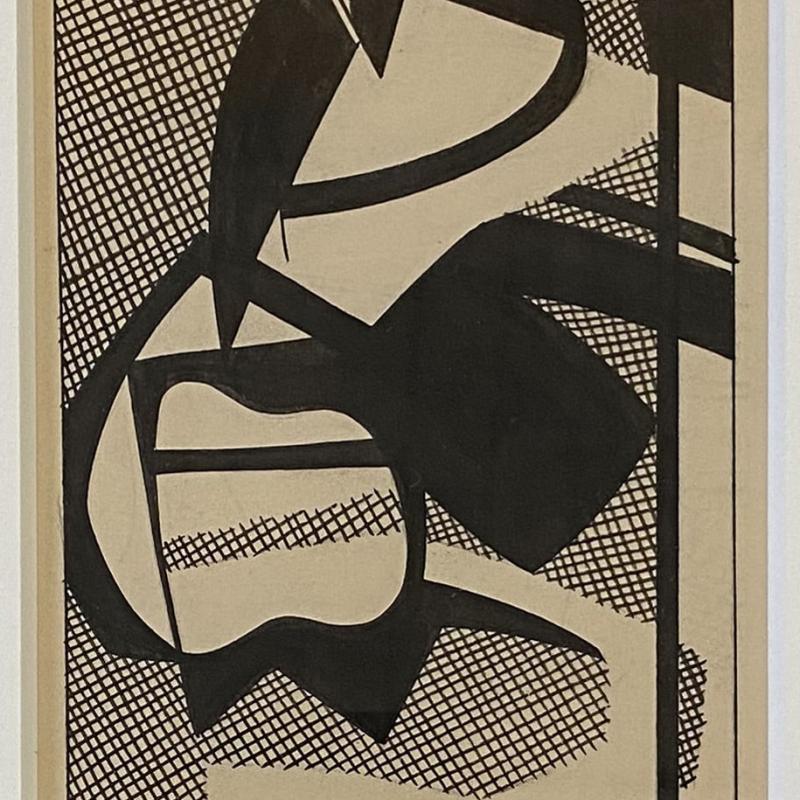 Carl HoltyInk Study V B Sketchbook #4, c. 1935Ink and graphite on paper6 3/4 x 4 1/4 inches Framed: 16 1/2 x 14 1/2 inchesSigned: Holty Estate Signature stamp lower right
Carl HoltyInk Study V B Sketchbook #4, c. 1935Ink and graphite on paper6 3/4 x 4 1/4 inches Framed: 16 1/2 x 14 1/2 inchesSigned: Holty Estate Signature stamp lower right
-
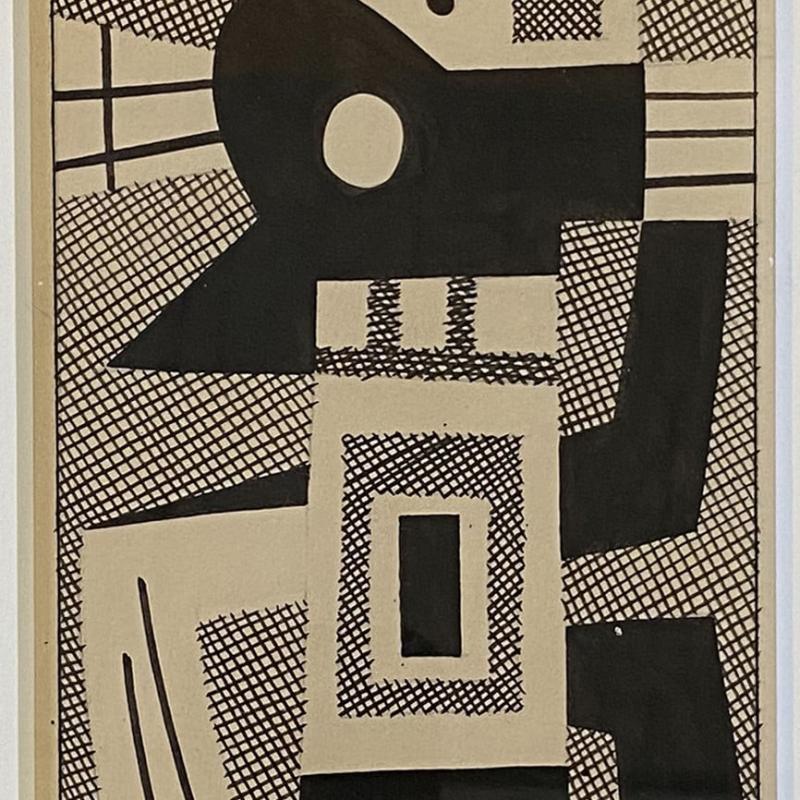 Carl HoltyInk Study VI A Sketchbook #4, c. 1935Ink and graphite on paper6 1/2 x 4 1/4 inches
Carl HoltyInk Study VI A Sketchbook #4, c. 1935Ink and graphite on paper6 1/2 x 4 1/4 inches
Framed: 16 1/2 x 14 1/2 inchesSigned: Holty Estate signature stamp lower right
-
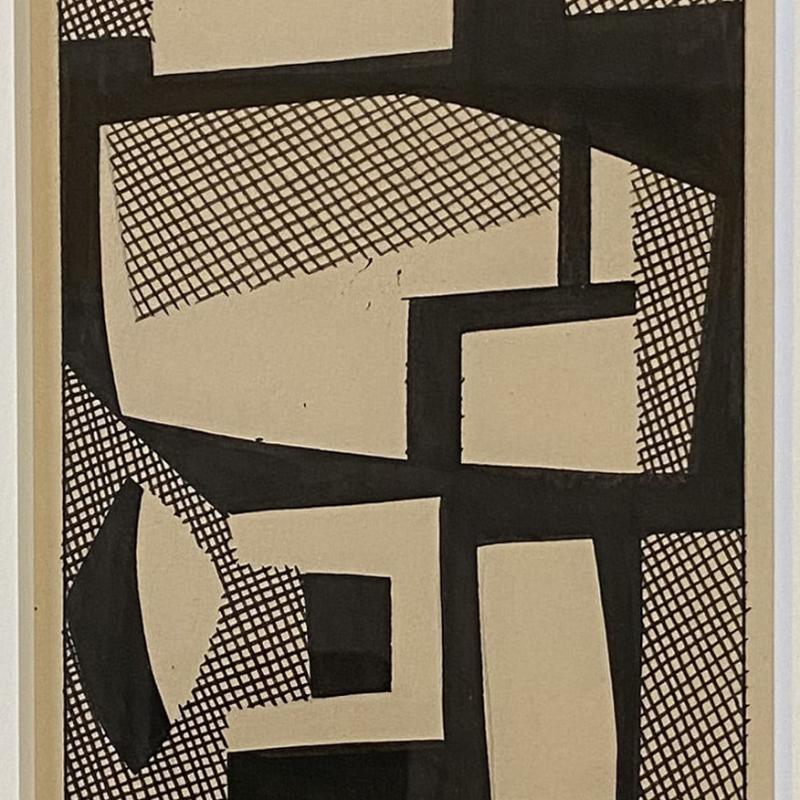 Carl HoltyInk Study VI B Sketchbook #4, c. 1935Ink and graphite on paper6 1/4 x 4 3/8 inches sight Framed: 16 1/2 x 14 1/2 inchesSigned: Holty Estate signature stamp lower right
Carl HoltyInk Study VI B Sketchbook #4, c. 1935Ink and graphite on paper6 1/4 x 4 3/8 inches sight Framed: 16 1/2 x 14 1/2 inchesSigned: Holty Estate signature stamp lower right
-
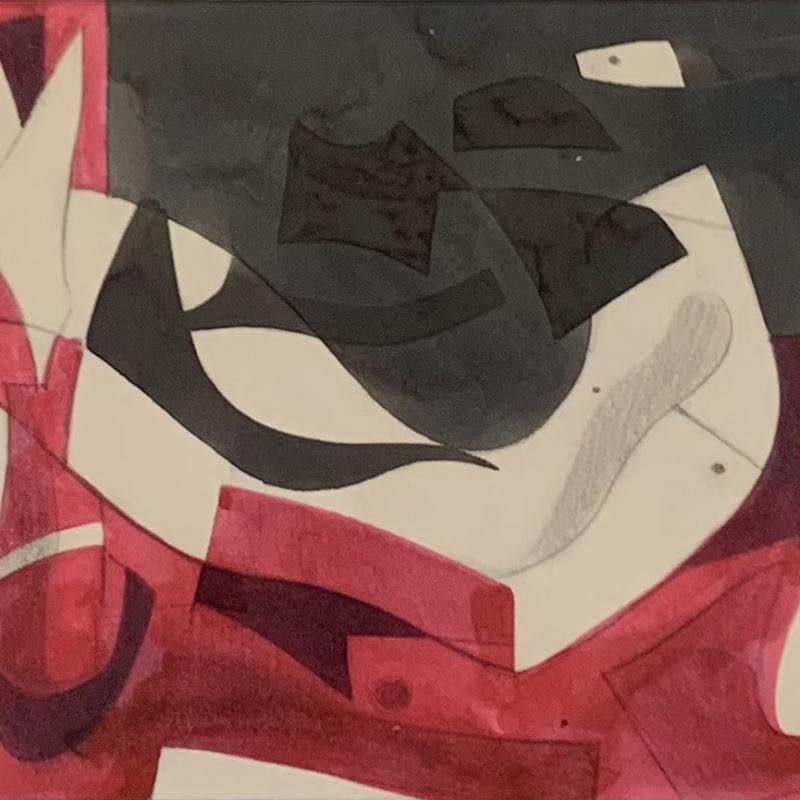 Carl HoltyReclining FigureSketchbook #3, c. 1935Watercolor & graphite on paper8 3/4 x 11 3/4 inches,
Carl HoltyReclining FigureSketchbook #3, c. 1935Watercolor & graphite on paper8 3/4 x 11 3/4 inches,
Framed: 17 3/4 x 21 inchesSigned: Holty Estate signature stamp lower right under mount
-
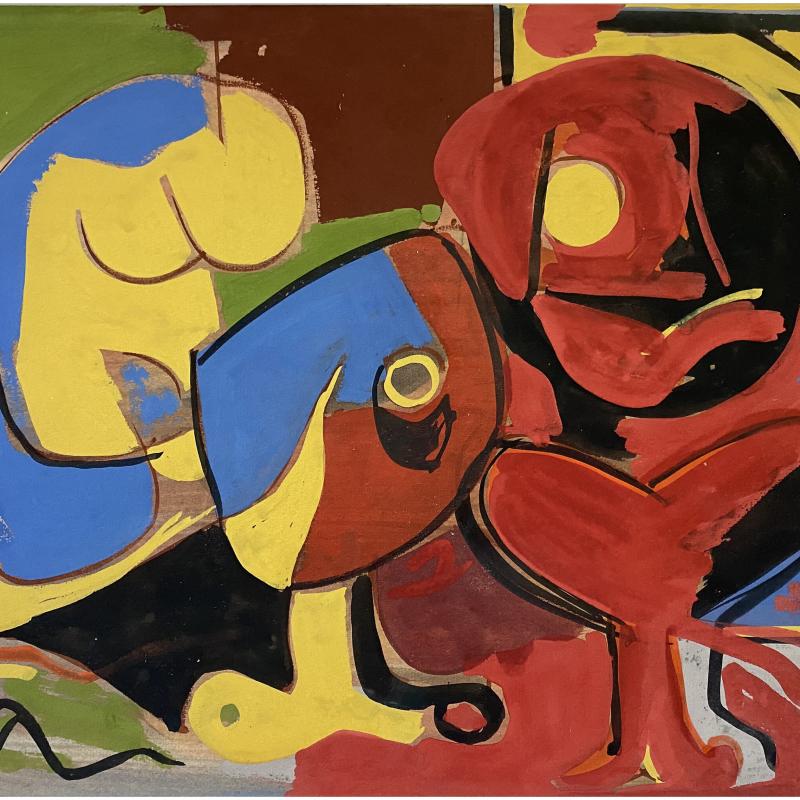 Carl HoltyFigure Composition #1, c. 1930’sGouache on paper11 1/2 x 17 1/4 inches,
Carl HoltyFigure Composition #1, c. 1930’sGouache on paper11 1/2 x 17 1/4 inches,
Framed: 21 1/4 x 27 inchesSigned: Holty Estate signature stamp lower right
-
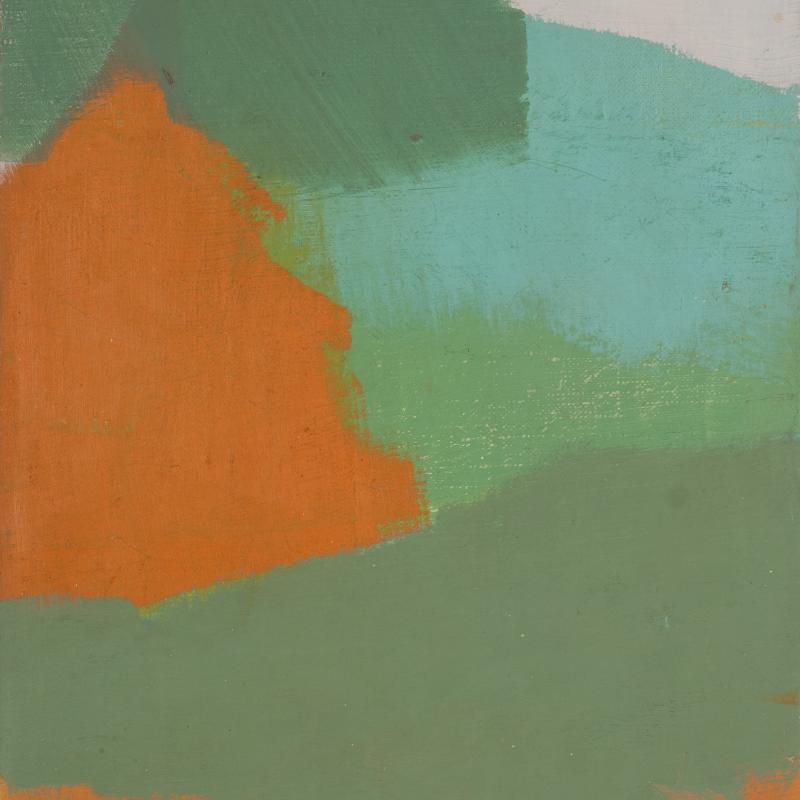 Carl HoltyColor Theory #571 Orange, Greens, White, 1972Oil on canvas mounted on Masonite12 x 9 inches,
Carl HoltyColor Theory #571 Orange, Greens, White, 1972Oil on canvas mounted on Masonite12 x 9 inches,
Framed: 20 x 17 inchesSigned: Holty Estate signature stamp lower right
-
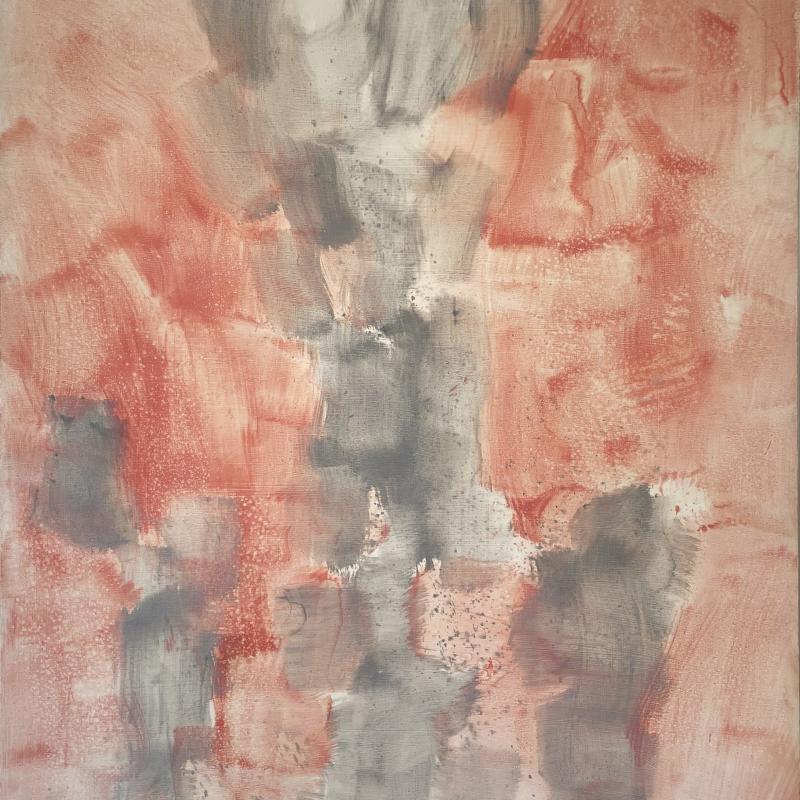 Carl HoltyPink, Gray, 1972Oil on canvas66 x 55 inches,
Carl HoltyPink, Gray, 1972Oil on canvas66 x 55 inches,
Framed: 68 x 57 inches
-
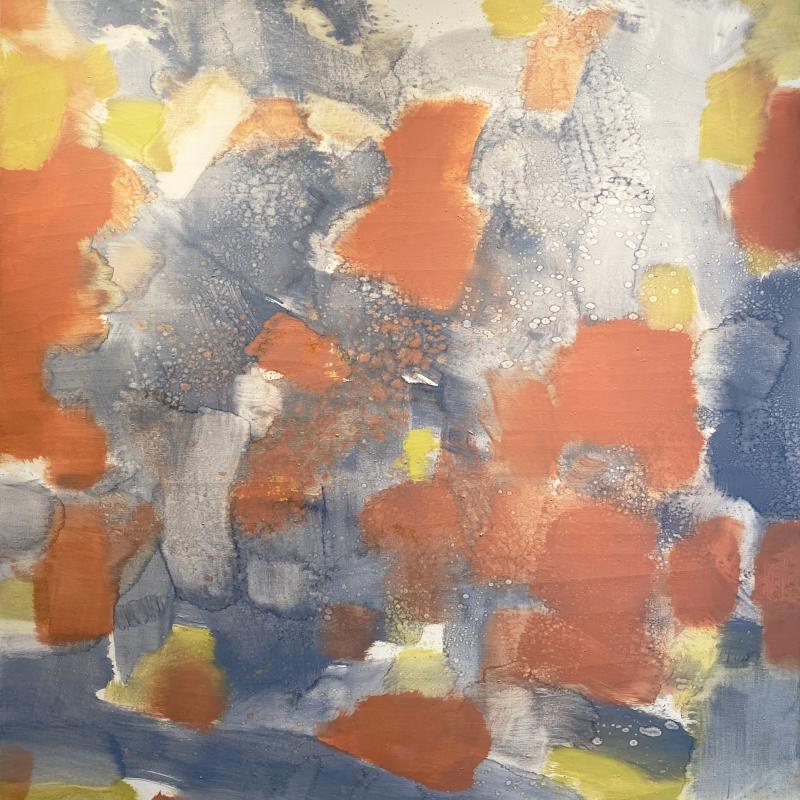 Carl HoltyRed, Yellow, Blue, Gray, 1971oil on canvas76 x 62 inches Framed: 77 3/4 x 64 1/2 inchesEstate of the Artist
Carl HoltyRed, Yellow, Blue, Gray, 1971oil on canvas76 x 62 inches Framed: 77 3/4 x 64 1/2 inchesEstate of the Artist
-
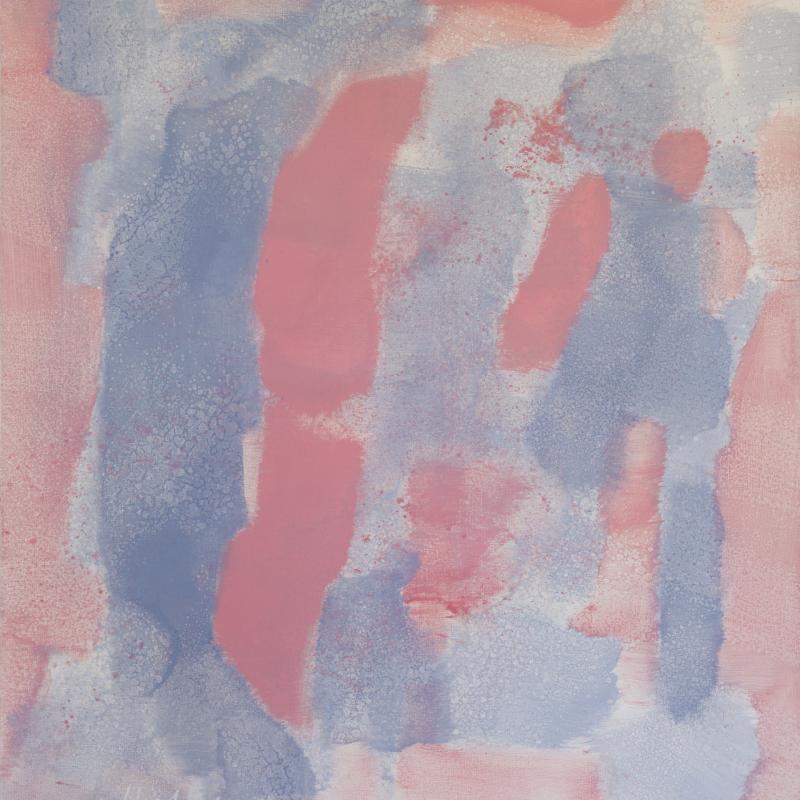 Carl HoltyUntitled #4, 1971Oil on canvas66 x 55 inches Framed: 68 x 57 inchesSigned lower left: Holty
Carl HoltyUntitled #4, 1971Oil on canvas66 x 55 inches Framed: 68 x 57 inchesSigned lower left: Holty
-
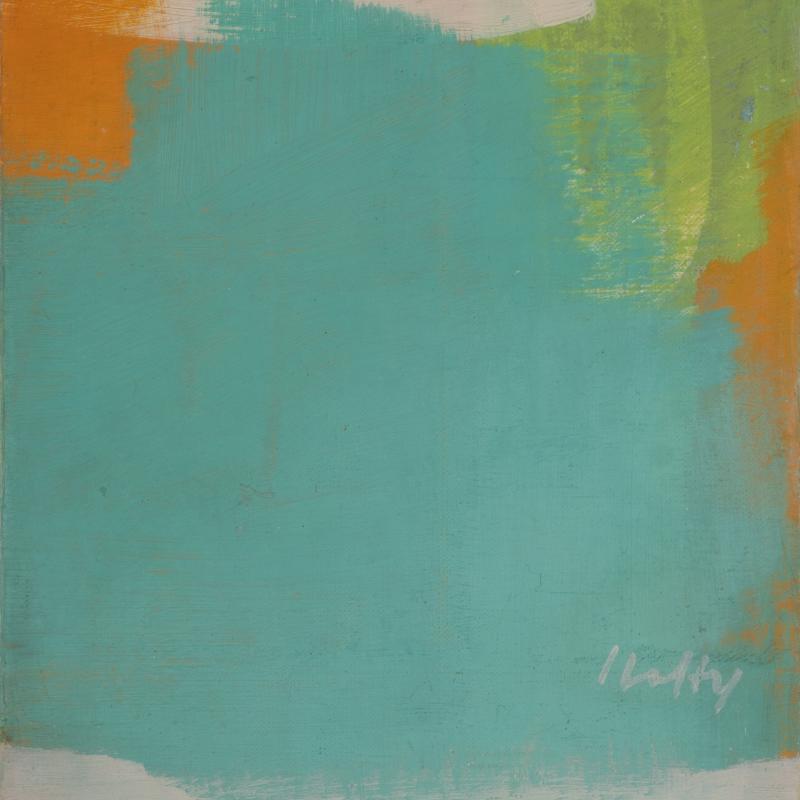 Carl HoltyColor Theory #565 Greens, White and Orange, 1970Oil on canvas mounted on Masonite11 7/8 x 9 inches,
Carl HoltyColor Theory #565 Greens, White and Orange, 1970Oil on canvas mounted on Masonite11 7/8 x 9 inches,
Framed: 20 x 17 inchesSigned: Holty lower right,
Marked: 565 (verso)
-
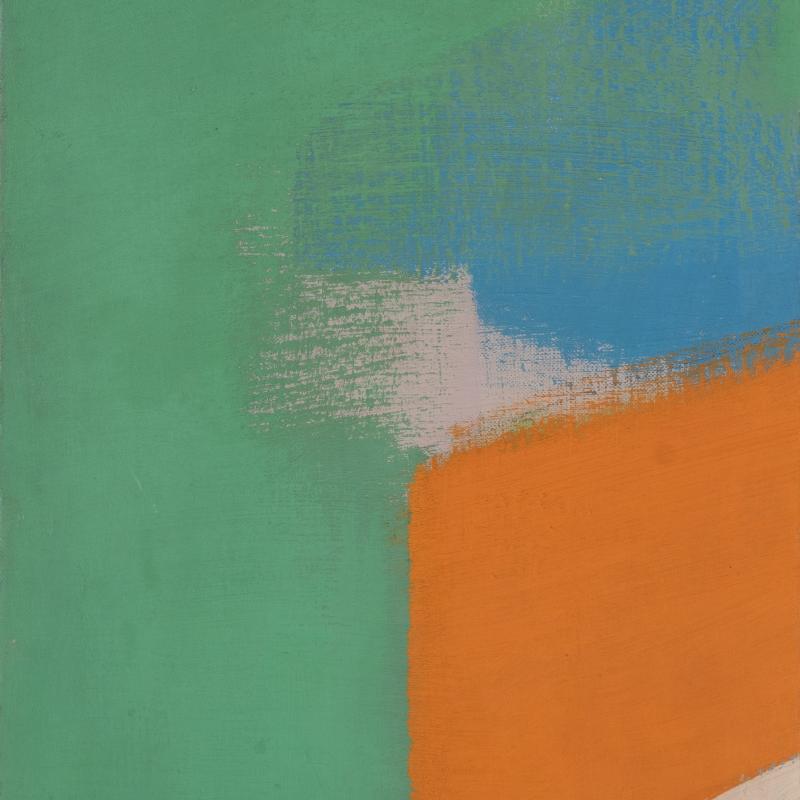 Carl HoltyColor Theory #567 Orange, Green, Blue, Lavender, 1970Oil on canvas mounted on Masonite12 x 9 inches,
Carl HoltyColor Theory #567 Orange, Green, Blue, Lavender, 1970Oil on canvas mounted on Masonite12 x 9 inches,
Framed: 20 x 17 inchesStamped: Holty Estate signature lower left,
Marked: 567 (verso)
-
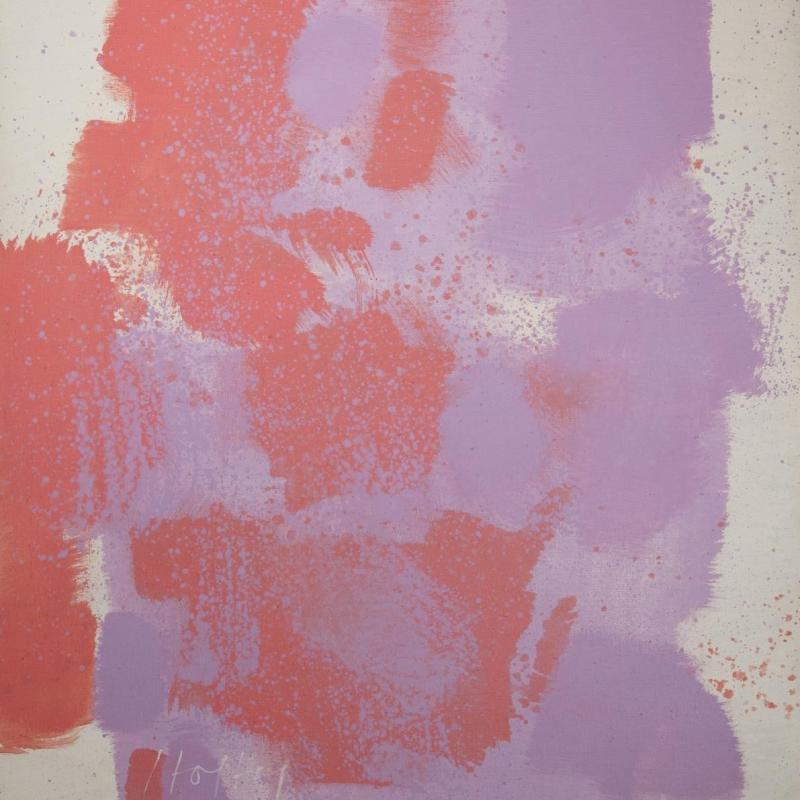 Carl HoltyRed, Purple, White #58, 1970Oil on canvas40 x 30 inches Framed: 42 1/4 x 32 inchesSigned: Holty (l.l.)
Carl HoltyRed, Purple, White #58, 1970Oil on canvas40 x 30 inches Framed: 42 1/4 x 32 inchesSigned: Holty (l.l.)
-
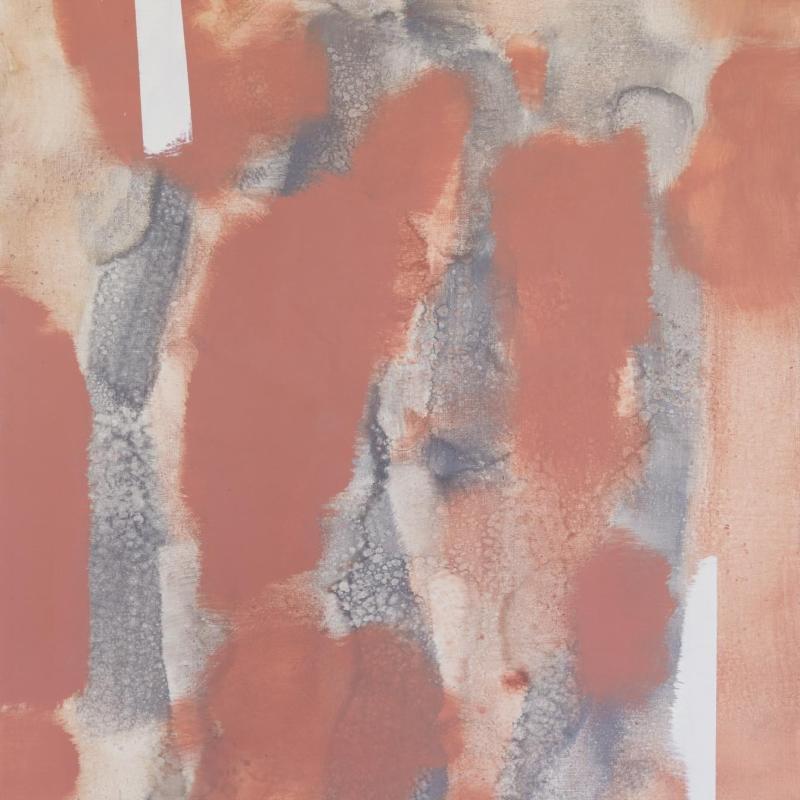 Carl HoltyRed, Gray #2, 1969Oil on canvas60 x 50 inches,
Carl HoltyRed, Gray #2, 1969Oil on canvas60 x 50 inches,
Framed: 62 1/4 x 52 inchesSigned: Holty (estate signature stamp, l.l.), Marked: Estate of Carl Holty (stamp, verso)
-
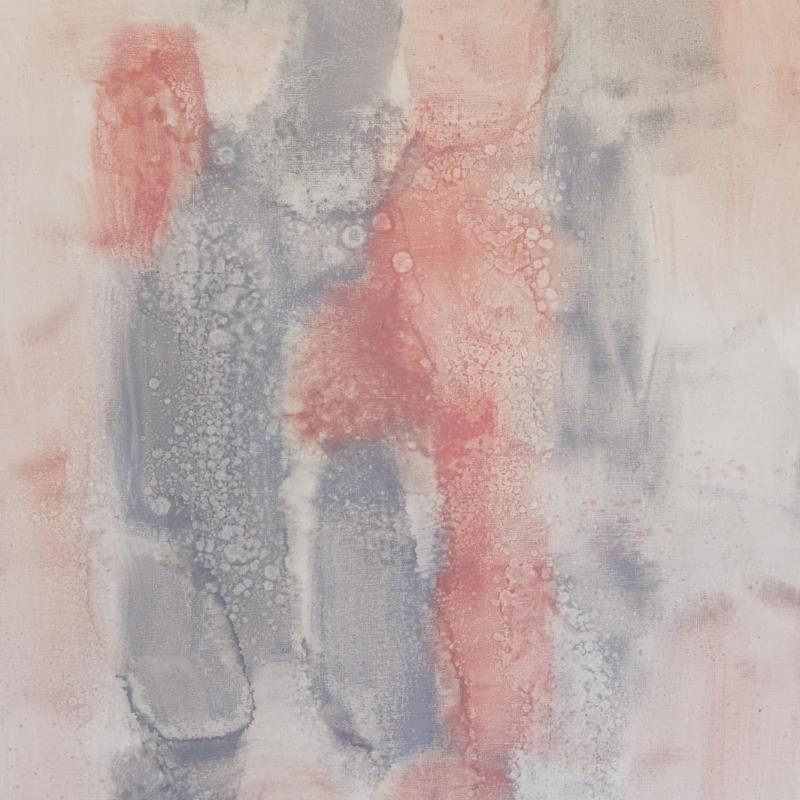 Carl HoltyRed, Gray #3, 1969Oil on canvas60 x 50 inches Framed: 62 x 52 inchesSigned: Carl Holty (estate signature stamp (l.r.), Marked: Estate of Carl Holty (stamp, verso)
Carl HoltyRed, Gray #3, 1969Oil on canvas60 x 50 inches Framed: 62 x 52 inchesSigned: Carl Holty (estate signature stamp (l.r.), Marked: Estate of Carl Holty (stamp, verso)
-
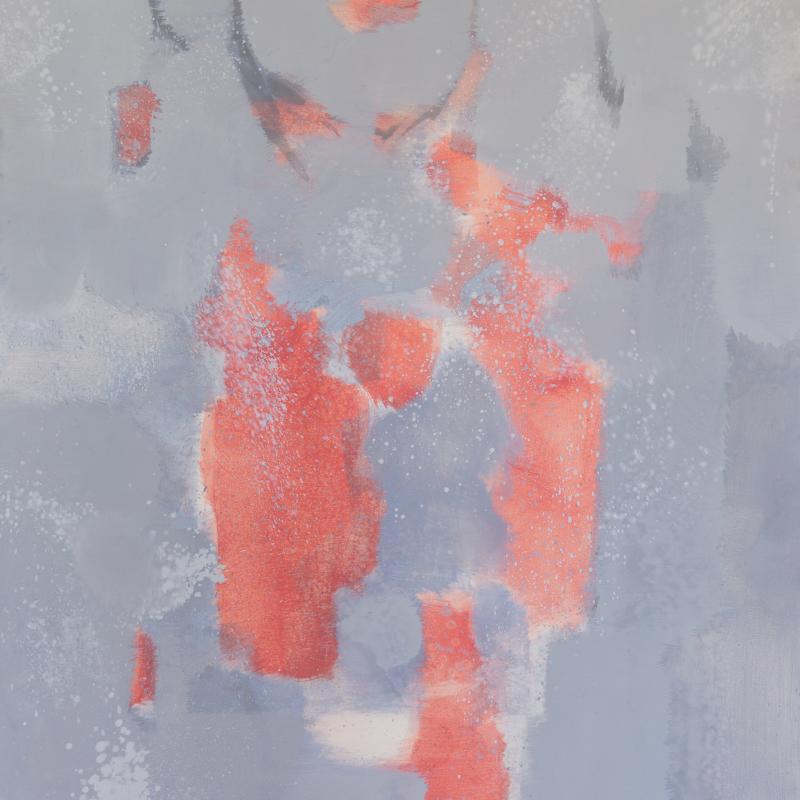 Carl HoltyRed, Gray #5, 1969Oil on canvas60 x 50 inches,
Carl HoltyRed, Gray #5, 1969Oil on canvas60 x 50 inches,
Framed: 62 x 52 inches
-
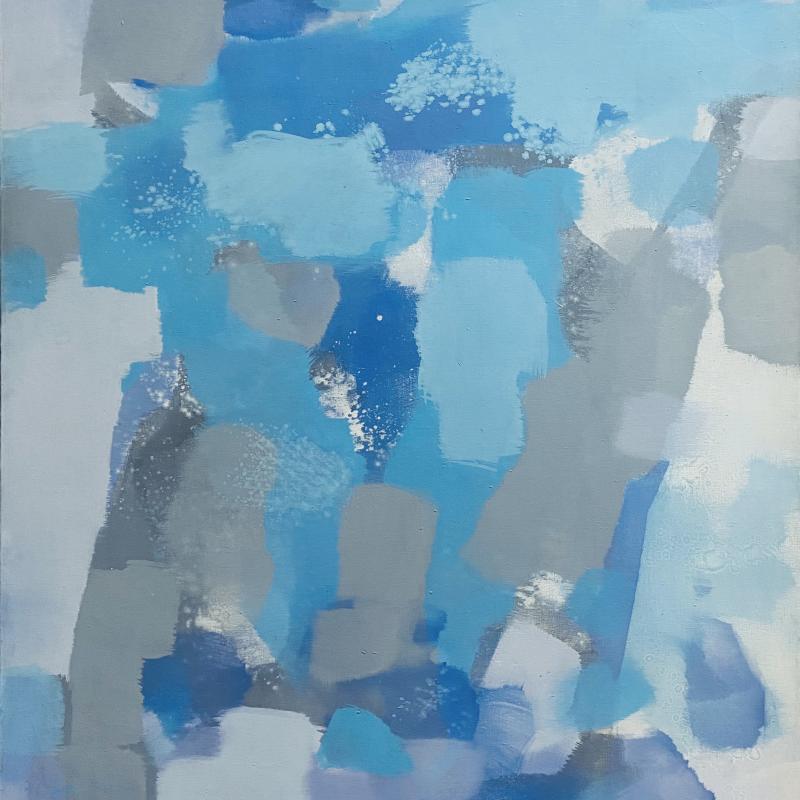 Carl HoltyClybourn II, 1966Oil on canvas65 x 54 3/4 inches,
Carl HoltyClybourn II, 1966Oil on canvas65 x 54 3/4 inches,
Framed: 68 x 57 inchesSigned: Holty lower left
-
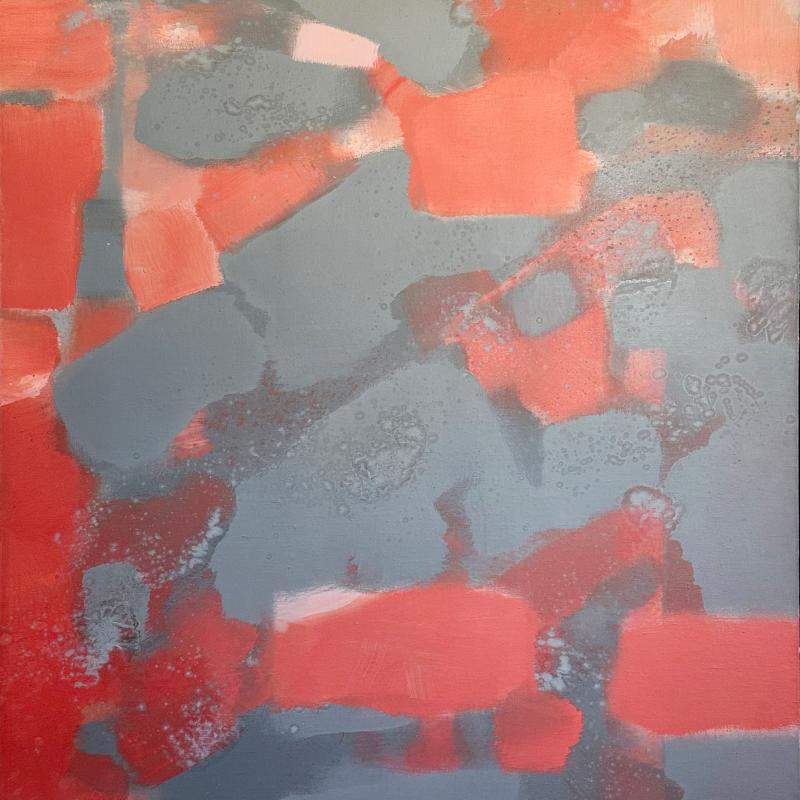 Carl HoltyRed, Gray, 1966Oil on canvas72 x 56 inches,
Carl HoltyRed, Gray, 1966Oil on canvas72 x 56 inches,
Framed: 74 1/4 x 58 1/4 inchesSigned: Holty lower left
-
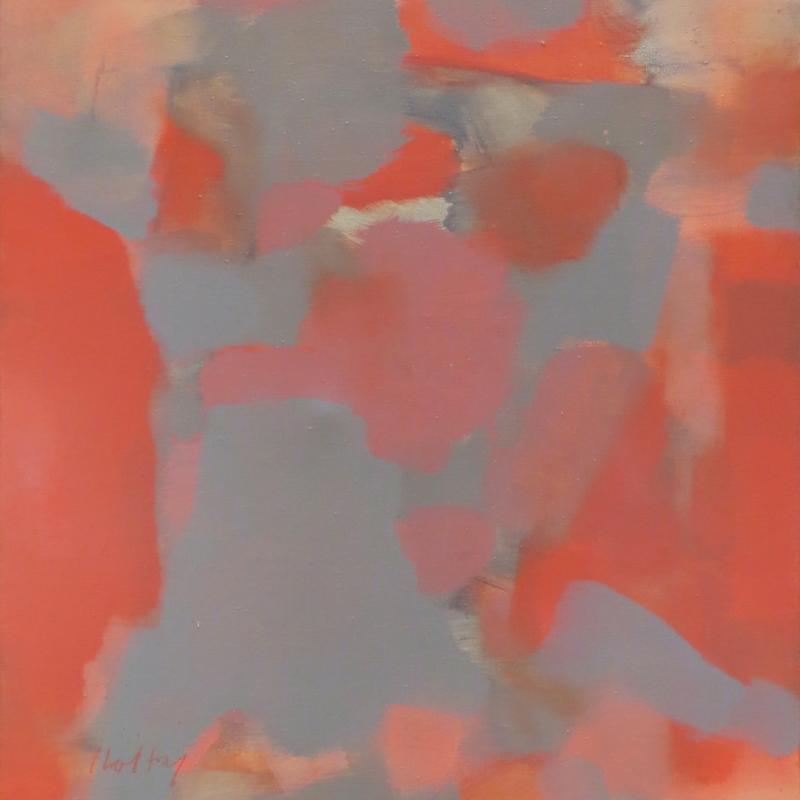 Carl HoltyRusset, 1966Oil on canvas66 X 52 inches Framed: 68 x 54 inchesSigned lower left: Holty
Carl HoltyRusset, 1966Oil on canvas66 X 52 inches Framed: 68 x 54 inchesSigned lower left: Holty
-
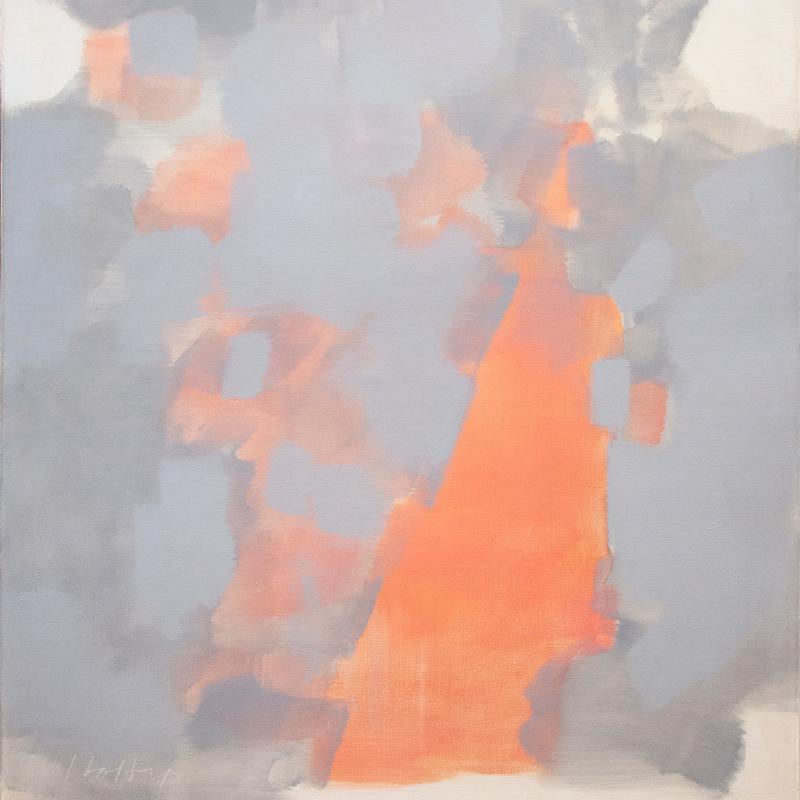 Carl HoltyGray and Rose, 1964Oil on canvas60 X 54 inches,
Carl HoltyGray and Rose, 1964Oil on canvas60 X 54 inches,
Framed: 62 x 56 inchesSigned: Holty lower left
-
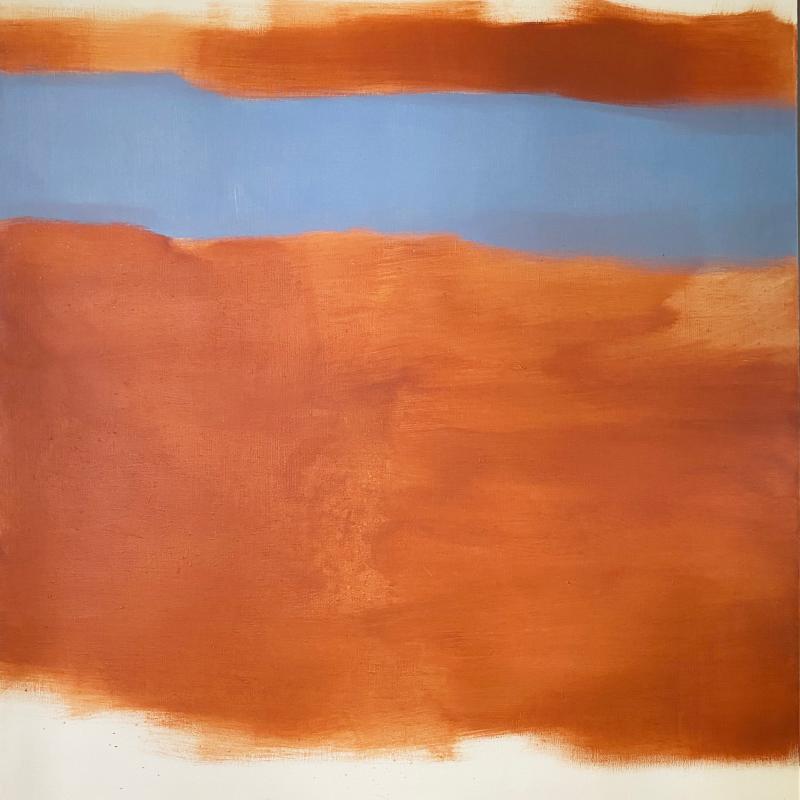 Carl HoltyMirage, 1964Oil on canvas60 x 54 inches Framed: 62 x 56 inchesSigned: Holty (verso), Marked: This is a gift to my wife Elizabeth - Carl Holty 1964 (verso)
Carl HoltyMirage, 1964Oil on canvas60 x 54 inches Framed: 62 x 56 inchesSigned: Holty (verso), Marked: This is a gift to my wife Elizabeth - Carl Holty 1964 (verso)
-
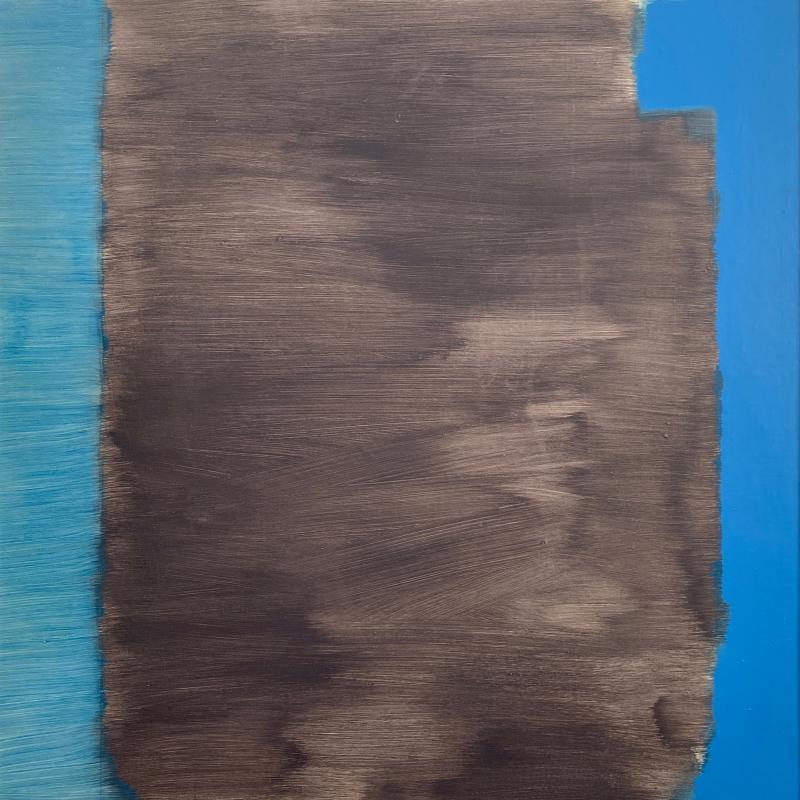 Carl HoltyVise, 1964Oil on canvas60 1/4 x 48 1/2 inches,
Carl HoltyVise, 1964Oil on canvas60 1/4 x 48 1/2 inches,
Framed: 61 x 49 inchesSigned: Holty lower right, Marked: Gift to my Daughter Antonia - Carl Holty 1964 (verso)
-
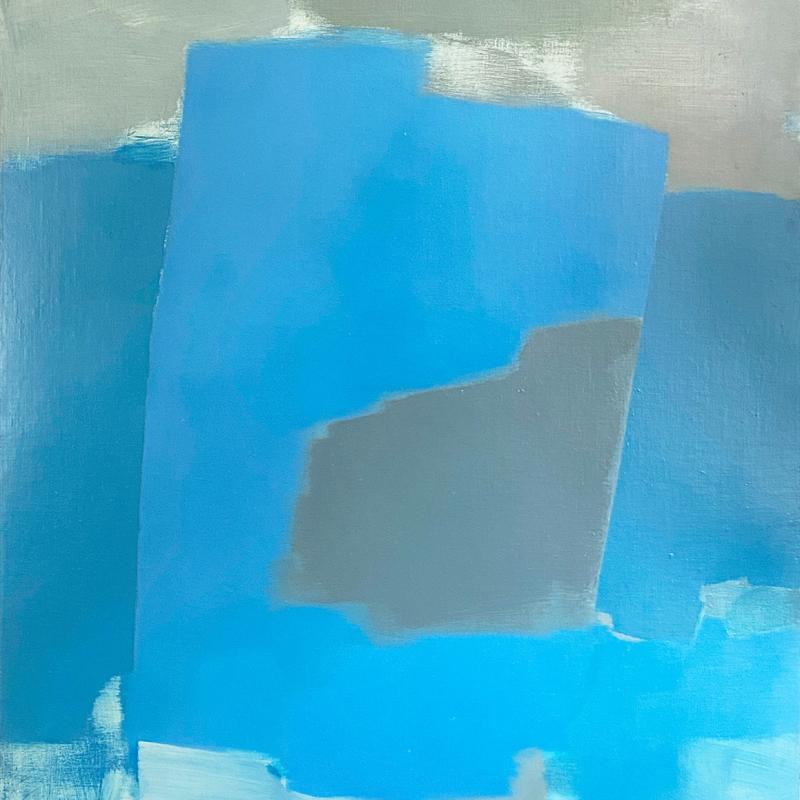 Carl HoltyUntitled, 1963-4Oil on canvas76 x 60 inches,
Carl HoltyUntitled, 1963-4Oil on canvas76 x 60 inches,
Framed: 78 x 62 inchesSigned: Carl Holty Estate signature stamp lower right and verso lower right
-
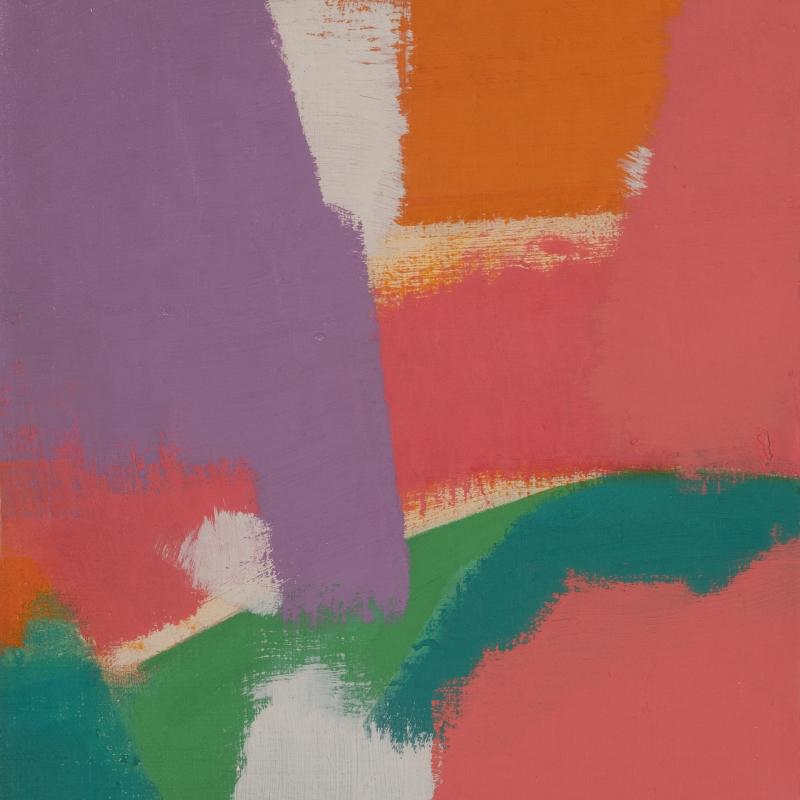 Carl HoltyColor Theory #650 Purple, Orange, Green, Pink, White, 1963Oil on canvas mounted on Masonite11 3/4 x 8 7/8 inches,
Carl HoltyColor Theory #650 Purple, Orange, Green, Pink, White, 1963Oil on canvas mounted on Masonite11 3/4 x 8 7/8 inches,
Framed: 20 x 17 inchesSigned: Holty Estate signature stamp lower right,
Marked: ‘63 / 650 (verso)
-
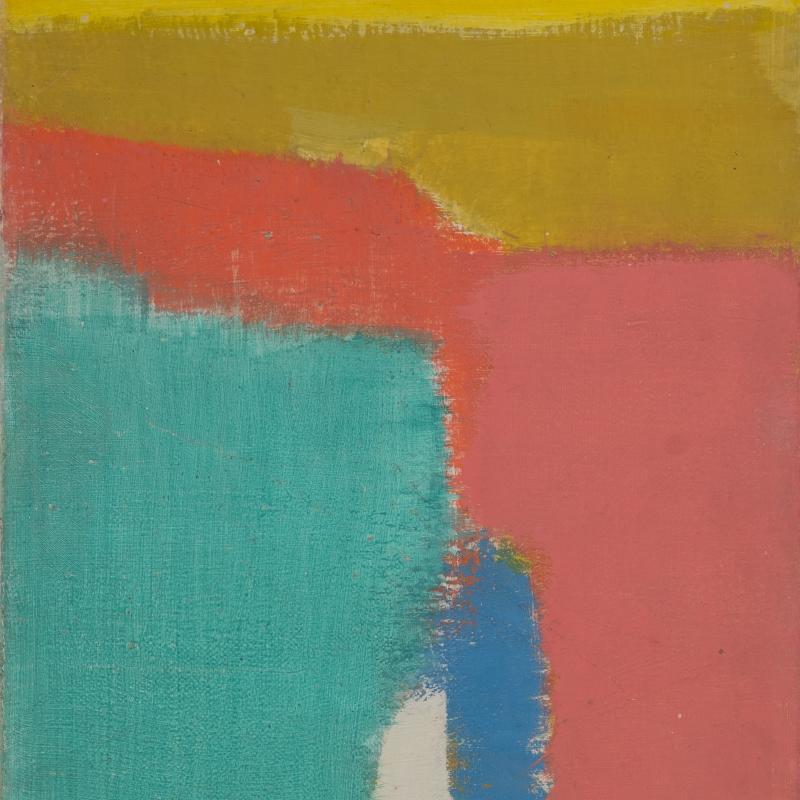 Carl HoltyColor Theory #656 Yellow, Pink, Green, Blue, White, 1963Oil on canvas mounted on Masonite12 x 9 inches,
Carl HoltyColor Theory #656 Yellow, Pink, Green, Blue, White, 1963Oil on canvas mounted on Masonite12 x 9 inches,
Framed: 20 x 17 inchesSigned: Holty estate signature stamp lower right
-
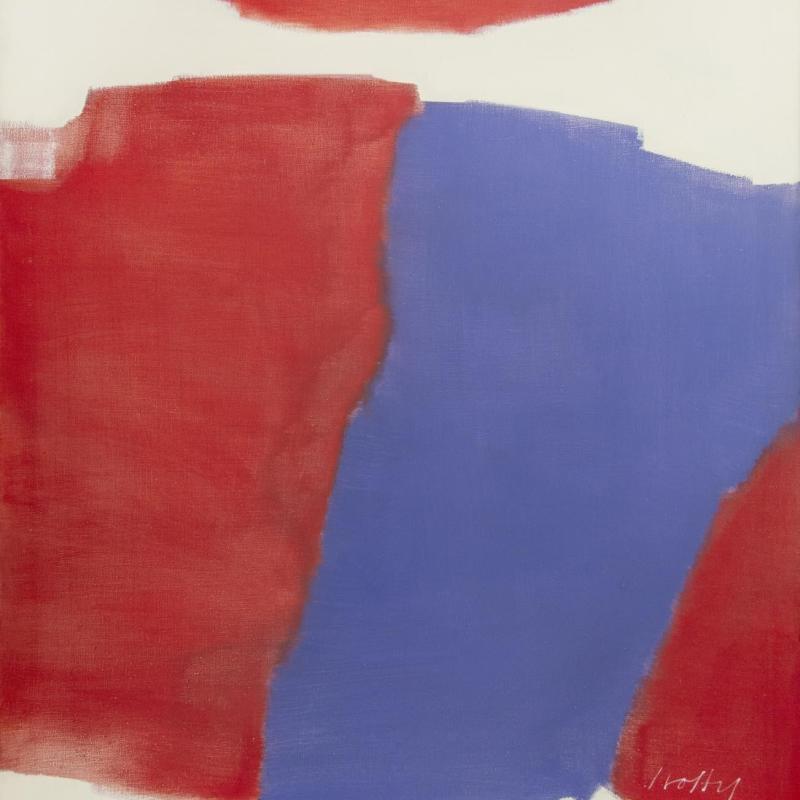 Carl HoltyMoving Red, 1963Oil on canvas60 x 46 inches,
Carl HoltyMoving Red, 1963Oil on canvas60 x 46 inches,
Framed: 62 x 48 inchesSigned: Holty lower right
-
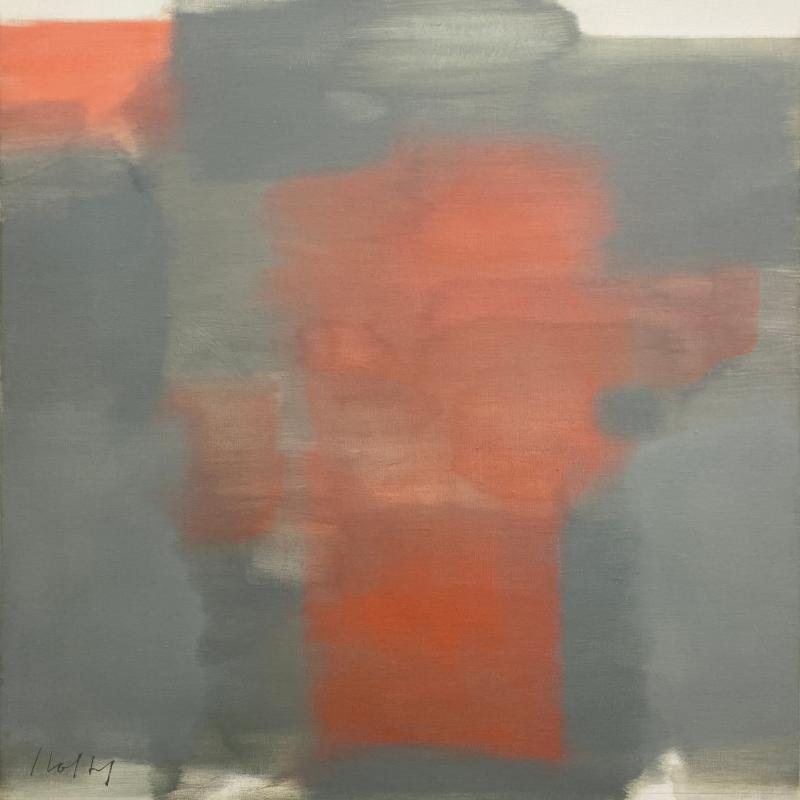 Carl Holty33,000, 1962Oil on canvas70 x 56 inches,
Carl Holty33,000, 1962Oil on canvas70 x 56 inches,
Framed: 72 x 58 inchesSigned: Holty (l.l.)
-
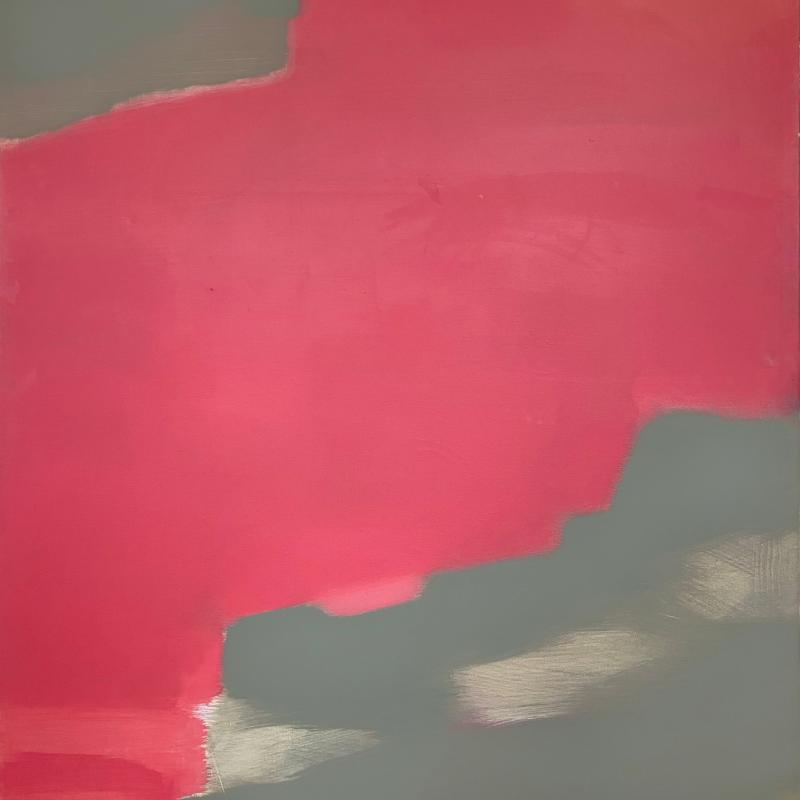 Carl HoltyBig Zen Red-Eyed Goose, 1962Oil on canvas70 x 56 inches
Carl HoltyBig Zen Red-Eyed Goose, 1962Oil on canvas70 x 56 inches
Framed: 72 x 58 inchesSigned: Holty lower right
-
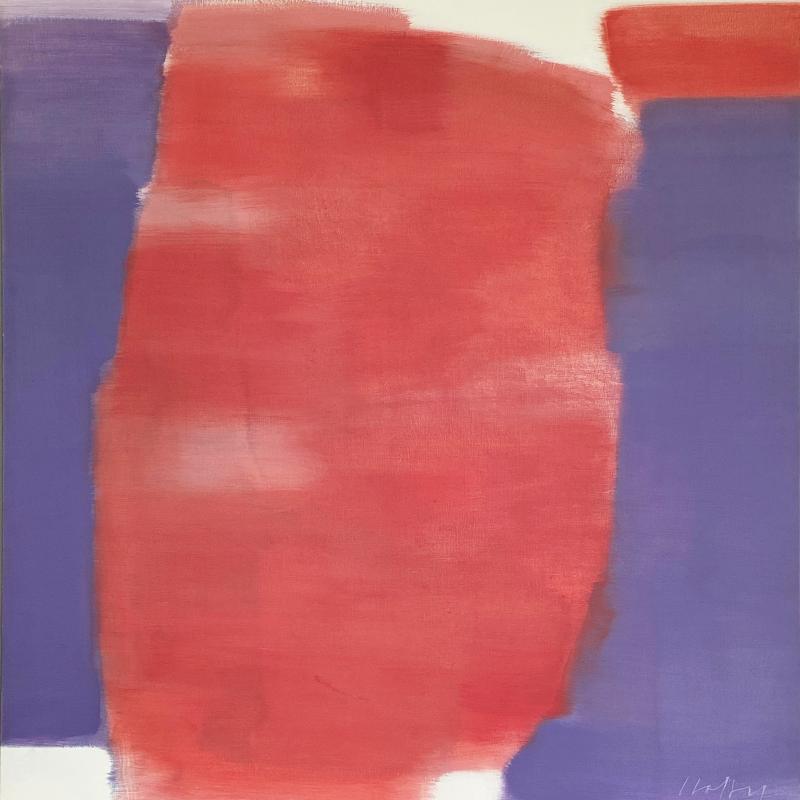 Carl HoltyPressed, 1962Oil on canvas70 x 56 inches,
Carl HoltyPressed, 1962Oil on canvas70 x 56 inches,
Framed: 71 3/4 x 58 inchesSigned: Holty lower right and dated verso 1962
Inscribed verso: Gift to my daughter Antonio
-
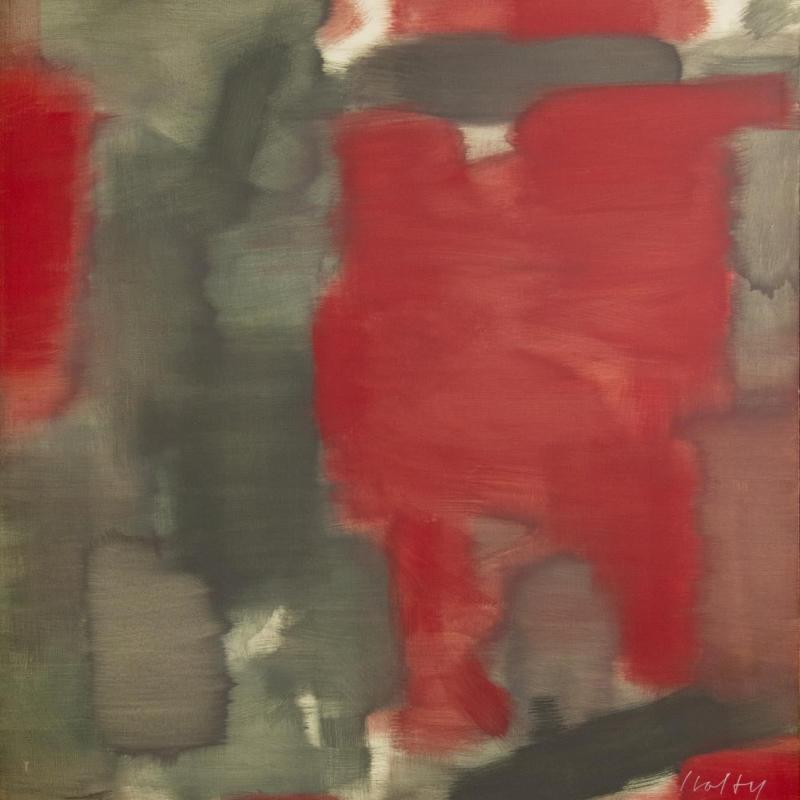 Carl HoltyTwelfth Night (Red), 1962Oil on canvas70 x 56 inches Framed: 72 x 58 inchesSigned: Holty lower right, On verso stretcher: Graham Gallery exhibition label Inscribed on reverse
Carl HoltyTwelfth Night (Red), 1962Oil on canvas70 x 56 inches Framed: 72 x 58 inchesSigned: Holty lower right, On verso stretcher: Graham Gallery exhibition label Inscribed on reverse
-
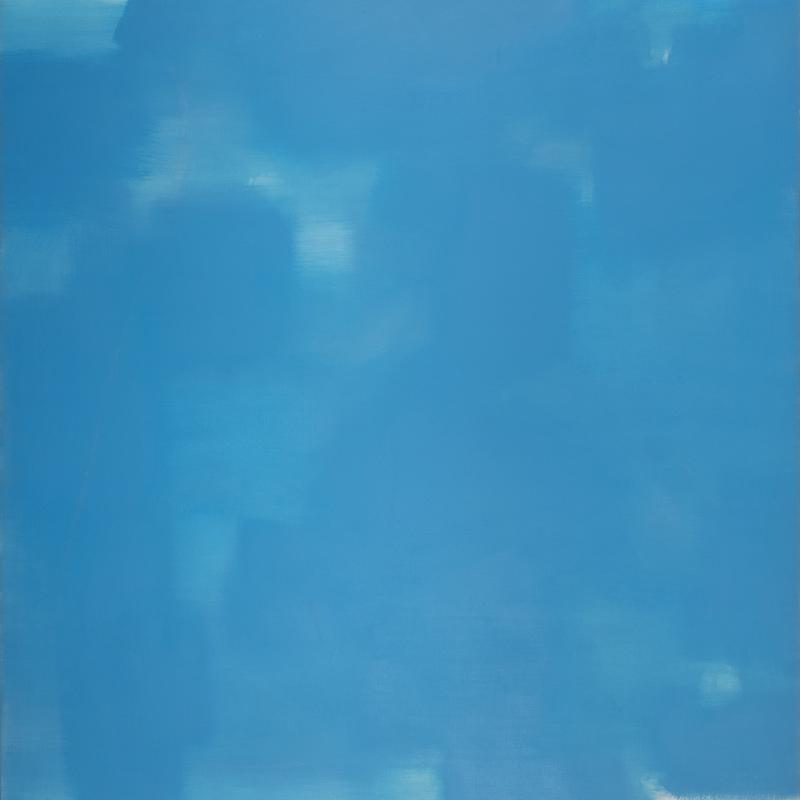 Carl HoltyTwelfth Night, Blue, 1962Oil on canvas70 x 56 inches,
Carl HoltyTwelfth Night, Blue, 1962Oil on canvas70 x 56 inches,
Framed: 72 1/4 x 58 1/4 inchesSigned: Holty lower right
-
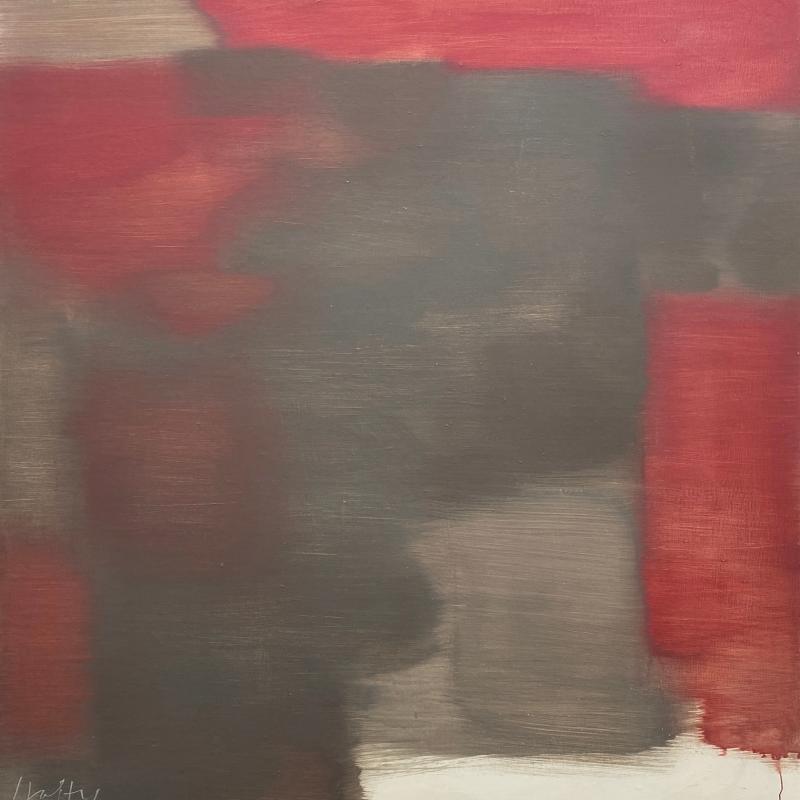 Carl HoltyUntitled, 1962Oil on canvas70 x 56 inches,
Carl HoltyUntitled, 1962Oil on canvas70 x 56 inches,
Framed: 72 x 58 inchesSigned: Holty lower left
-
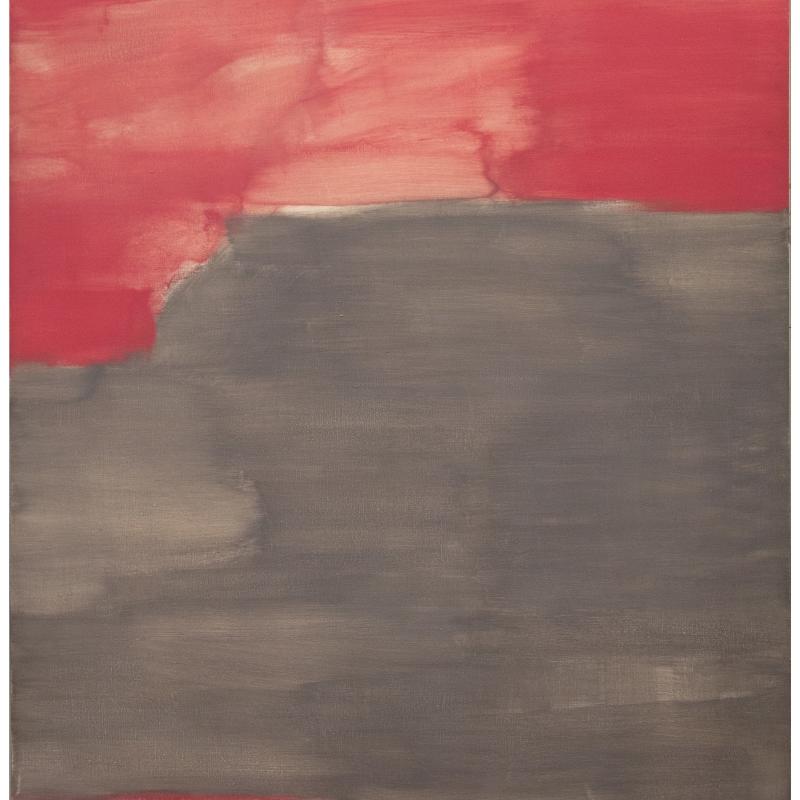 Carl HoltyCienega, 1961Oil on canvas60 x 48 inches,
Carl HoltyCienega, 1961Oil on canvas60 x 48 inches,
Framed: 62 x 50 inchesSigned: Holty (l.r.), Estate of Artist
-
 Carl HoltyFlowering, 1961Oil on canvas38 x 36 inches,
Carl HoltyFlowering, 1961Oil on canvas38 x 36 inches,
Framed: 40 x 38 inchesSigned: Holty lower right
-
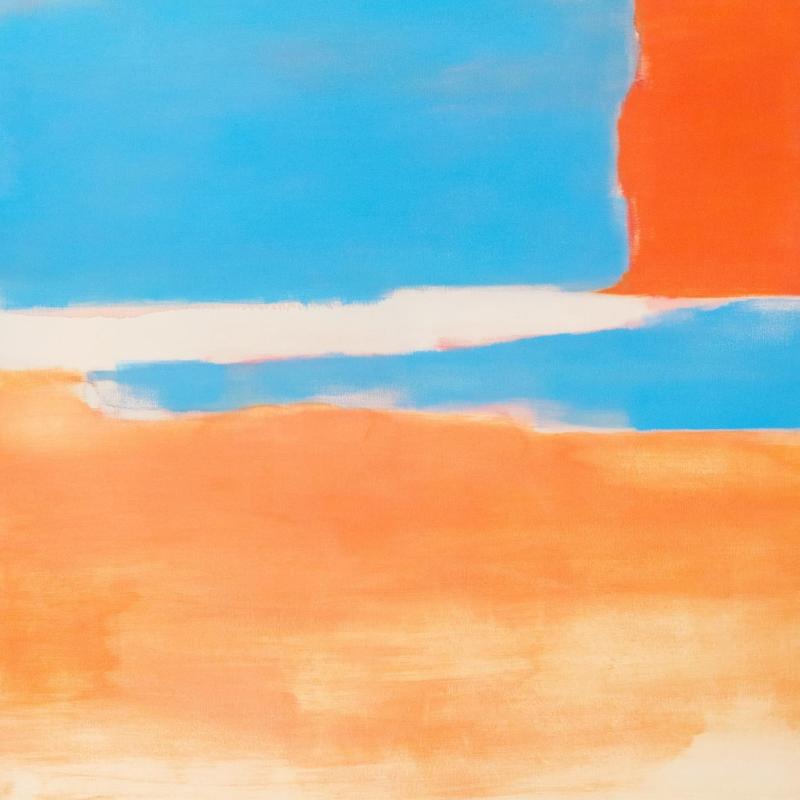 Carl HoltyNorth by Northwest, 1960Oil on canvas66 x 50 inches,
Carl HoltyNorth by Northwest, 1960Oil on canvas66 x 50 inches,
Framed: 67 3/4 x 51 3/4 inchesSigned: Carl Holty (verso)
-
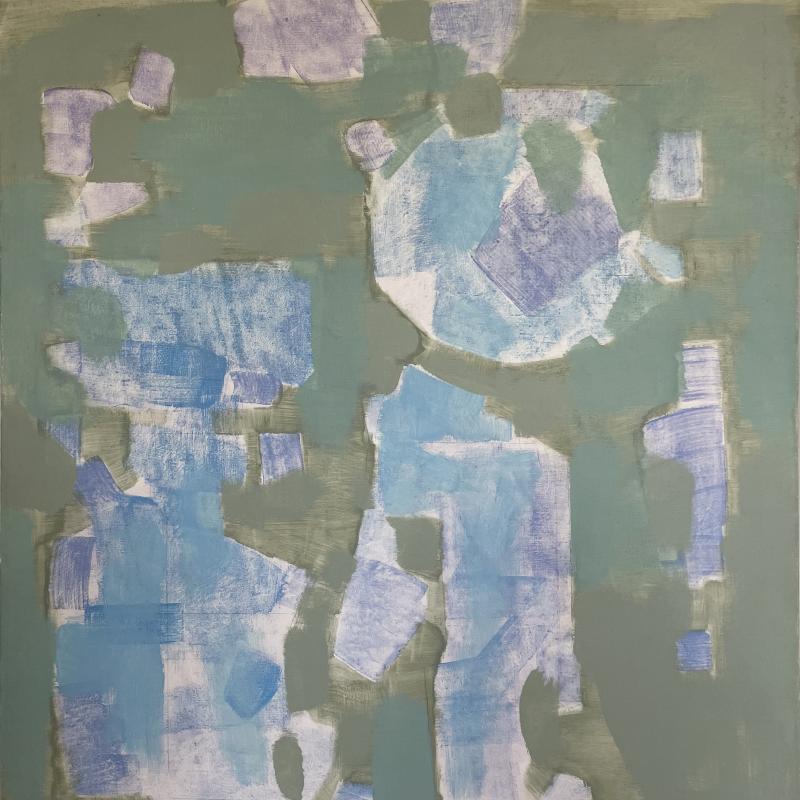 Carl HoltyBlue and Green, 1959Oil on canvas69 x 54 inches,
Carl HoltyBlue and Green, 1959Oil on canvas69 x 54 inches,
Framed: 71 1/2 x 56 1/2 inchesSigned: Carl Holty 1959 (verso)
-
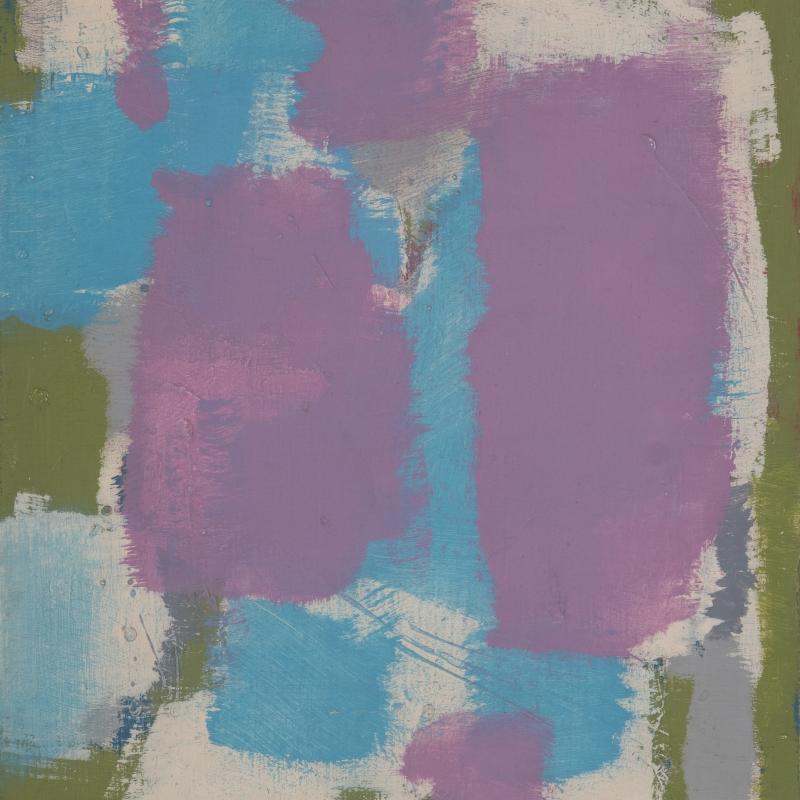 Carl HoltyColor Theory #602 White, Green, Blue, Purple, 1959Oil on canvas mounted on Masonite12 x 9 inches,
Carl HoltyColor Theory #602 White, Green, Blue, Purple, 1959Oil on canvas mounted on Masonite12 x 9 inches,
Framed: 20 x 17 inchesSigned: Holty lower center
Marked: ‘59 / 602 (verso)
-
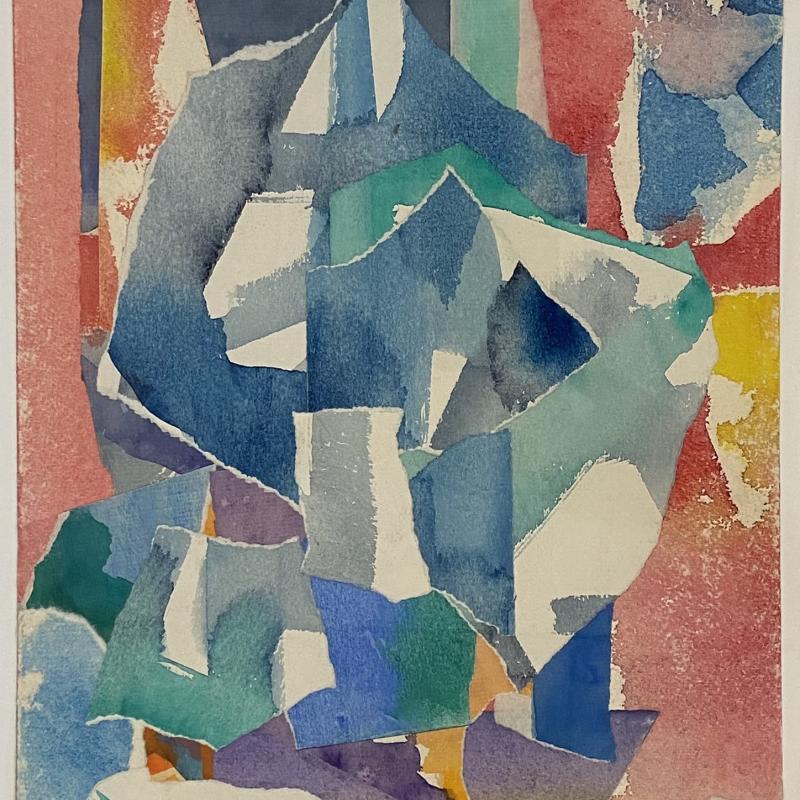 Carl HoltyCollage #384, 1958Watercolor and collage on paper12 1/2 x 9 inches Framed: 19 1/2 x 16 1/2 inchesSigned: Carl Holty lower right
Carl HoltyCollage #384, 1958Watercolor and collage on paper12 1/2 x 9 inches Framed: 19 1/2 x 16 1/2 inchesSigned: Carl Holty lower right
-
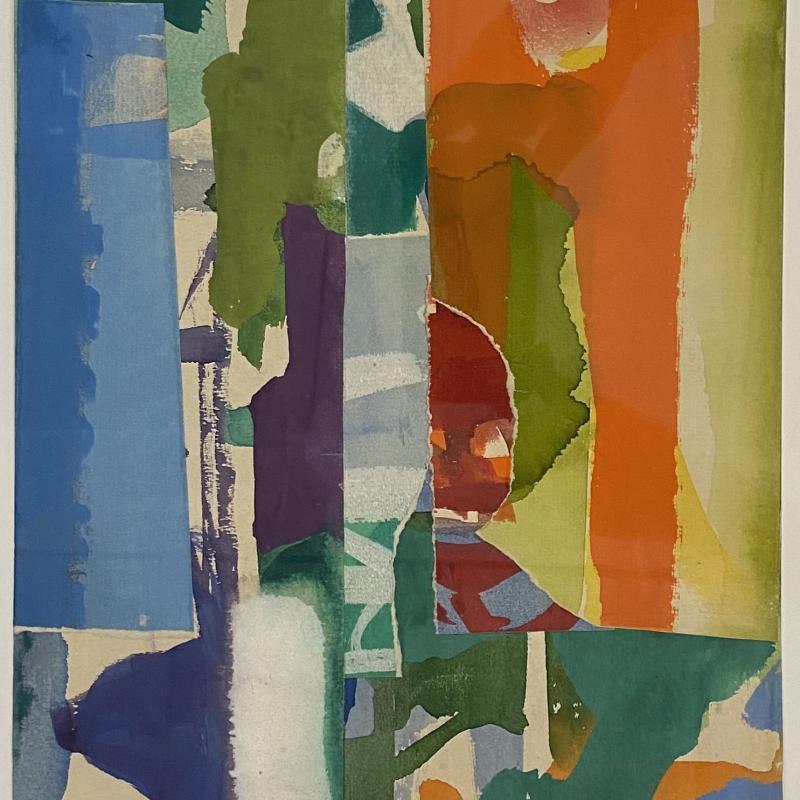 Carl HoltyCollage #385, 1958Gouache and collage on paper12 x 9 inches,
Carl HoltyCollage #385, 1958Gouache and collage on paper12 x 9 inches,
Framed: 19 1/2 x 16 1/2 inchesSigned: Carl Holty 58 lower right,
-
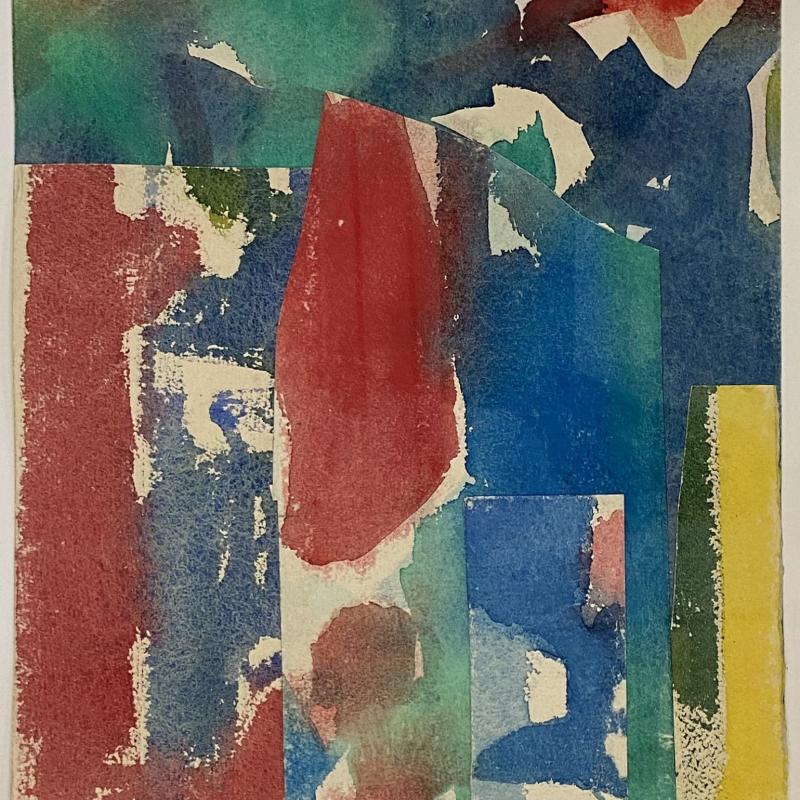 Carl HoltyCollage #388, 1958Gouache and collage on paper12 x 9 inches Framed: 19 1/2 x 16 1/2 inchesSigned: Carl Holty 58 lower left,
Carl HoltyCollage #388, 1958Gouache and collage on paper12 x 9 inches Framed: 19 1/2 x 16 1/2 inchesSigned: Carl Holty 58 lower left,
-
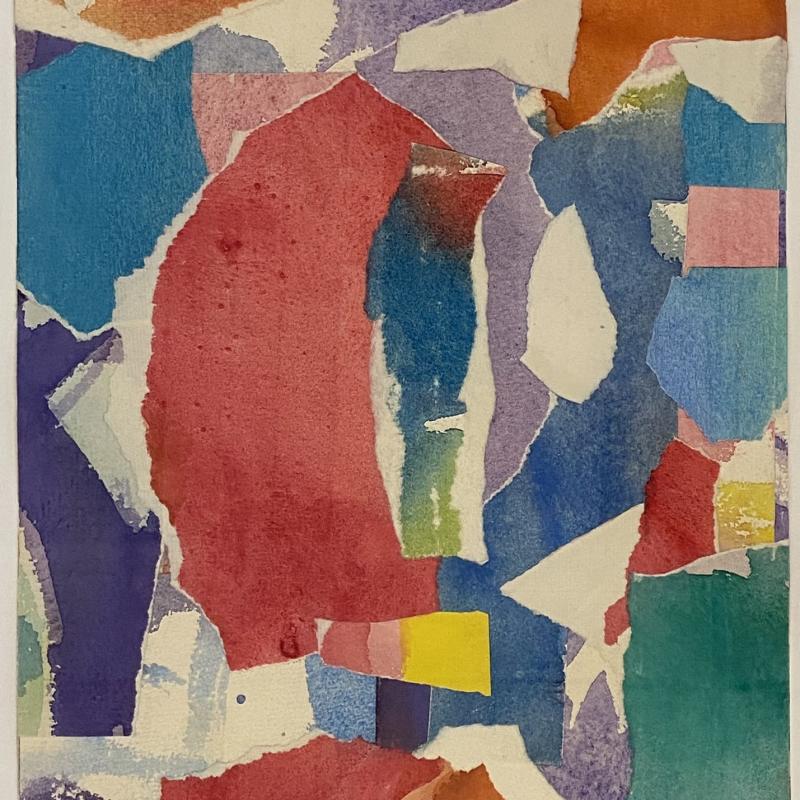 Carl HoltyCollage #389, 1958Gouache collage on paper13 1/2 x 9 inches Framed: 19 1/2 x 16 1/2 inchesSigned: Carl Holty - 58 lower left
Carl HoltyCollage #389, 1958Gouache collage on paper13 1/2 x 9 inches Framed: 19 1/2 x 16 1/2 inchesSigned: Carl Holty - 58 lower left
-
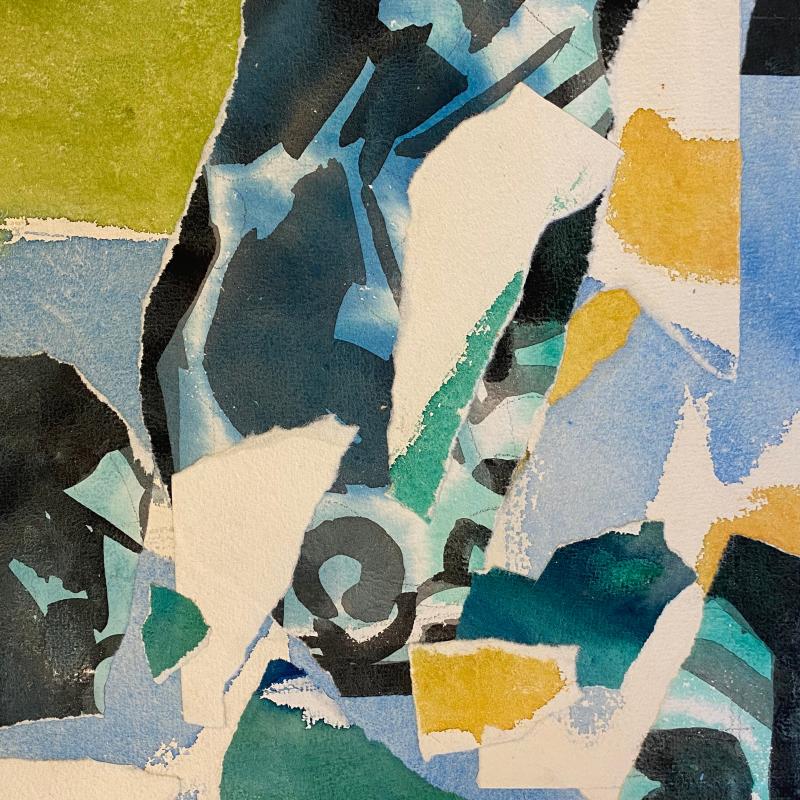 Carl HoltyCollage III, 1958Gouache collage paper12 x 9 inches,
Carl HoltyCollage III, 1958Gouache collage paper12 x 9 inches,
Framed: 19 1/2 x 16 1/2 inchesSigned: Holty 58 lower left
-
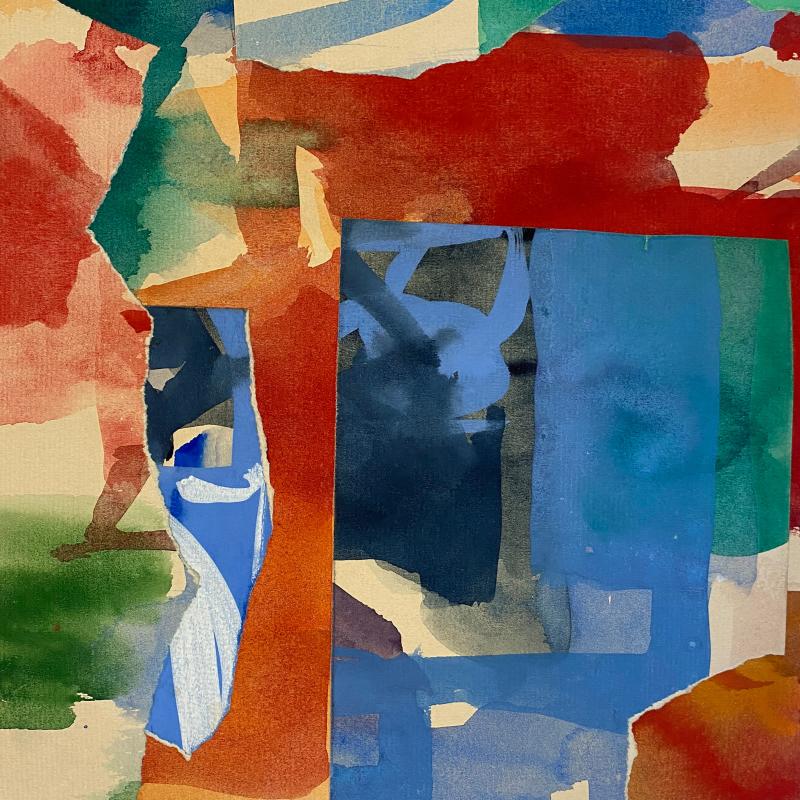 Carl HoltyCollage IV, 1958Gouache collage paper12 1/4 x 9 inches,
Carl HoltyCollage IV, 1958Gouache collage paper12 1/4 x 9 inches,
Framed: 19 1/2 x 16 1/2 inchesSigned: C Holty - 58 lower left
-
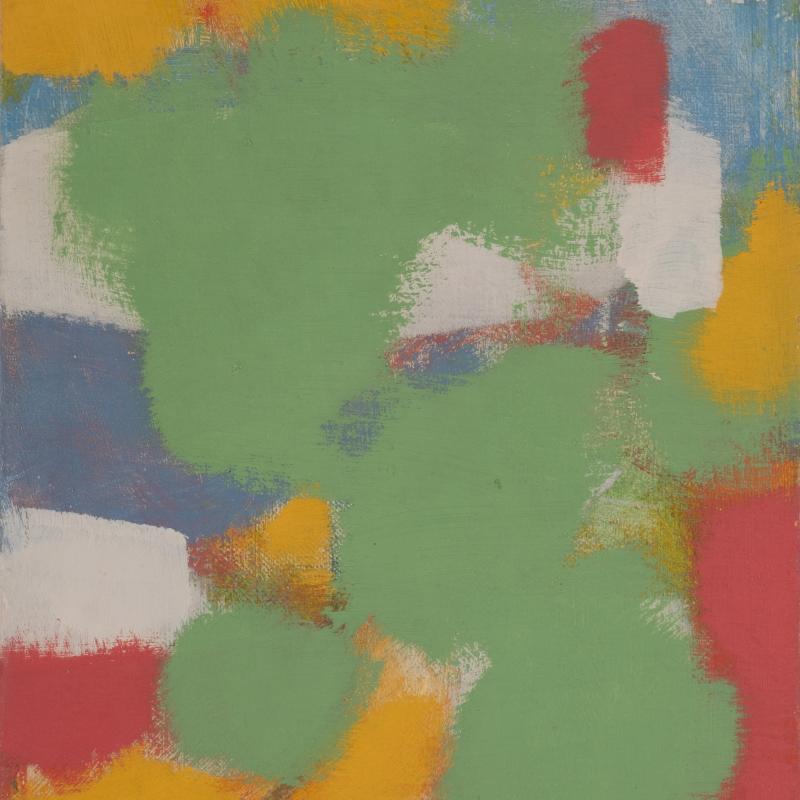 Carl HoltyColor Theory #646 White, Yellow, Green, Blue, Red, 1958Oil on canvas mounted on Masonite11 3/4 x 9 inches,
Carl HoltyColor Theory #646 White, Yellow, Green, Blue, Red, 1958Oil on canvas mounted on Masonite11 3/4 x 9 inches,
Framed: 20 x 17 inchesSigned: Holty Estate signature stamp lower right
-
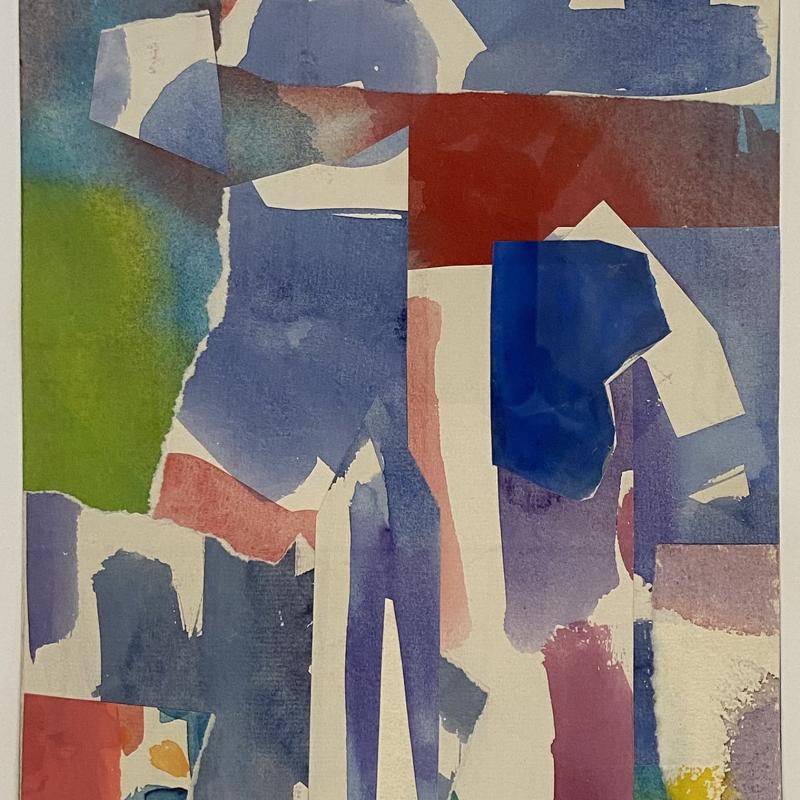 Carl HoltyCollage #392, 1957Gouache and collage on paper12 x 9 inches Framed: 19 1/2 x 16 1/2 inchesSigned: Holty - 57 lower left, Marked: 392 (verso)
Carl HoltyCollage #392, 1957Gouache and collage on paper12 x 9 inches Framed: 19 1/2 x 16 1/2 inchesSigned: Holty - 57 lower left, Marked: 392 (verso)
-
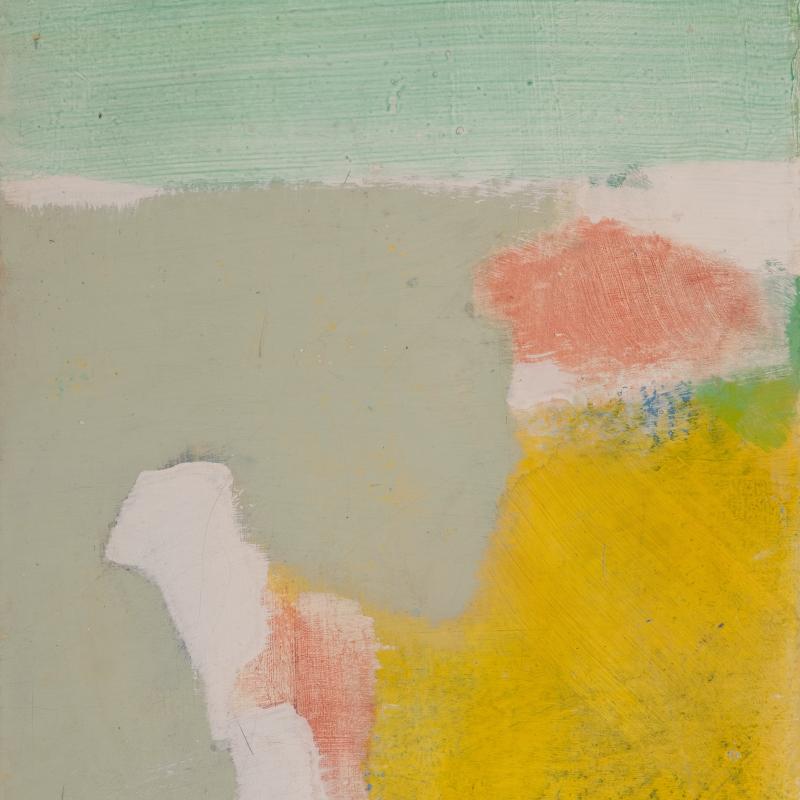 Carl HoltyColor Theory #592 White, Green, Yellow, Orange, 1957Oil on canvas mounted on Masonite12 x 9 inches,
Carl HoltyColor Theory #592 White, Green, Yellow, Orange, 1957Oil on canvas mounted on Masonite12 x 9 inches,
Framed: 20 x 17 inchesSigned: Holty 57 (l.l.), Marked: 1957 / 592 (verso) Andrew Crispo Gallery label (verso), Estate of Carl Holty stamp, verso
-
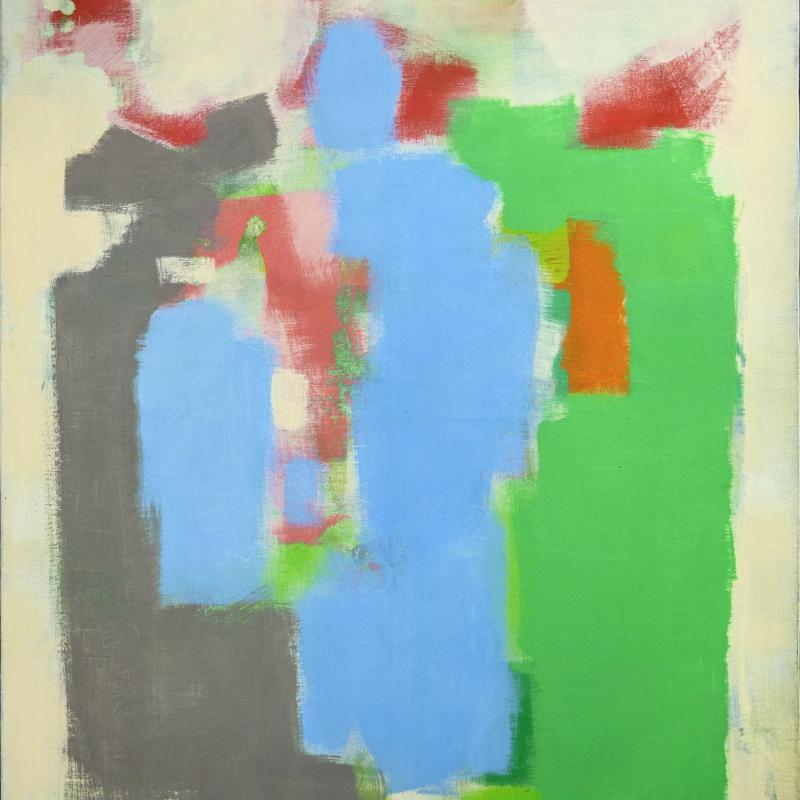 Carl HoltySeparation, 1957Oil on canvas52 x 36 inches Framed: 54 x 38 inchesSigned: Holty lower right
Carl HoltySeparation, 1957Oil on canvas52 x 36 inches Framed: 54 x 38 inchesSigned: Holty lower right
-
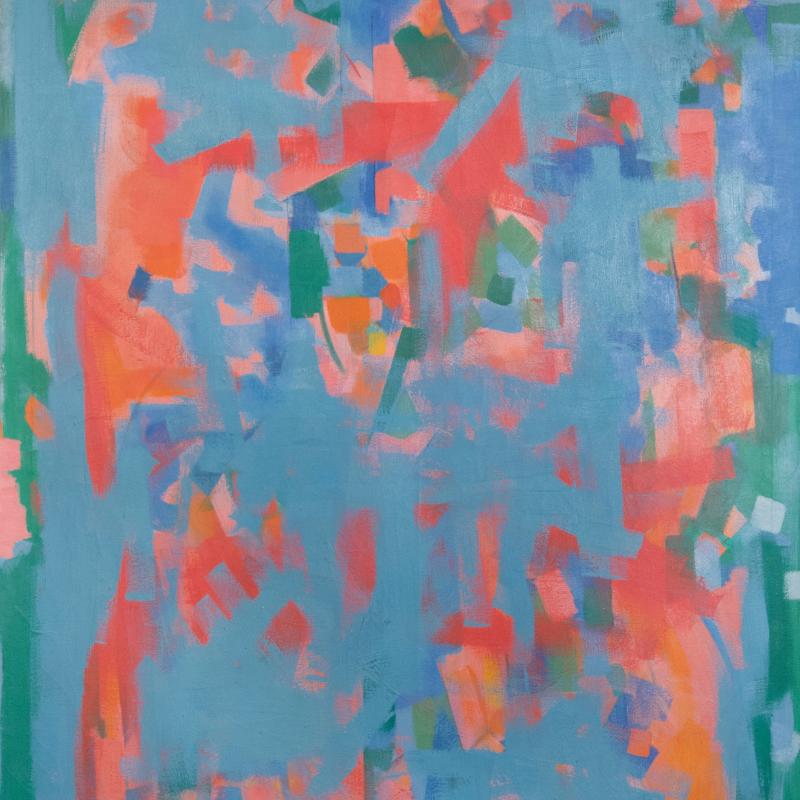 Carl HoltyUntitled #158, 1957Oil on canvas50 x 39 inches,
Carl HoltyUntitled #158, 1957Oil on canvas50 x 39 inches,
Framed: 52 3/8 x 40 1/2 x 1 7/8 inchesSigned: Carl Holty (l.r.),
-
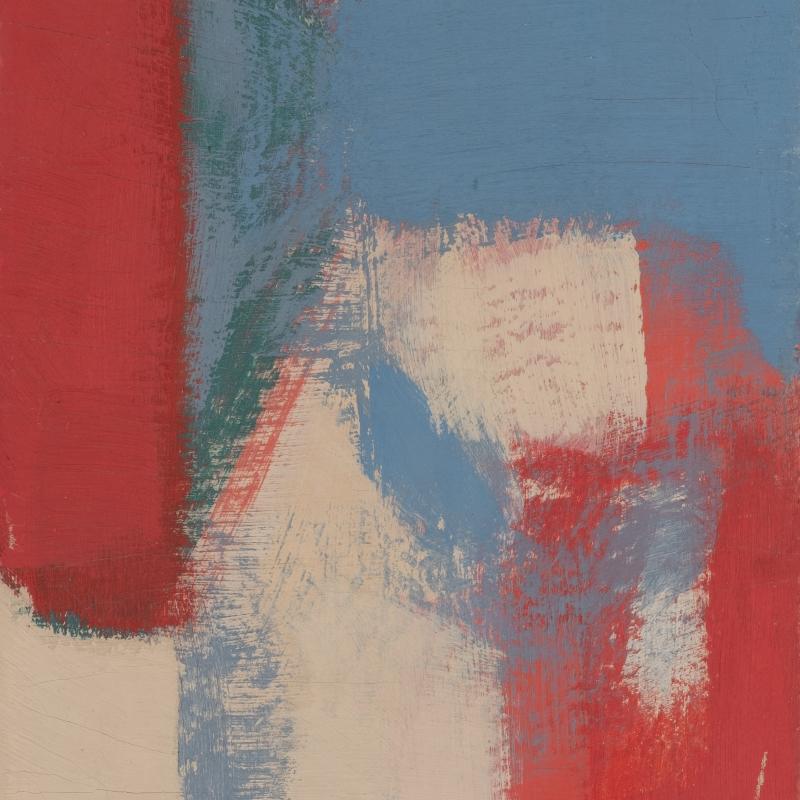 Carl HoltyColor Theory #546 Red, White, Blue, Green, 1955Oil on canvas mounted on Masonite10 x 6 5/8 inches,
Carl HoltyColor Theory #546 Red, White, Blue, Green, 1955Oil on canvas mounted on Masonite10 x 6 5/8 inches,
Framed: 20 x 17 inchesSigned: Holty Estate signature stamp lower right,
-
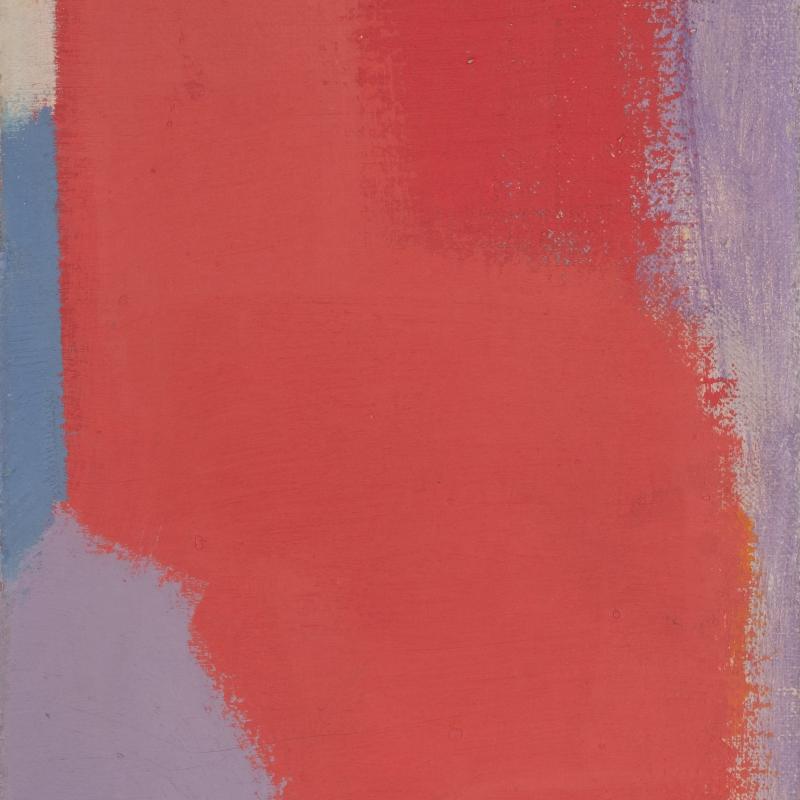 Carl HoltyColor Theory #562 Purple, Red, Blue, White, 1955Oil on canvas mounted on Masonite12 x 8 inches,
Carl HoltyColor Theory #562 Purple, Red, Blue, White, 1955Oil on canvas mounted on Masonite12 x 8 inches,
Framed: 20 x 17 inchesSigned: Holty Estate signature stamp lower right, Marked: 562 (verso) Andrew Crispo Gallery label (verso), Estate of Carl Holty stamp, verso
-
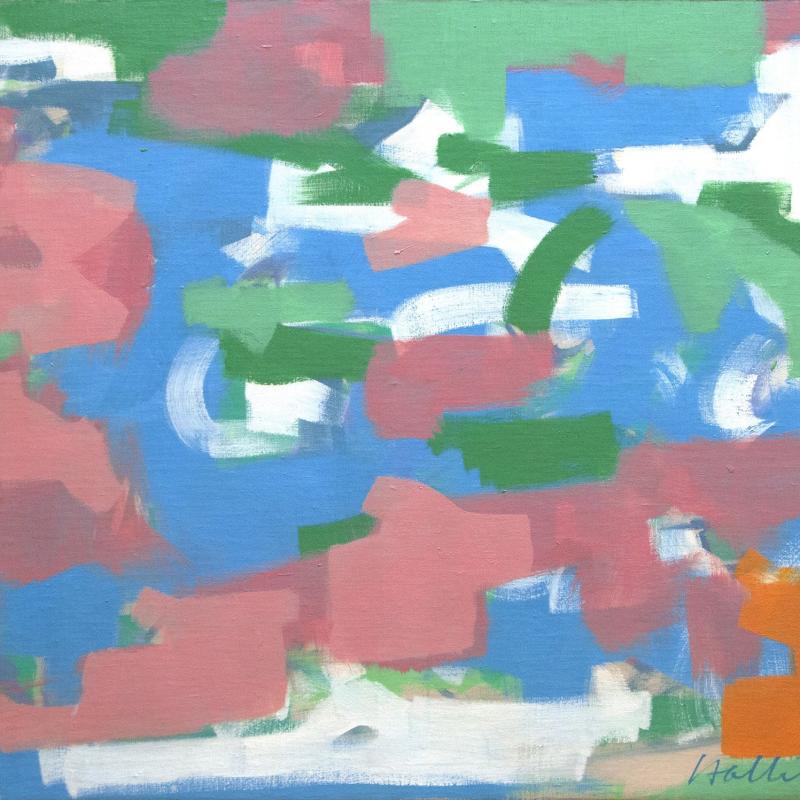 Carl HoltyUntitled #162, 1954Oil on canvas30 x 36 inches,
Carl HoltyUntitled #162, 1954Oil on canvas30 x 36 inches,
Framed: 31 3/4 x 37 3/4 inchesSigned: Holty lower right
-
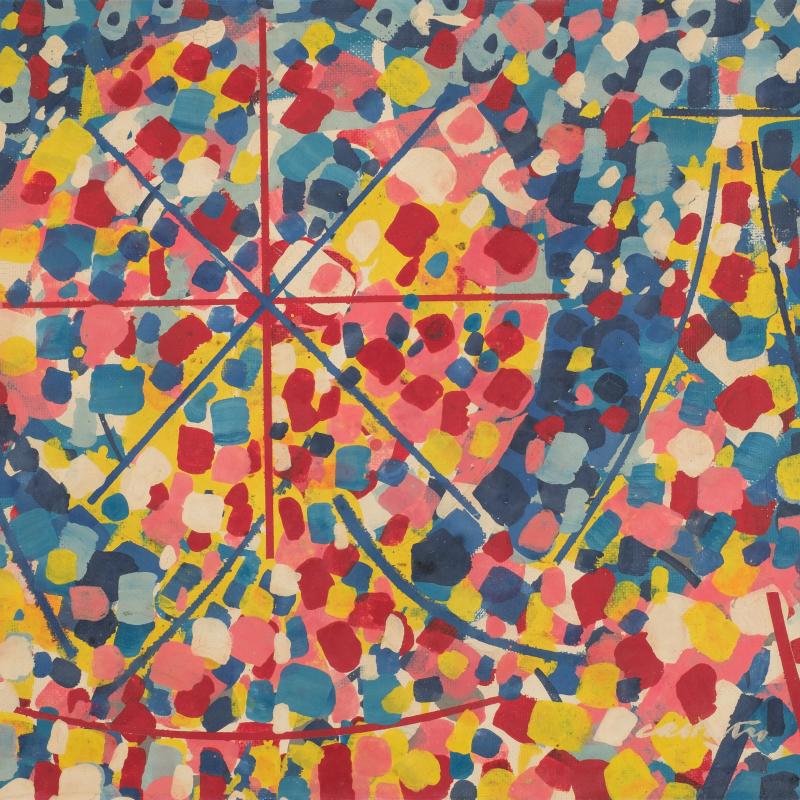 Carl HoltyMosaic #1002, 1950Ink on paper mounted on Masonite17 1/4 x 22 3/4 inches,
Carl HoltyMosaic #1002, 1950Ink on paper mounted on Masonite17 1/4 x 22 3/4 inches,
Framed: 21 x 26 1/2 inchesSigned: C R Holty lower right, Marked: Carl Holty 1950 / 1002 (verso)
-
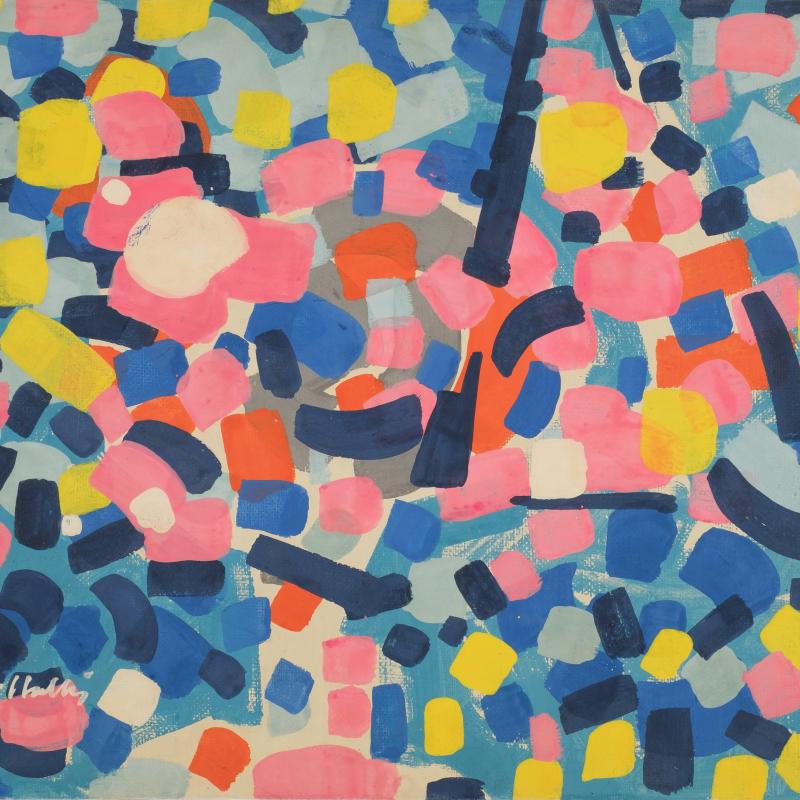 Carl HoltyMosaic #1003, 1950Gouache on paper mounted on Masonite16 1/8 x 21 3/4 inches,
Carl HoltyMosaic #1003, 1950Gouache on paper mounted on Masonite16 1/8 x 21 3/4 inches,
Framed: 20 x 25 1/4 inchesSigned: Carl Holty lower left, Marked: Property of / Carl Holty 1950 / 1003 (verso)
-
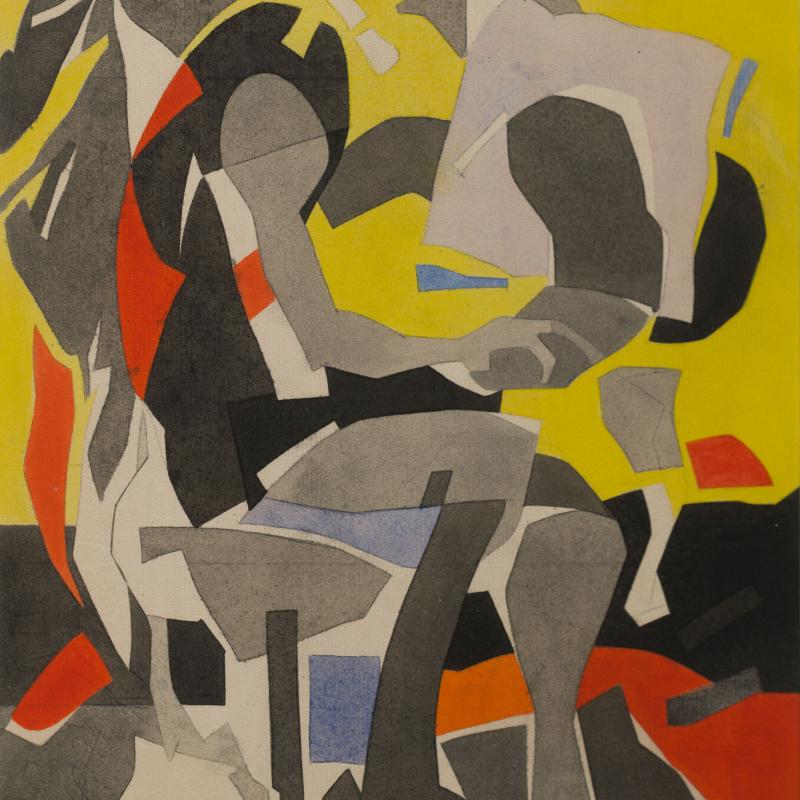 Carl HoltySeated Figure, 1945Watercolor, graphite on paper11 3/4 x 9 inches,
Carl HoltySeated Figure, 1945Watercolor, graphite on paper11 3/4 x 9 inches,
Framed: 22 1/4 x 18 inchesSigned: Carl Holty 45’ (l.r.)
-
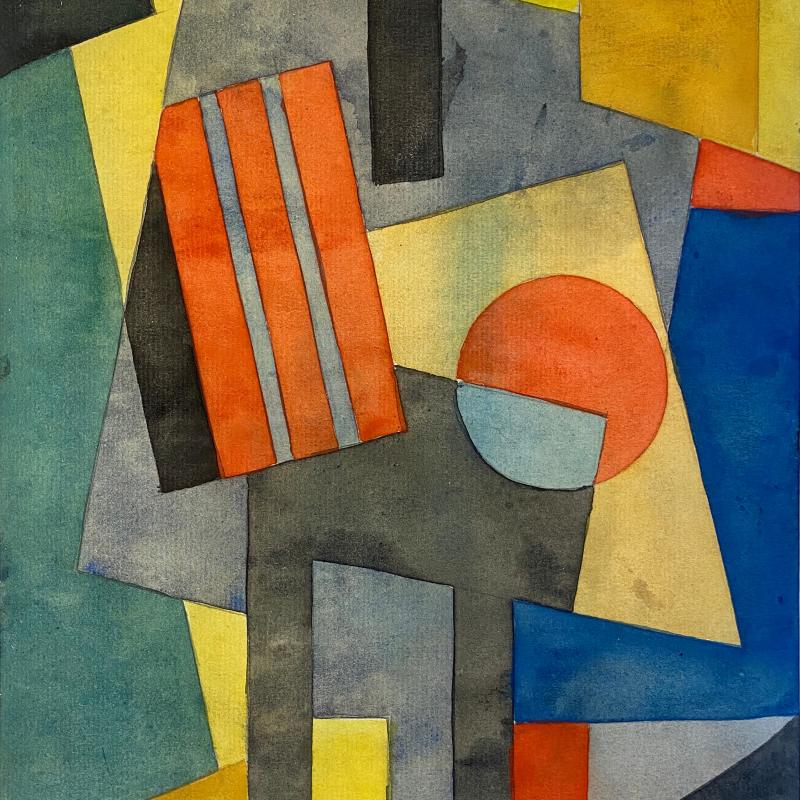 Carl HoltyHard Edge Forms I, 1941Gouache on paper10 1/2 x 7 5/8 inches,
Carl HoltyHard Edge Forms I, 1941Gouache on paper10 1/2 x 7 5/8 inches,
Framed: 19 1/2 x 16 1/2 inchesSigned: Carl Holty 1941 lower right
-
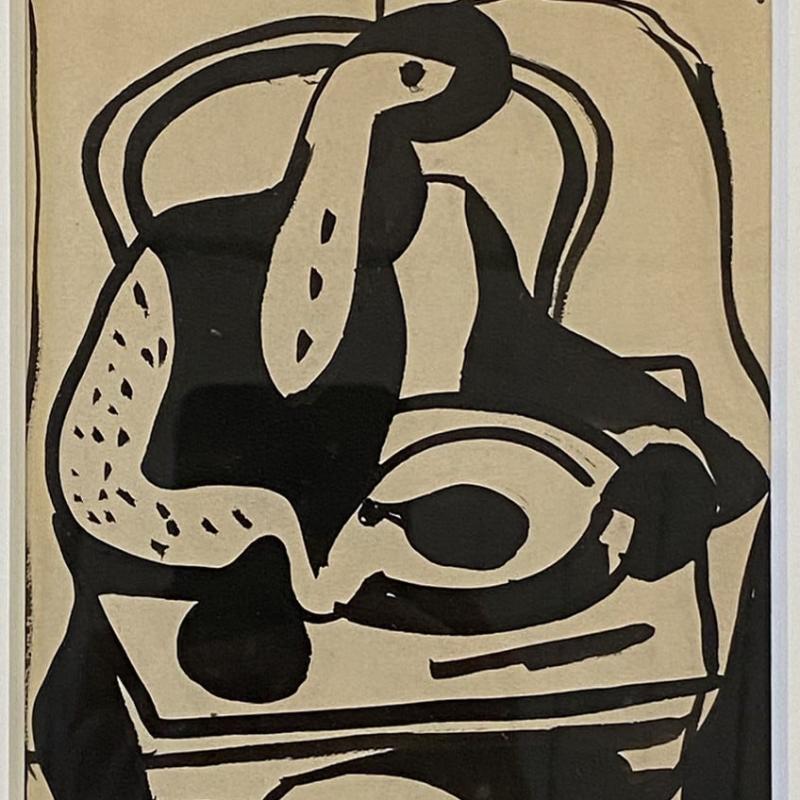 Carl HoltyDessin #3, 1931Ink on paperSight: 5 3/4 x 4 3/4 inches Framed: 17 1/2 x 16 1/2 inchesSigned: Holty Estate signature stamp upper right
Carl HoltyDessin #3, 1931Ink on paperSight: 5 3/4 x 4 3/4 inches Framed: 17 1/2 x 16 1/2 inchesSigned: Holty Estate signature stamp upper right
-
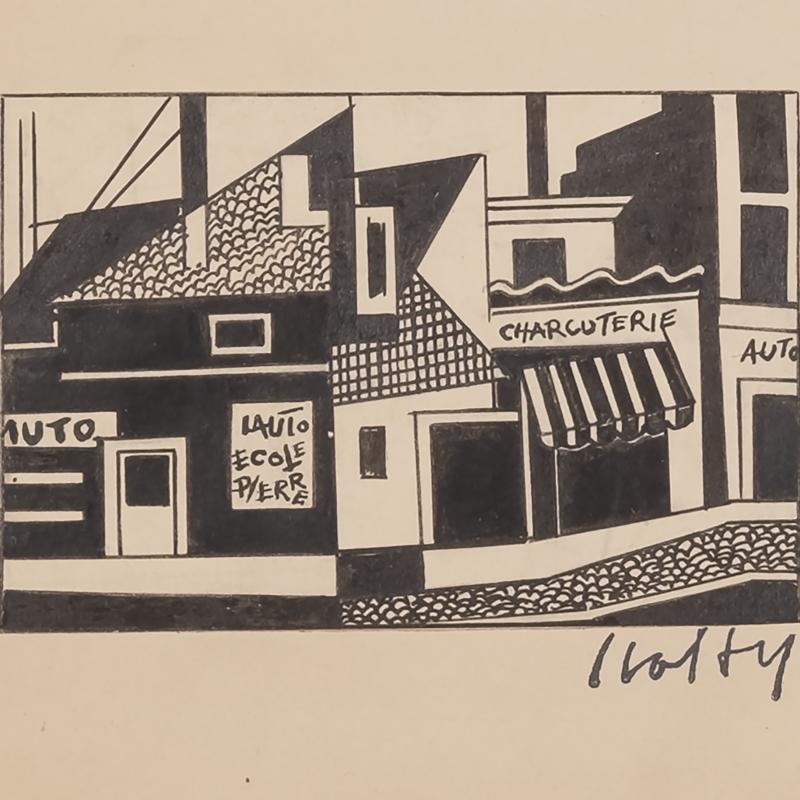 Carl HoltyParis, Charcuterie: Paris, House #2, 1930Ink on paperSight: 2 1/4 x 3 1/2 inches each Framed: 17 1/2 x 16 1/2 inchesSigned: Holty Estate signature stamp Lower right (each, under mat)
Carl HoltyParis, Charcuterie: Paris, House #2, 1930Ink on paperSight: 2 1/4 x 3 1/2 inches each Framed: 17 1/2 x 16 1/2 inchesSigned: Holty Estate signature stamp Lower right (each, under mat)
-
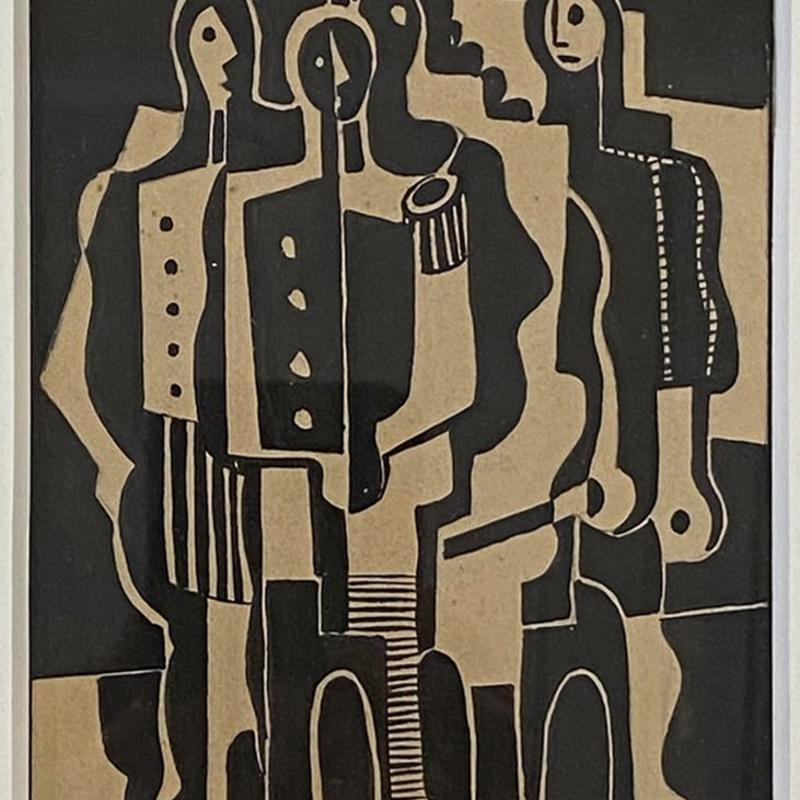 Carl HoltyParis, Four Figures, 1930Ink on paper5 1/4 x 4 inches sight Framed: 17 1/2 x 16 1/2 inchesSigned: Holty Estate signature stamp upper left (under mat)
Carl HoltyParis, Four Figures, 1930Ink on paper5 1/4 x 4 inches sight Framed: 17 1/2 x 16 1/2 inchesSigned: Holty Estate signature stamp upper left (under mat)
-
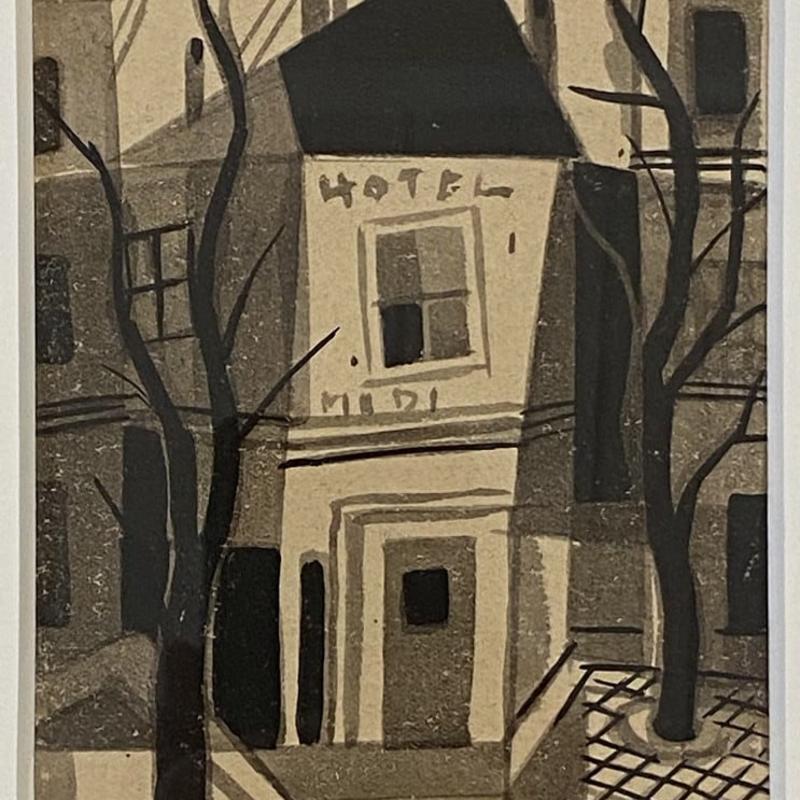 Carl HoltyParis, Hotel, 1930Ink on paper5 1/2 x 4 inches sight Framed: 17 1/2 x 16 1/2 inchesSigned: Holty Estate signature stamp (under mat)
Carl HoltyParis, Hotel, 1930Ink on paper5 1/2 x 4 inches sight Framed: 17 1/2 x 16 1/2 inchesSigned: Holty Estate signature stamp (under mat)
-
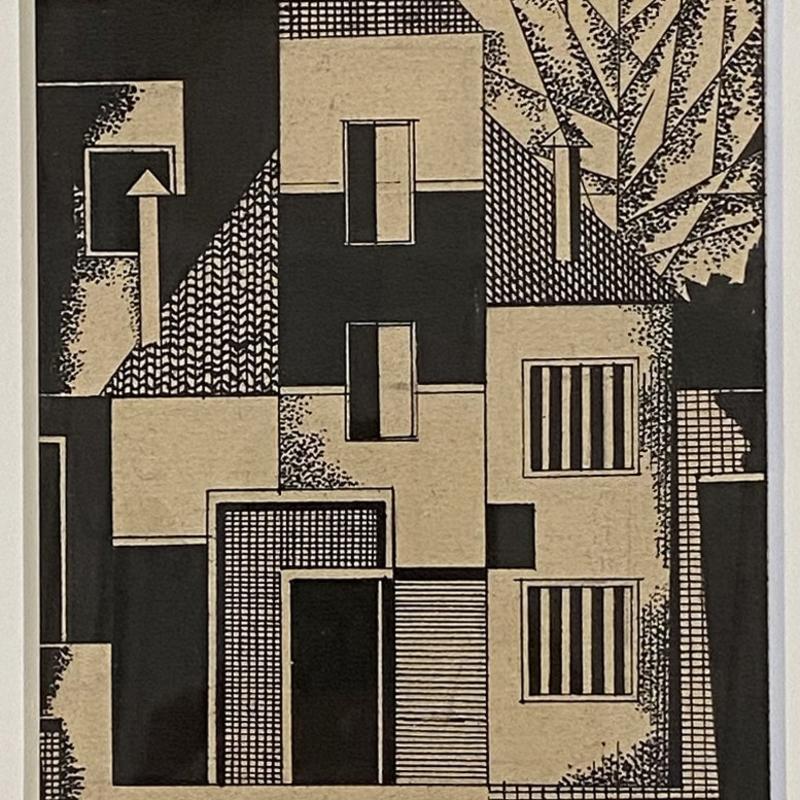 Carl HoltyParis, House #1, 1930Ink on paper6 1/2 x 4 1/4 inches sight Framed: 17 1/2 x 16 1/2 inchesSigned: Holty Estate signature stamp (under mat)
Carl HoltyParis, House #1, 1930Ink on paper6 1/2 x 4 1/4 inches sight Framed: 17 1/2 x 16 1/2 inchesSigned: Holty Estate signature stamp (under mat)
-
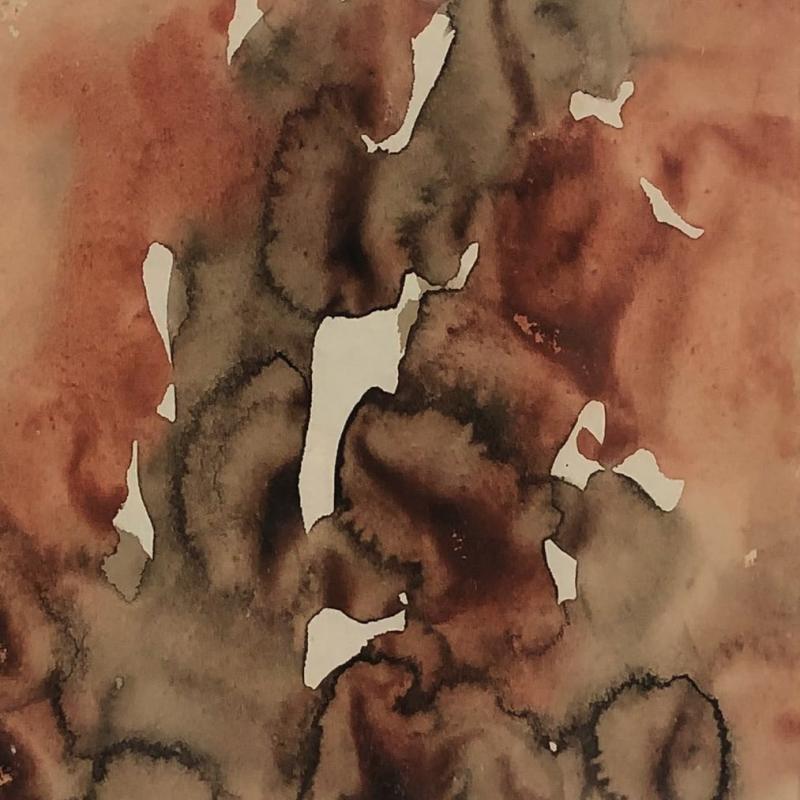 Carl HoltyColor Study #220Watercolor on paperSight size: 6 x 5 3/8 inches,
Carl HoltyColor Study #220Watercolor on paperSight size: 6 x 5 3/8 inches,
Framed: 14 1/2 x 13 1/2 inchesSigned: Holty lower left, Marked: 220 (verso)
-
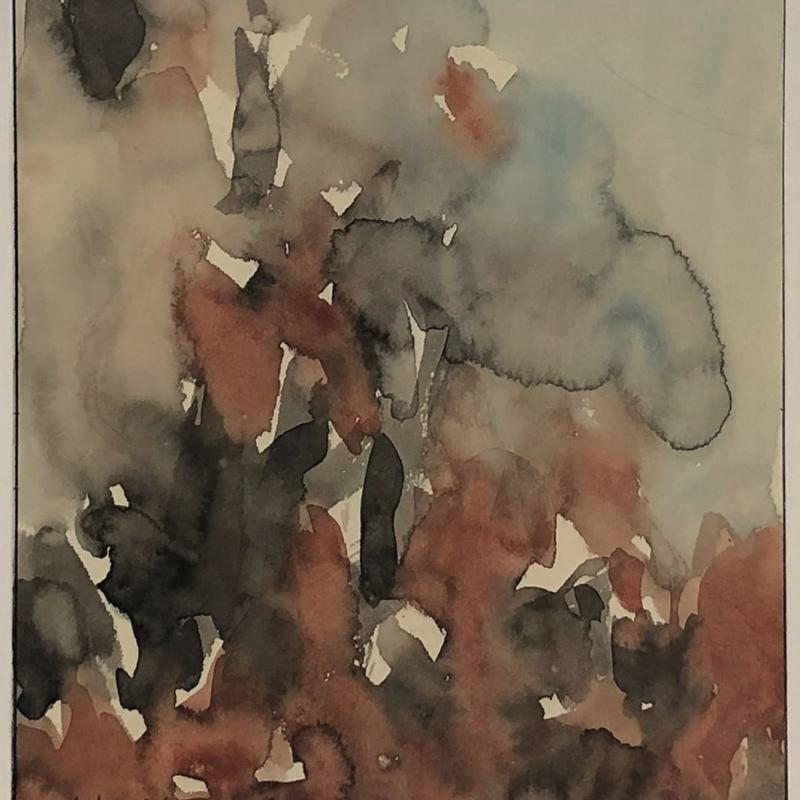 Carl HoltyColor Study #222Watercolor on paperSight size: 6 1/2 x 5 1/2 inches,
Carl HoltyColor Study #222Watercolor on paperSight size: 6 1/2 x 5 1/2 inches,
Framed:14 1/2 x 13 1/3 inchesSigned: Holty lower left, Marked: 222 (verso)
-
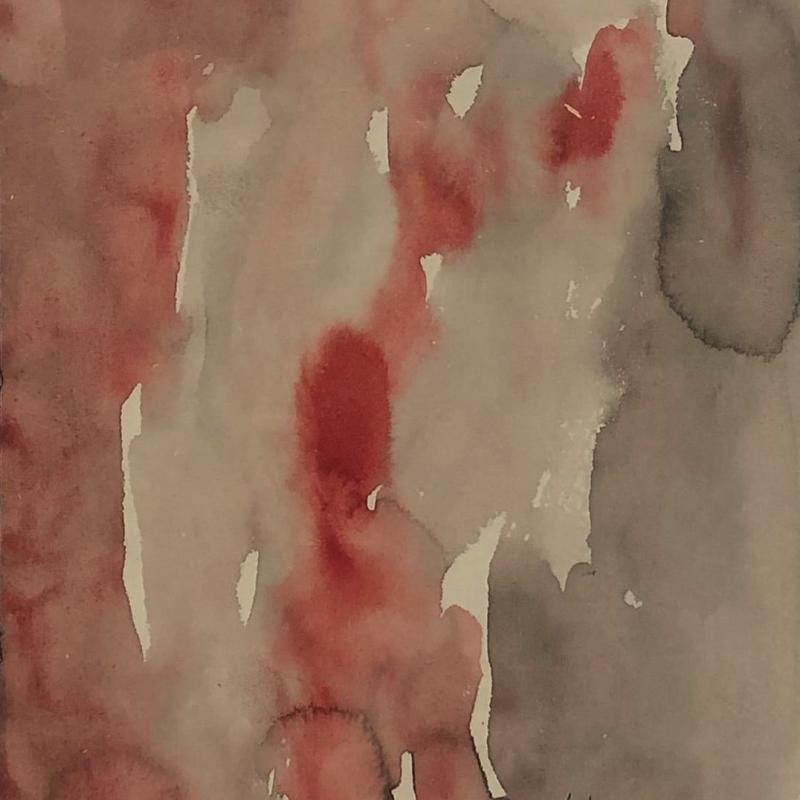 Carl HoltyColor Study #227Watercolor on paperSight size: 6 1/4 x 5 1/2 inches,
Carl HoltyColor Study #227Watercolor on paperSight size: 6 1/4 x 5 1/2 inches,
Framed: 14 1/2 x 13 1/2 inchesSigned: Holty lower right
-
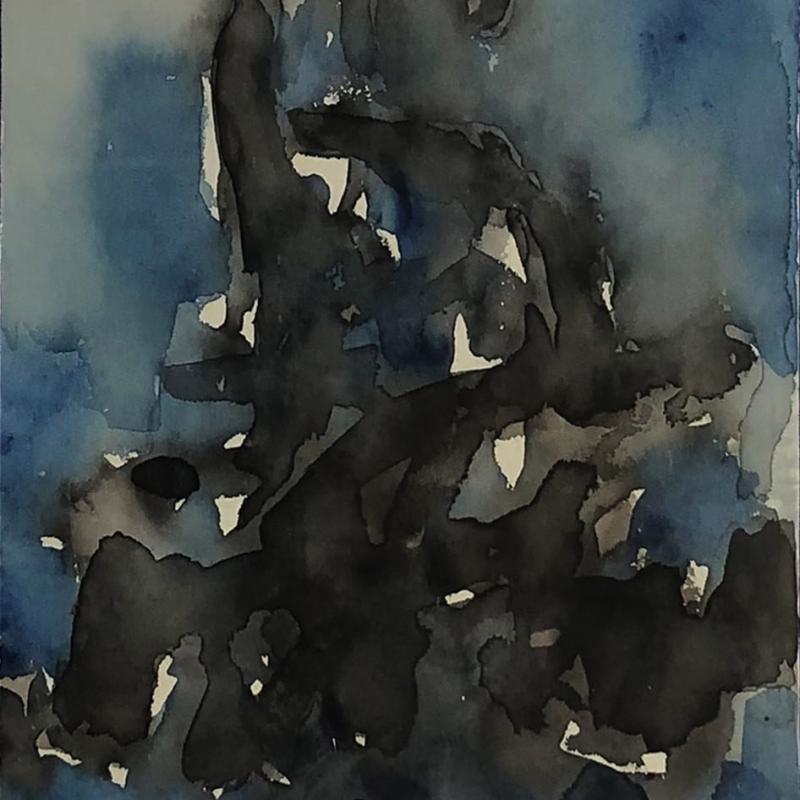 Carl HoltyColor Study #253Watercolor on paperSight size: 6 1/4 x 5 1/4inches,
Carl HoltyColor Study #253Watercolor on paperSight size: 6 1/4 x 5 1/4inches,
Framed: 14 1/2 x 13 1/2 inchesSigned: Holty Estate signature stamp lower right
-
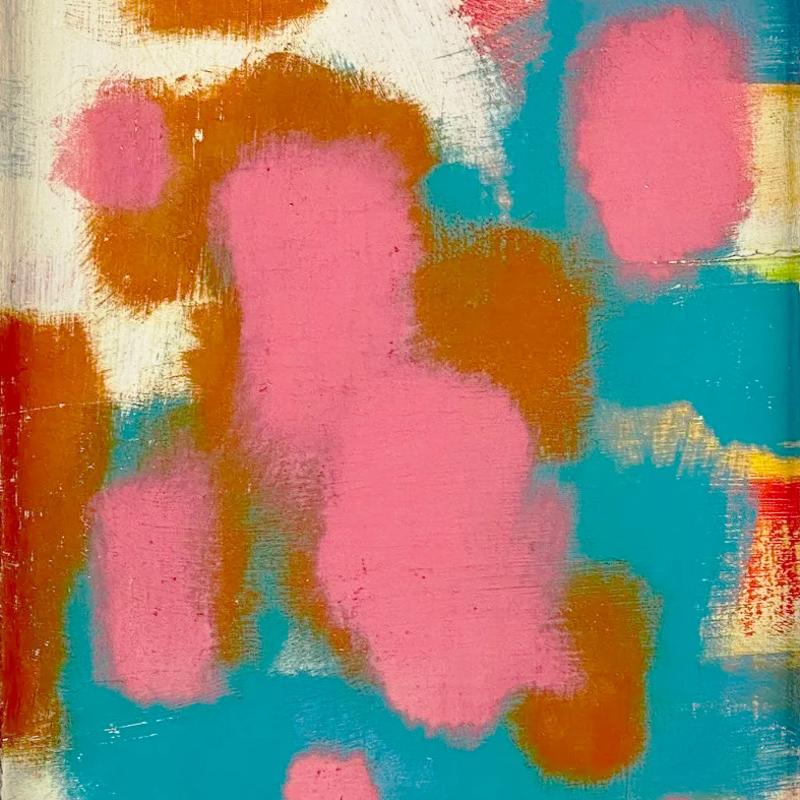 Carl HoltyColor Theory #8 Pink Blue WhiteOil on canvas mounted to Masonite11 3/4 x 8 5/8 inches
Carl HoltyColor Theory #8 Pink Blue WhiteOil on canvas mounted to Masonite11 3/4 x 8 5/8 inches
Framed: 20 x 17 inches
-
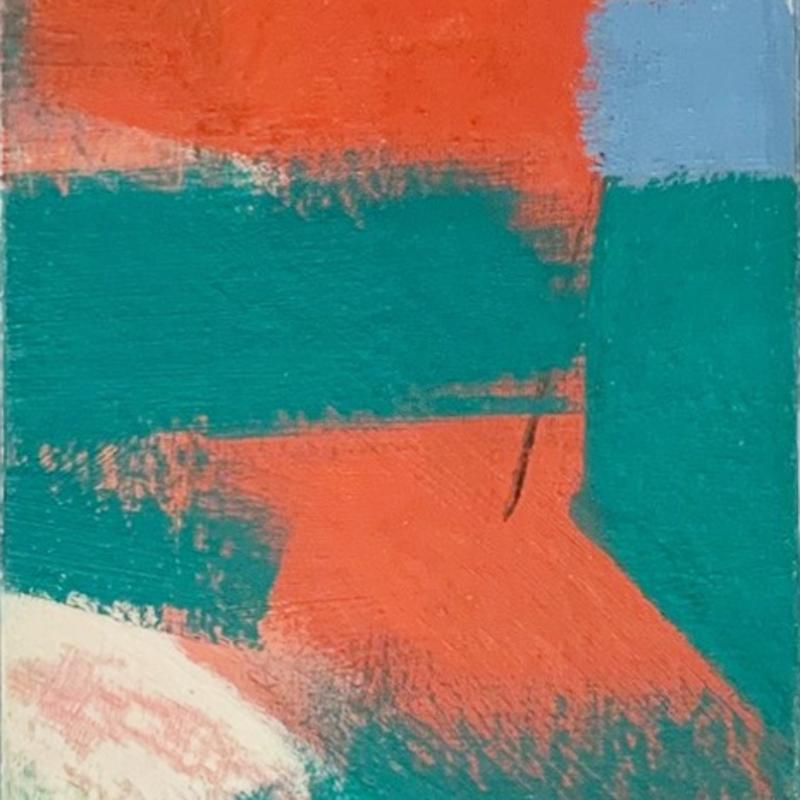 Carl HoltyColor Theory: Red, White, Blue, Green #548Oil on canvas on Masonite10 1/2 x 6 1/4 inches,
Carl HoltyColor Theory: Red, White, Blue, Green #548Oil on canvas on Masonite10 1/2 x 6 1/4 inches,
Framed: 20 x 17 inchesSigned: lower left
-
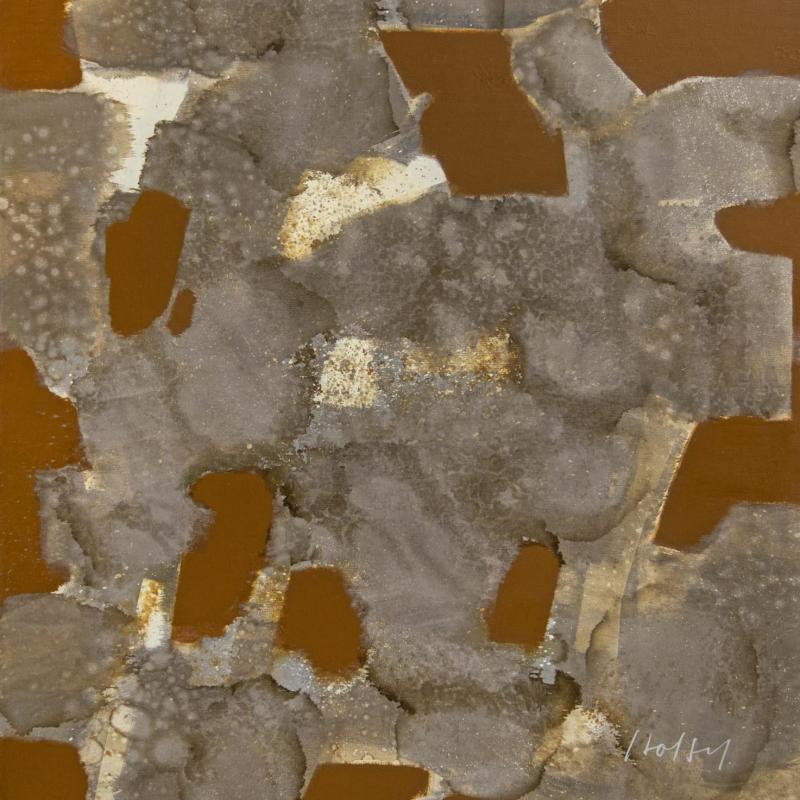 Carl HoltyGray Stains with Burnt SiennaOil on canvas52 x 48 inches Framed: 54 x 50 inchesSigned: Holty lower right
Carl HoltyGray Stains with Burnt SiennaOil on canvas52 x 48 inches Framed: 54 x 50 inchesSigned: Holty lower right
-
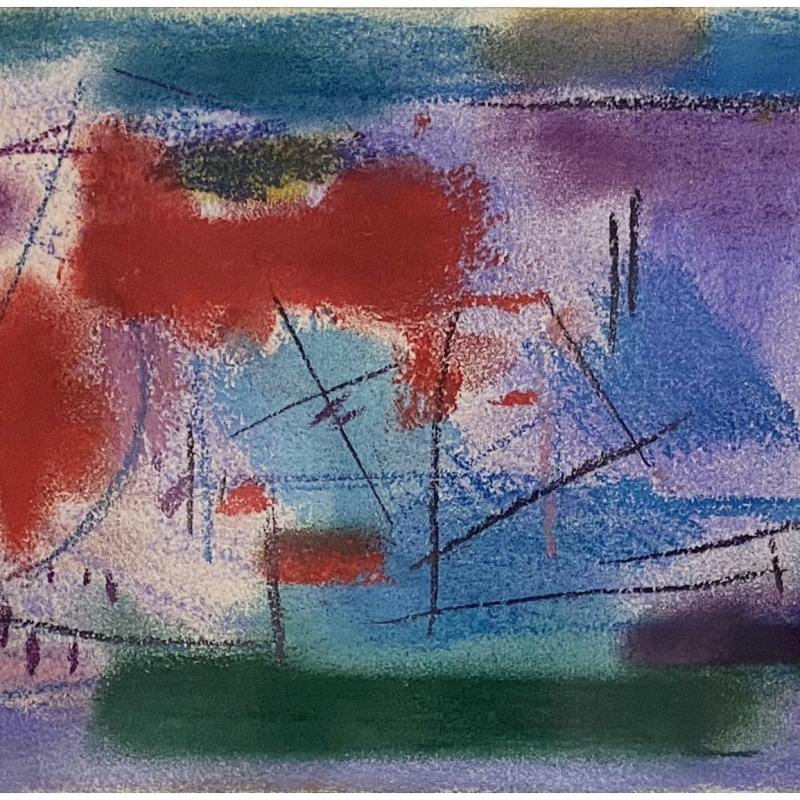 Carl HoltyUntitled #701Pastel on paper7 x 10 inches,
Carl HoltyUntitled #701Pastel on paper7 x 10 inches,
Framed: 15 1/2 x 18 1/2 inchesUnsigned, Marked: Estate of Carl Holty stamp, verso
Overview
The German-born American Abstractionist Carl Robert Holty became known for his biomorphic abstract forms as well as his geometric abstractions that he painted with a vibrant color palette. Indelibly linked to both the Abstract Expressionist and Geometric Abstractionist art movements, Holty was a major proponent of Modernism in the United States and was a contributory influence to the world of American painting. By the 1960's Holty was creating paintings that were dominated by large color fields rendered with thinly washed fluid areas within subtly toned spaces that revealed the influences of such Abstract Expressionist artists as Morris Louis and Helen Frankenthaler. A student of Hans Hofmann and his color theories of expanding dimensions and exuberant colors in abstractions, Holty created large, soft-edged color forms that were either mixed or floated on chromatic stains, experimenting with the relationship of space and form within a two-dimensional plane. In his own words Holty explained:
"No one had ever talked to me about conceptual drawing, about knowing what I'm looking at from the point of view of my tactile knowledge as well as my visual knowledge. Hofmann did. And the world opened up just like that."
Holty experimented with the relationship of space and form within a two-dimensional plane. His works in many ways can be viewed as a celebration of color. There are no obvious images, only large forms that create a rhythmic movement of subtle, toned-down colors and shapes with differing densities. Such works challenged the American art world to look at art in a bold and new fashion. This advocacy for new and cutting edge kinds of works helped to establish Holty as a leading American abstract painter. Along with his friends Stuart Davis and Vaclav Vytlacil Holty established the ground-breaking group that came to be known as the American Abstract Artists. Throughout his life as an artist, Holty was constantly developing his vision of abstraction. An icon in the annals of American contemporary art, Holty is best remembered for his use of color, shape and form.
Museums and Public Collections
Amon Carter Museum
Archer M Huntington Art Gallery, University of Texas, Austin
Brooklyn Museum, New York
Butler Institute of American Art, Youngstown, Ohio
Carnegie Institute Museum of Art, Pittsburgh
Krannert Art Museum
Metropolitan Museum of Art, New York
Milwaukee Art Institute
Minneapolis Institute of Art
Museum of Modern Art, New York
Smithsonian American Art Museum
Solomon R Guggenheim Museum, New York
Whitney Museum of American Art, New York
Exhibitions
Milwaukee Art Institute, 1933, 1935, 1980
Carnegie Institute, 1946
Whitney Museum of American Art, 1944, 1945
Kootz Gallery, 1945, 1948
New Art Circle, 1944
Nierendorf Gallery, 1938
Audubon Association, 1945
Art Institute of Chicago, 1936, 1939
World's Fair, New York, 1939